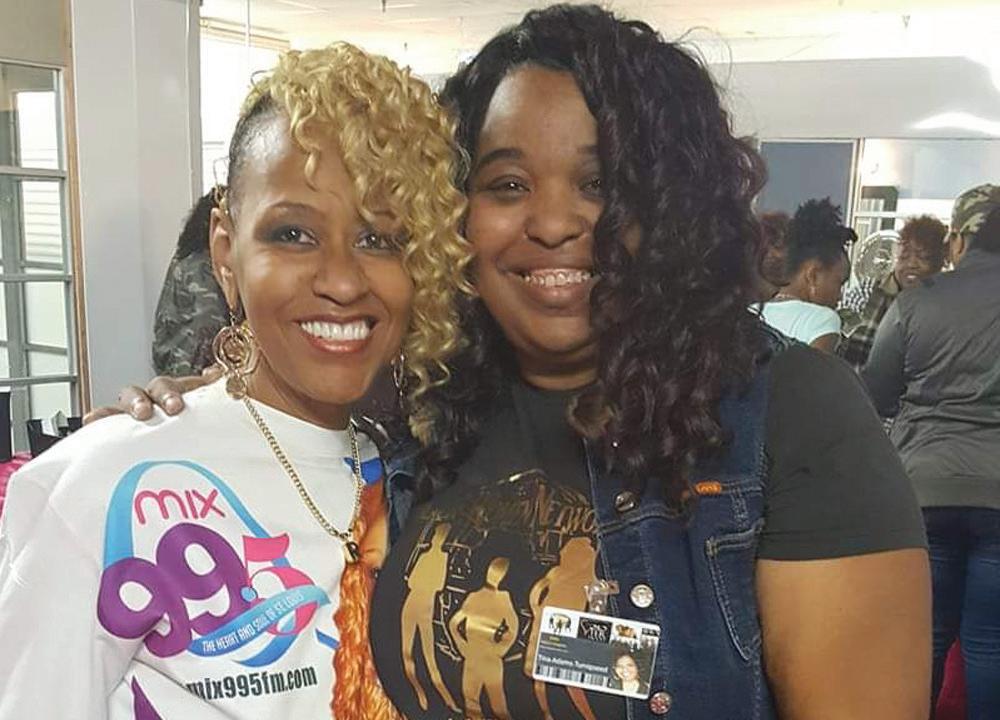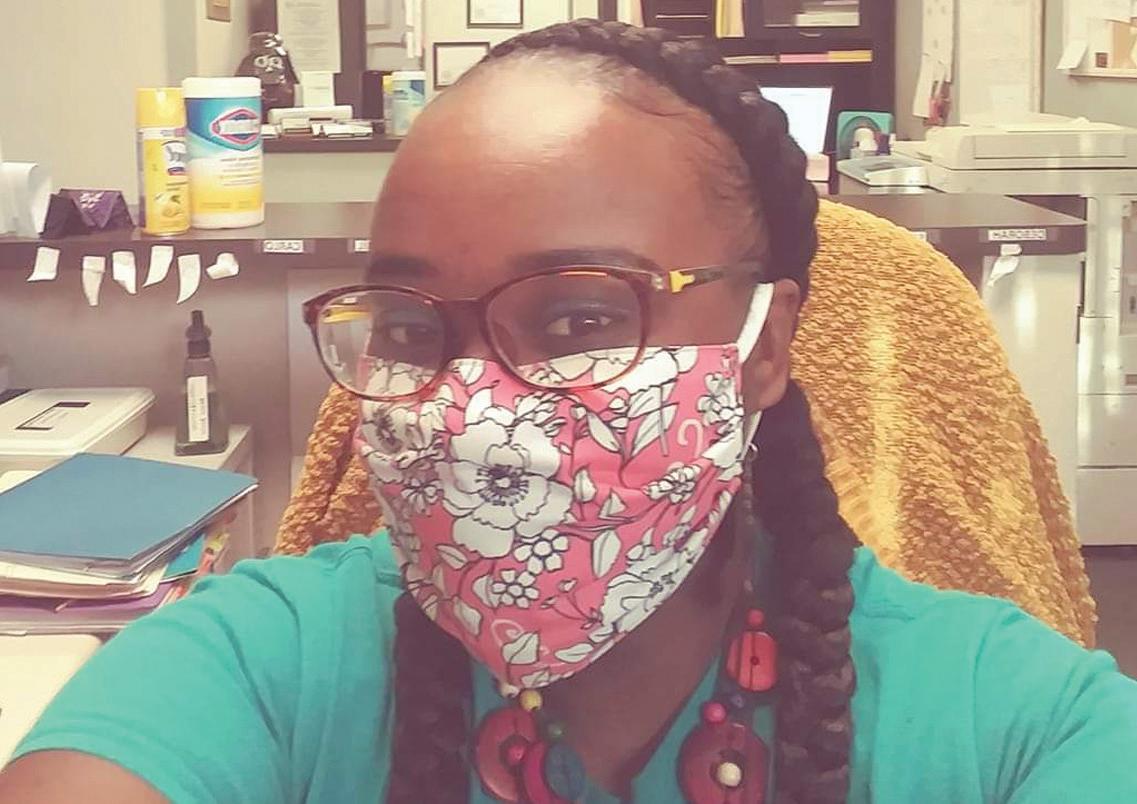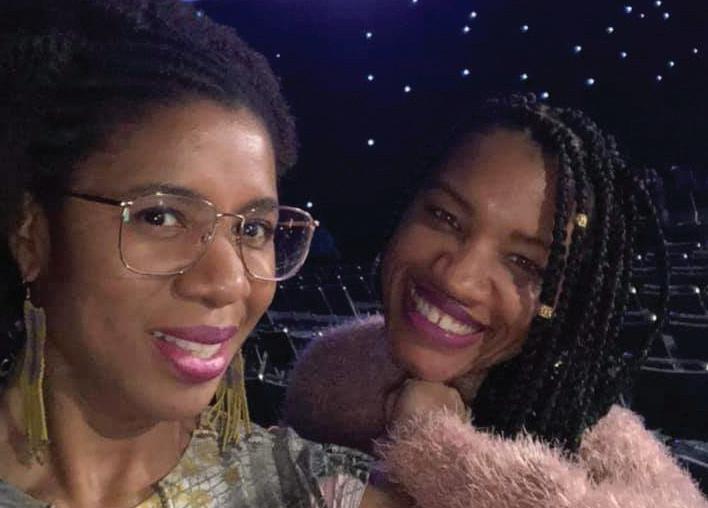






By Chris
There was real talk about the COVID-19 pandemic as it is playing out in the St. Louis region at the opening of a new testing site in North County on Tuesday, April 21. Michael McMillan, president and CEO of the Urban League of Metropolitan St. Louis, said testing needs to be freely available in the communities hit hardest by the pandemic.
“African Americans are dying from this disease at exponentially higher rates in North St. Louis and North St. Louis County,” McMillan said.
North St. Louis finally has COVID-19 tests –but now needs PPE
By Rebecca Rivas
Of The St. Louis American
CareSTL Health, which operates three testing sites in North St. Louis city, is running out of Personal Protective Equipment (PPE) for employees, its CEO Angela Clabon said on Friday, April 17. Its orders for masks, gowns and gloves have been delayed, she said.
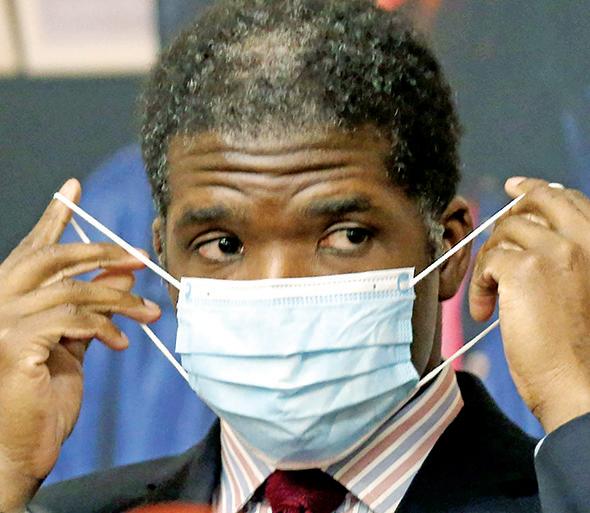
Dr. Fredrick Echols, director of the St. Louis Department of Health, put on a protective mask at a press conference on April 16. Health centers are running out of equipment to protect staff.
CareSTL Health just received 1,000 test kits, she said, and its testing supplies are finally where they need to be. The new challenge is acquiring PPE.
“I will not test without PPE supplies,” Clabon said. “I won’t do that to my staff. I have all the powers to be trying to get more – from the governor to the mayor, everyone is working on trying to get more.”
Clabon said that the other Federally Qualified Health Centers (FQHCs) that are operating testing sites in the areas hardest hit by the pandemic — which is largely North St. Louis County and North City — are experiencing similar struggles. Affinia Healthcare, another FQHC operating testing sites, said it has enough PPE supplies for now, but its orders have been reduced. Affinia is opening three new testing sites this week: one in Jennings, one in North St. Louis city and one in
St. Louis County Executive Sam Page said that the county would be administering $175 million in federal COVIC-19 relief funds. He reminded the public and media that he had asked the County Council to route the bulk of those funds to the communities hit hardest.
The County Council considered the matter Tuesday evening, but Republican council members blocked it.
“It should be not an equal but an equitable distribution,” Page said. Equitable means that resources are distributed according to
See PANDEMIC, A7
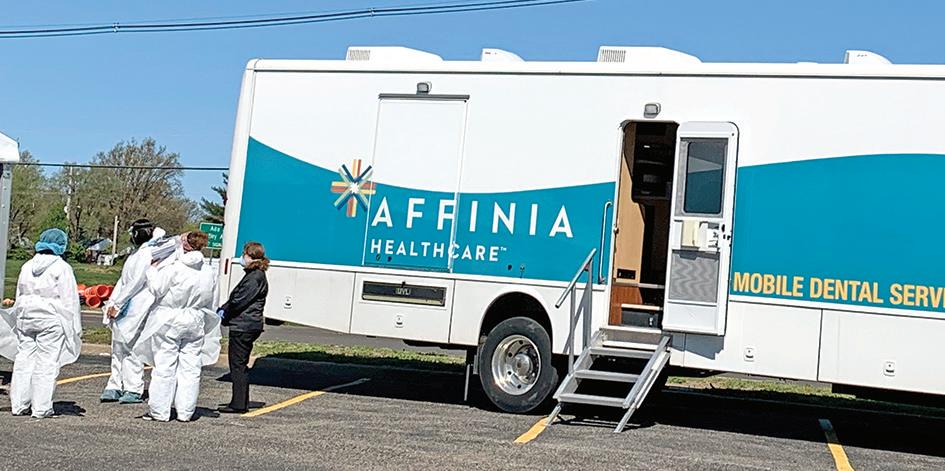

Wellston resident Ashley Franklin taught her son Moquion Franklin how to ride his bike on Monday, April 20. The 6-year-old boy is a student at The Kindergarten Center in the Normandy Schools Collaborative. All public schools in Missouri have shifted to remote learning for the rest of the semester to slow the spread of COVID-19.
Shackelford Rd. in Florissant. The district distributes meals at the Savoy 10:30 a.m. to 12:30 p.m. Mondays and Wednesdays. On Mondays, breakfast and lunch items for two days are served. On Wednesdays, breakfast and lunch items for three days are served.
The district distributes five days of breakfast and lunch items at Trinity Church Parking Lot 11 a.m. to 1 p.m. Thursdays.
The district is working with other partners and potential partners and hopes to have additional distribution points available soon, according to Superintendent Joseph Davis. Riverview Gardens is distributing drivethrough meals (and assignment packets) 10 a.m. to noon Tuesdays at Zion Travelers Church, 351 Chambers Rd., and 10 a.m. to noon Thursdays at Dellwood Recreation Center, 10266 West Florissant Ave. Students do not need to be present. Social
‘It’s going to take time’
region nears COVID-19 peak, public
By Rebecca Rivas
Of The St. Louis American
The St. Louis region is still projected to reach its peak of hospitalizations due to the COVID-19 pandemic around Saturday, April 25 — where up to 1,500 people could be hospitalized at any one time.

Bruce Thompson practiced good public safety protocol while waiting for the bus in the city’s St. Louis Place neighborhood on Monday, April 20.
“What’s concerning is anticipating what will happen when we do have to start relaxing some of the social-distancing and the shelterin-place rules,” Dr. Alex Garza, chief medical officer for SSM Health, said on Saturday, April 18. “Looking forward is more what concerns me than looking at the present data.” Garza is the incident commander for the St. Louis Metropolitan Pandemic Task Force. The task force includes four major health care systems: BJC HealthCare, Mercy, SSM Health and St Luke’s Hospital. Every day, Garza gives a briefing on the task force’s COVID-19

No coronavirus release for Bill Cosby
Reps for Bill Cosby told celebrity gossip column Page Six that the currently incarcerated comedy legend was likely to be released because of COVID-19 fears. But Page Six the Department of Corrections that houses him disputes the claim.
Cosby’s legal team was reportedly planning to file a petition to get him released from the prison where he is serving three to ten years for sexual assault.
“in contact with sources close to [the] governor and they were informed that Gov. Wolf felt that Mr. Cosby should be released and remanded to house arrest, due to his age and blindness.”
But when Page Six reached out to the Pennsylvania Department of Corrections to confirm, they were said to have denied the claims from Cosby’s camp.

The plans for petition came after Pennsylvania’s Gov. Tom Wolf ordered the state’s DOC last week to establish a program to move some prisoners to community corrections facilities or their homes to prevent the further spread of COVID-19. At Phoenix SCI, where Cosby is currently incarcerated, there have been 22 positive cases and one death.
“We strongly feel that Mr. Cosby will be released and remanded to house arrest in the upcoming weeks,” A rep for Cosby reportedly told Page Six. “Mr. Cosby is 82 years old; Mr. Cosby has an underlying medical condition — blindness” — and cannot practice “social distancing because he has to rely on the aid of others.”
The rep claimed that Cosby’s team has been
“Based on the criteria exempting sex offenders and knowing his highly publi cized case, he would not qualify,” the rep for Pennsylvania’s Department of Corrections reportedly said.
According to the governor’s office, the pro gram “applies to state prison inmates who have been identified as being nonviolent and who otherwise would be eligible for release within the next nine months or who are considered at high risk for complications of coronavirus and are within 12 months of their release.”
Birdman offers rental assistance in his New Orleans stomping grounds
Cash Money CEO Bryan “Birdman” Williams is coming to the rescue of those within the New Orleans community he once called home in response to COVID-19.
Louisiana is one of the states
most heavily hit by the virus and Williams took to social media to announce that he was doing his part to lend a hand.
On Instagram, the hip hop mogul announced that he is offering to pay next month’s rent for an entire neighborhood where he was raised in New Orleans.
“I would like 2 offer to pay everybody rent for [the] month of May (for those in need) in [the] residents’ area of UPTOWN [New Orleans] where I was born and raised at,” (sic)
of 2020.
“As everybody knows, I had been with ‘The Rickey Smiley Morning Show’ for a little bit over 12 years,” Juicy said in a video posted to her YouTube account.





Birdman then thanked multiple people for helping him accomplish this huge gesture. He also sent a special thank you to those on the

Miss Juicy explains going MIA from ‘Rickey Smiley Morning Rickey Morning ” co-host has addressed her absence. She lineup since just before when he retired at the start
She told fans the reason for her delayed response was “out of respect for my colleagues – and respect for my boss, Rickey Smiley.”
“It’s bittersweet because after twelve years you’ve grown to know people as family – or so you thought,” Juicy said. “The chemistry, the love, the connections… everything.” Juicy said that misinformation by the show’s new producers compelled her to speak out after they claimed that her leaving the show was because of filming conflicts with “Little Women of Atlanta.”
She said this couldn’t be true because another member of the radio show also films a reality show in the same city. Juicy didn’t name names, but Eva Marcelle is a co-star of “Real Housewives of Atlanta.”
“In my opinion, if something is going to be said, I felt like it should have been the truth,” Juicy said.
She says that the actual reason for her departure was because she wasn’t offered a new contract when the show changed over to the Urban AC market in Joyner’s slot.
“My lawyers worked very hard to get them to offer something – anything – and was offered nothing,” Juicy said. “At that time, I had to realize what my worth was.”
Sources: Instagram.com, Page Six, YouTube.com


By Rebecca Rivas Of The St. Louis American
Do elected prosecutors in Missouri have the power to investigate wrongful convictions and ask for a new trial when they feel a person is innocent?
That is the question that attorneys for St. Louis Circuit
Attorney Kimberly Gardner and Missouri Attorney General Eric Schmitt debated before the Missouri Supreme Court today (April 14.)
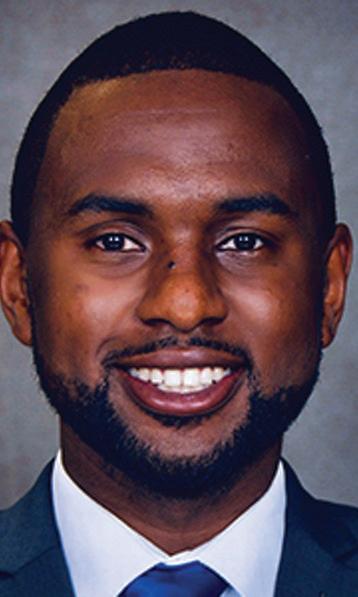
The question revolves around the case of Lamar Johnson. Gardner believes he is innocent of a 1994 murder for which her office convicted him and has asked for a new trial. Schmitt has argued all the way to the Missouri Supreme Court that Gardner does not have the authority to bring new evidence before a court in an old conviction, though Johnson has other options for seeking relief.
wrongful convictions, in Gardner’s and St. Louis County Prosecutor Wesley Bell’s offices. “What is the circuit attorney’s obligation in seeking to undo a wrongful conviction?” said attorney Daniel Harawa, arguing on behalf of the circuit attorney. “An elected prosecutor must have the ability to present the evidence that she has found credible.”
Harawa, an assistant professor of Practice and director of the Appellate Clinic at the Washington University School of Law, explained that Gardner’s Conviction Integrity Unit conducted a yearlong investigation in the Johnson case, and Gardner must have the ability to present this evidence to a court.
“All we are asking for is a court to hear this evidence,” he said.
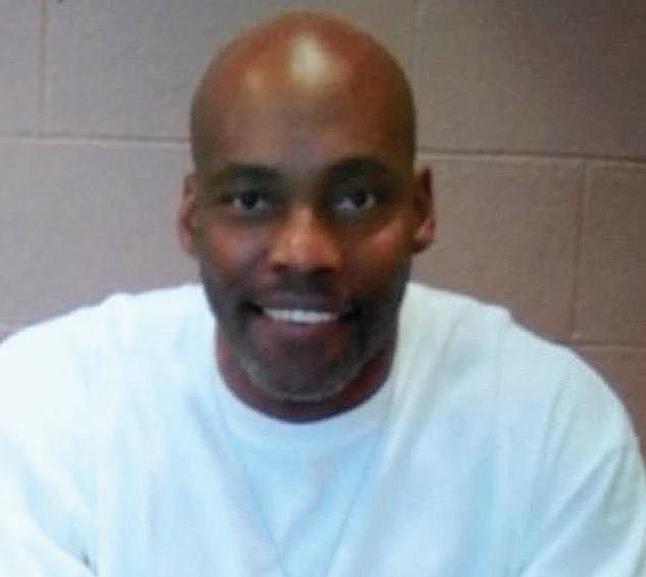
nism. We are much more likely to reach the truth of the matter if the prosecutor is the party that can raise the issues to the court.”
– Daniel Harawa
The attorney general’s representative argued that Gardner could investigate wrongful convictions, but then she would have to turn over the evidence to the people sitting in prison and their lawyers for them to present it in court themselves. Gardner could be a “witness” in their plea for innocence, according to the AG’s rep.
The Supreme Court’s decision has the ability to render powerless the newly established Conviction Integrity Units, which investigate possible
The oral arguments were conducted remotely, because of the COVID-19 pandemic, and the judges did not introduce themselves before speaking. One Supreme Court judge said, “That’s not a very efficient mecha-
The judges asked the AG’s rep. several times what mechanism prosecutors have to bring forth new evidence to be reviewed in a court. He replied that there is no current mechanism to do that.
Twenty-four years ago, Johnson was convicted of murdering Marcus Boyd on October 30, 1994, though evidence shows that Johnson was at a friend’s house and would not have been able to commit the crime. He was sentenced to life in prison without the possibility of parole.
As Harawa pointed out, the eyewitness evidence – since recanted – was about a masked gunman seen only briefly at night.
In July, Gardner’s prosecutors

Twenty-four years ago, Lamar Johnson was convicted of murdering Marcus Boyd on October 30, 1994, though evidence shows that Johnson was at a friend’s house and would not have been able to commit the crime.
asked Circuit Judge Elizabeth Hogan to set aside Johnson’s 1995 murder conviction. Gardner’s team alleges that former prosecutors and police fabricated evidence to get the conviction of an innocent man.
Hogan brought in Schmitt to represent the state, which is what voters elected Gardner to do.
Through 2018, Conviction Integrity Units across the country had been responsible for producing 344 exonerations nationwide, according to a brief submitted to the Supreme Court that was signed by 45 prosecutors throughout the country.
“A loss in this case could also send a message to those who are trying to undermine the work of elected prosecutors nationally who are looking to increase accountability,” said Miriam Krinsky, executive director of Fair and Just Prosecution. “And it could
embolden those who are trying to push back on these reform-minded leaders.”
The brief argues that nationally Conviction Integrity Units have grown into a “recognized benchmark” for local prosecution offices, and they are now “well-settled vehicles” for reviewing and seeking to overturn convictions when there is evidence of actual innocence or misconduct by prosecutors or law enforcement. By the end of 2018, such units operated in 44 jurisdictions across the country, including in many of amici’s own cities and counties.
“Although prosecutors serve as legal representatives of the state,” the brief states, “they are not onedimensional advocates charged with obtaining convictions and resisting the reversal of a wrongful conviction at all costs.”
By joining together, we can help those struggling to pay their natural gas bills because of the coronavirus pandemic.
That’s why we’ve committed up to $500,000 in matching gifts through DollarHelp.
When you add $1 a month to your natural gas bill or increase your existing DollarHelp pledge, we’ll match your first-year contribution.
To have your gifts matched through May 31, 2020:
• Sign up for DollarHelp online by logging into MyAccount.SpireEnergy.com
• Check the box on your bill and send it in with your payment
People helping people. Communities lifting up communities.
Visit SpireEnergy.com/DollarHelp to learn more.

‘We
The black voters who did not support Joe Biden in the Democratic Primary – which ended definitely on April 13 with Bernie Sanders’ endorsement of the front-runner – rankle at the notion that black voters are a monolith. To be clear: there are many black voters, not one black vote.
Even in Missouri, where Biden won 60 percent of the vote with 21 other Democratic candidates on the ballot and beat Sanders by almost 170,000 votes, Sanders garnered a substantial number of black voters. According to National Election Pool exit polls, 24 percent of black voters in Missouri chose Sanders. Given that Sanders crushed Biden among younger Missouri voters (age 18-29) by a 70-25 percent margin, according to these exit polls, it stands to reason that younger black voters remain to be won over by the Democratic nominee. The Biden campaign and the DNC have less than 200 days before the November 3 General Election to win them over. Soon after Sanders endorsed Biden – the timing, to be sure, was deliberate – former President Barack Obama finally endorsed his former running mate and vice president. The crux of his argument bears repeating and putting into action.
stripes to get involved in our politics and our public life like never before.”
Even with the support of Sanders and Obama, Biden and the DNC have much hard work to do in winning more progressive voters over to an establishment figure (albeit an establishment figure who helped an historic black change agent win the White House and govern ably). They need to remind voters of the major improvements President Biden would bring in crucial areas such as the federal judiciary, voting rights, environmental protections, health care, union organizing, consumer protections, access to higher education, abortion rights, Wall Street regulations, Social Security, affordable housing, urban policy, African policy, immigration policy, police accountability, mass incarceration, affirmative action, gay rights, civil liberties, income inequality and racial divisiveness.
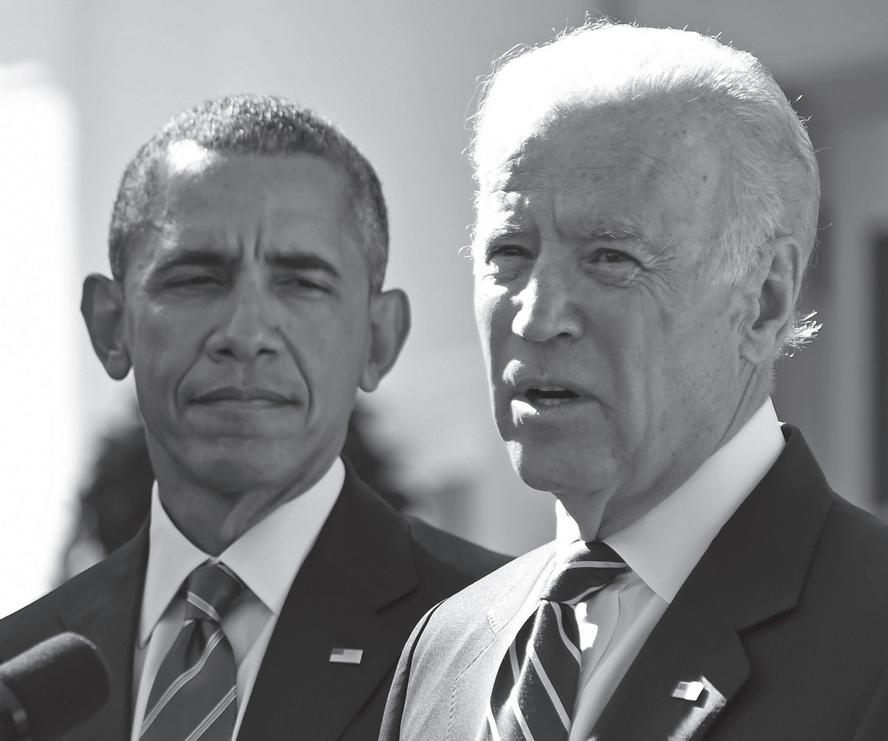
“Our country’s future hangs on this election. And it won’t be easy. The other side has a massive war chest. The other side has a propaganda network with little regard for the truth. On the other hand, pandemics have a way of cutting through a lot of noise and spin to remind us of what is real, and what is important. This crisis has reminded us that government matters. It’s reminded us that good government matters. That facts and science matter. That the rule of law matters. That having leaders who are informed, and honest, and seek to bring people together rather than drive them apart – those kind of leaders matter,” Obama said.
“In other words, elections matter. Right now, we need Americans of goodwill to unite in a great awakening against a politics that too often has been characterized by corruption, carelessness, self-dealing, disinformation, ignorance, and just plain meanness. And to change that, we need Americans of all political
Whatever his limitations, the election of Biden would bring an immediate improvement in all of these areas of our lives and more. He also would inject decency and sanity into our national life in our most powerful institution. If we had a president who wasn’t forcing states to compete for life-saving supplies during a pandemic and encouraging ignorant people to rise up against public health officials while a dangerous virus with no known vaccine or cure continues to spread – if only to stop the insanity and damage Trump is doing during the COVID-19 pandemic, we must organize to vote him out of office. Let’s hear Obama one more time and hear him well: “Elections matter. Right now, we need Americans of goodwill to unite in a great awakening against a politics that too often has been characterized by corruption, carelessness, self-dealing, disinformation, ignorance, and just plain meanness.” Right now, we need all Americans of goodwill – and that includes every Democrat or Independent who voted for Sanders, Elizabeth Warren, Kamala Harris or any other promising candidate from this crowded field –to unite and work to defeat the most corrupt, careless, self-dealing, lying, ignorant, dangerous and just plain mean president in American history.
By Dr. Fredrick Echols
For The St. Louis American
By now, you’ve heard the news: In the City of St. Louis, the first 13 COVID-19 associated deaths were African Americans. Now, African Americans account for more than 70% of the coronavirus deaths. This mirrors what’s happening across the nation as the pandemic is killing more African Americans than any other racial group.
On April 16 we released detailed COVID-19 data stratified by race, examining where the disease is striking the hardest. COVID-19 has impacted every ZIP code in the City of St. Louis and continues to sweep across the city, devastating areas with high concentrations of poverty.
In order to slow the spread of COVID-19, the City of St. Louis will continue to implement evidence-informed community mitigation strategies and data-driven decision making. This is necessary to prevent more unnecessary deaths in St. Louis. While COVID-19 has the capacity to strike anyone, higher rates of underlying health conditions in the AfricanAmerican community – such as diabetes and hypertension – coupled with less access to health care and a longstanding distrust of the medical community make African Americans particularly vulnerable. When we think about the long-term health of our community, we have to think about long-term change. To do that, we must call upon all sectors of St. Louis to come together in a new way.
Nontraditional partners have already come to the City of St. Louis Department of Health to ask what they can do to help keep the city’s residents healthy. We’ve had discussions
with clergy, churches, academic institutions and venues that employ thousands of workers. This is a big step toward making St. Louis a place for all to not just merely live, but thrive. This effort must continue after the pandemic ends. To address where we need to go in the future, we need to reflect and understand where we’ve been. In the age of COVID-19, we can’t talk about today’s racial disparities in health without talking about our history.
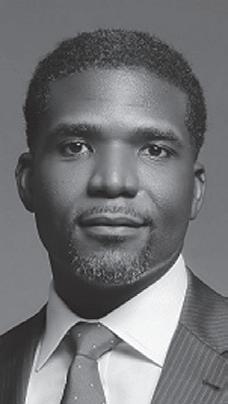
In 2013, Washington University published “For the Sake of All,” a landmark report which found that if we reduced the racial disparity in treatments for chronic diseases like heart disease, cancer and diabetes, St. Louis could save $65 million a year in inpatient hospital charges. In our COVID19 world, we can see that a reduction of those disparities before 2020 would have saved even more lives.
That same study also found residents of St. Louis ZIP codes separated by only a few miles have up to an 18-year difference in life expectancy. History is repeating itself as we see that disparity play out again with COVID-19.
There was a time when it was different in the City of St. Louis. During the 1990s, the City of St. Louis Department of Health had several hundred employees, providing direct health care and essential public health services to St. Louisans.
Residents also once had Homer G. Phillips Hospital, a 728-bed
We must organize the black masses to fight for fair treatment
By Malik Ahmed For The St. Louis American
The COVID-19 pandemic has bought to the forefront the great American divide and the racial fault line of the haves and the have-nots. Thus, it is prudent for the leadership in the black community to speak with one unequivocal voice of outrage.
For years, the health disparities between the well-to-do classes and the black masses have been published, cited and debated. We have grown accustomed to hearing dire health statistics on the AfricanAmerican community but have seen no sustainable actions taken. We have also grown complacent in seeing no additional new financial resources allocated to level the health and wellness playing field.
We have been studied. But a study is only useful when it is followed by meaningful action to alleviate the focus of the study. If this isn’t achieved, then a well-financed study at best becomes the domain of academic literature used as the academy sees fit or at worst thrown into the trash pile of yet another example of governmental inaction.
The vulnerability of our communities to this pandemic should be widely circulated and discussed. To keep data shroud-
ed in secrecy or partially concealed is a crime of the highest order. It would be yet another blatant example of institutional racism.

Our community must speak with a united voice by creating a broad alliance with other progressive communities. This alliance must make a frontal attack on not only the coronavirus health disparity but on all related health issues impacting the black community. We need to demand that our state, county and city health officials provide us with accurate information on the COVID-19 infection rate in the AfricanAmerican community – the ethnic and racial demographics related to testing, hospital stay, treatment modalities, outcomes and the death rate.
We need to demand that a significant portion of the federal $2.3 trillion in stimulus spending be used to address the health issues of AfricanAmerican and other marginalized communities. We need to demand that federally qualified health centers such as Betty Jean Kerr People’s Health
Take the MetroLink test
Those who are urging and protesting to open up the economy should ride the Metrolink end to end and then get on a bus and transfer to another bus. If they do that with no protective equipment, then maybe we should consider starting the economy. Because that is what so many people need to do to get to work. If people can’t safely get to work, then it is premature to open the economy.
hospital in the Ville neigh-
borhood built at the height of segregation in the region, that served African-American patients in North St. Louis until it closed in 1979.
Our communities still feel this void. We know that after this pandemic fades, some of our neighborhoods will be left more ravaged than others. We must start thinking about what long-term recovery needs to look like in St. Louis.
In the public health world, we talk about social determinants of health. Social determinants of health are the environmental conditions where people are born, live, learn, work and play. It includes things like access to jobs, education, health care and emergency and social services, safe and affordable housing, healthy food and green spaces.
For people to live fully, our communities need equitable placement of and access to quality health care, social services, and economic opportunities – these are long-term, effective prevention resources to slow the disease of health disparities.
To make that happen, we need to expand working across all sectors to address the social determinants of health in St. Louis. We need businesses thinking about how they can support a healthy St. Louis. We need nonprofits and places of worship tuned in to how they can help residents and organizations thrive. Also, we all need to recognize how the health of one community affects every community.
We are only as strong as our region’s most vulnerable.
Dr. Fredrick Echols is the director of the City of St. Louis Department of Health. Visit stlouismo.gov for updates on the City of St. Louis’ response to COVID-19.
Steve Wulff, St. Louis
Let’s be proactive, St. Louis
Let’s be proactive, St. Louis, and take the lead on getting everyone tested and tracked. If we wait on the cavalry to come to our assistance that does not look like it’s going to happen. If it’s money we need from the federal government, they have now lied to the nation repeatedly about testing. Let’s galvanize citizens to kick in a $1 or $10 or whatever they are able to fund COVID-19 testing for St. Louis. Give us a number, mayor/ treasurer.
Roz Weathers, St. Louis
Why are more people of color dying?
While there is so much uncertainty about COVID-19 regarding how long the virus will last, there is one thing we all know through the data: more people of color are dying from this virus than other races. Why is this?
William Tate and Kally Xu touch on a few causations of the reason why the virus is so deadly amongst the black population in the health disparities caused by economic and environmental injustice. Higher rates of diabetes and lung and major organ damage make people more vulnerable to this virus.
It’s enlightening to learn the St. Louis County executive and his team are doing more to assist communities at this time that is not just focused on one subject such as sanitizing but rather the entire domino effect this virus is having on families that rely on school systems to
Centers and CareSTL Health and local hospitals be provided with surplus financial and medical resources to handle the surge of patient services related to coronavirus and the related explosion of chronic illnesses impacting vulnerable populations. We need to demand that community schools, that have been closed, be re-opened and restructured as community testing and treatment sites. And we need to demand that community and grassroot organizations such as Better Family Life be provided with the financial resources to mobilize marginalized communities on the ways and means of protecting ourselves from contracting the novel coronavirus, how to gradually reduce chronic diseases and preventable illnesses, better ways to manage pre-existing health issues, and practical guidelines of achieving optimum health outcomes. Protective healthcare, the deescalation of community gun violence along with economic empowerment, criminal justice reform, and environmental justice are some of the new fronts of a revitalized human and civil rights struggle. We must organize the black masses to stand up for equitable treatment. Malik Ahmed is CEO of Better Family Life.
All letters are edited for length and style.
not only educate their children but also provide them with meals.
This circumstance is a conundrum of sorts because there are so many ways that a community can be helped. But there is also the harm that can be done to those who want to show up to help, which could result in death. Overall, we have to strive to both stay vigilant and safe while trying to preserve the most vulnerable the best we can.
In the immediate term, younger people need to take steps to prevent passing it to their elders such as recommended hand washing and sixfeet social distancing. However, long term, we as a community need to address the social and environmental injustices that are leading to health and economic disparities within the black community.
Trisha Boyle, Via email
Needed: nationwide ban on evictions and foreclosures
COVID-19 pandemic is greatly exacerbating the plight of low-income and workingclass renters. Even before the outbreak, families seeking affordable housing were in crisis; over the past several decades rents have vastly outpaced the median earnings of renters. With the massive unemployment caused by the coronavirus, the situation has become only more dire. While the recently-enacted CARES Act has provided some relief, more must be done. We should call on U.S. Senators Roy Blunt and Josh Hawley, and U.S. Representatives Wm. Lacy Clay and Ann Wagner, to make sure that the next relief bill goes farther to help renters, including a nationwide ban on evictions and foreclosures, and substantial appropriations for emergency rental assistance. Looking further ahead, Congress should pass a national “renters tax credit”, which would provide a rebate for rent paid in excess of 30% of a family’s income Greg Campbell, Creve Coeur




Spanish Lake resident and competitive kayak bass angler D.J. Williams, 34, spent his last day fishing in Spanish Lake Pond before Spanish Lake Park closed on April 3 to slow the spread of COVID-19. He has been fishing since he was 6 and had planned to compete that weekend in the KBF National Championship in Guntersville State Park in Alabama before it was postponed because of the pandemic.
The nonprofit Hunter Brooks Watson Memorial Fund is accepting applications through June 15 for competitive grants from $500 to $5,000 for people between the ages of 16 and 25. Its focus is on providing financial assistance to help passionate young men and women further their interests and innovative ideas in fields such as the performing arts, technology, music and entrepreneurship. Applicants need not be in high school or college, only to have demonstrated enthusiasm and passion in developing a new idea or business. The fund was created in honor of Hunter Brooks Watson, a young man tragically killed as a passenger in a distracted driving accident just prior to entering his junior year at Syracuse University. For information or to apply for free, visit www.hunterwatson.org.
The Missouri Bar offers a free Durable Power of Attorney for Health Care and a Health Care Directive form, in English and Spanish, at no charge to Missourians. The form, drafted by licensed Missouri lawyers, puts your decisions in writing and allows you to designate an agent to carry them out. The forms are available by calling 573-635-4128 or online at https:// tinyurl.com/MOBar-durable. To learn more about advance health care planning, directives and other tools for starting the conversation, visit TheConversationProject.org/NHDD.
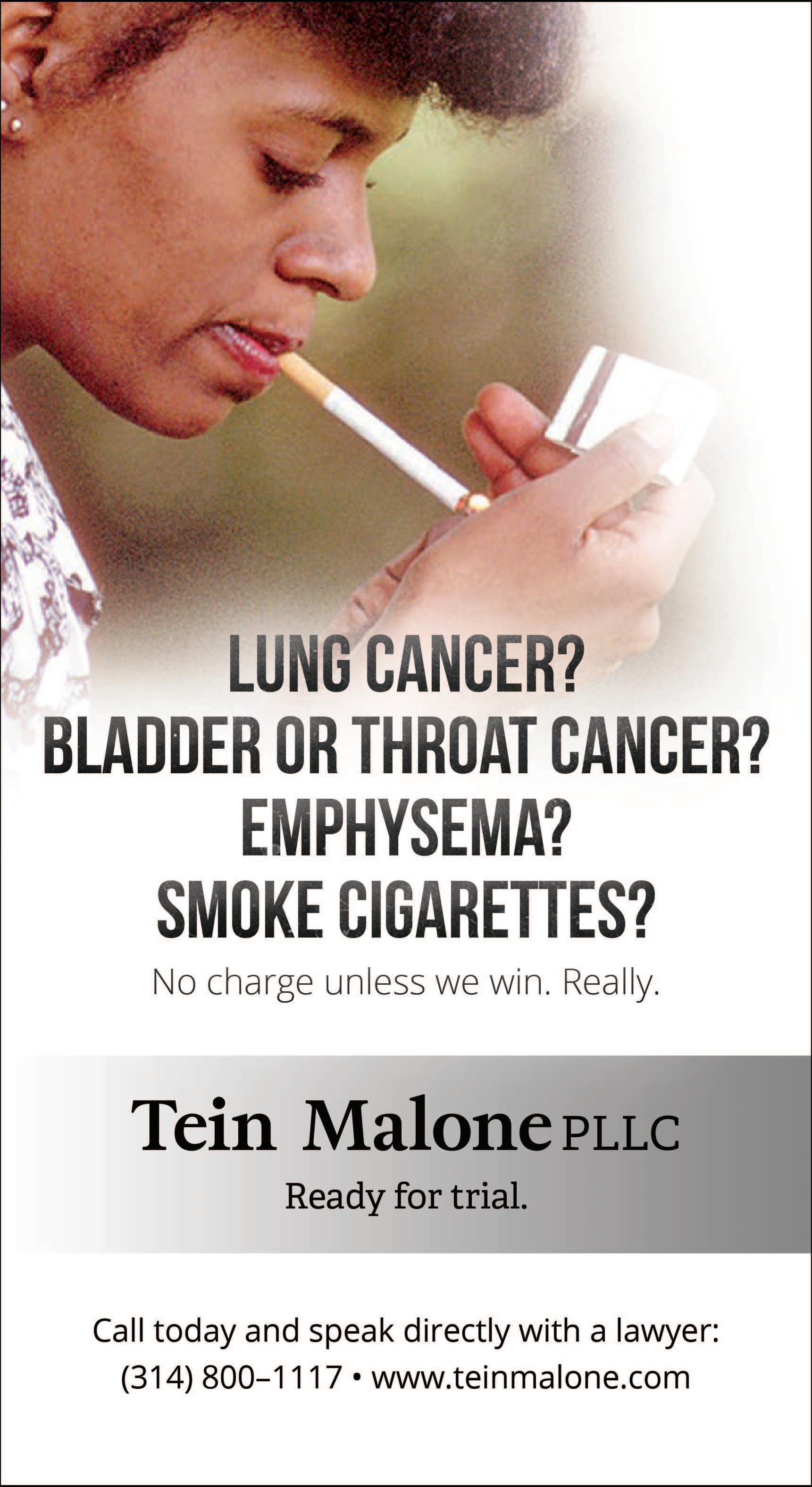
We have to stay on the front lines
By Angela Clabon For the St. Louis American
The African-American population lags behind the white population on many health indicators, like socio-economic factors, behavioral risk factors, and emergency room visits. Socio-economic factors include expected pay source for emergency room visits, median household income, families with children below poverty level, and high levels unemployment. Additionally, there are behavioral risk factors and chronic conditions like the lack of cancer screenings, and chronic disease risk factors like diabetes and asthma. Finally, emergency room visits for things like congestive heart failure, hypertension, epilepsy, osteoarthritis, dental, mental health, and alcohol/drug use are common occurrences.

COVID-19 has arrived in St. Louis and attacked the AfricanAmerican community with a vengeance. As the CEO of CareSTL Health (formerly Myrtle Hilliard Davis), a federal qualified health center, we are doing all we can to get people tested and to prevent the spread. We are working under calamitous conditions, transforming our facilities for urgent operations, coping with shortages of protective equipment, limited testing kits, and staff putting themselves at risk for exposure. We have to stay on the front lines, because if we don’t, our community will go unchecked and untested. For months, health centers like CareSTL Health have been operating under a temporary mandatory funding measure. This has made it challenging to hire providers, plan services or expand capacity. This need is especially serious because COVID-19 has made matters worse. Without resources, it is estimated that within three months over one-quarter of health centers will have exhausted funds to pay operating expenses and another 25 percent will have less than one month’s worth of cash on hand. Many health centers are already initiating staff layoffs and consolidating operations as cost-cutting measures and have shut down their dental operations. In some communities, health centers are employing telehealth to safely screen patients. The situation is dire.
According to the National Association of Community Health Centers, health centers like CareSTL Health, are experiencing severe declines in primary and preventative care visits due to a host of factors that include personal protective equipment shortages, government “stay-at-home” orders, and expectations that “non-essential” services be delayed. Estimates show that over the next six months health centers will have 34 million fewer visits, leading to $7.6 billion in lost revenue, and ultimately costing 100,500 jobs. This is the case here in St. Louis as well.
We need immediate funding from both public and private sector entities in recognition of the critical role community health centers, like CareSTL Health and others, are playing serving on the front lines of the COVID-19 pandemic, and the drastic revenue losses we are experiencing as a result. If we do not test, contain, and mitigate this virus now, it will continue to spread throughout the St. Louis region.
Angela Clabon is CEO of CareSTL Health, a federal qualified health center, with four locations in the heart of North St. Louis.

U. City raising funds for summer meals
distancing is practiced. The preferred pick-up method is drive-through, but practice social distancing if you cannot drive to the location.
Packets for early childhood, elementary and middle school students will be available at each location. High school assignments are only available online. In addition to the distribution points, the district thanked community partners Foundation 240, Little Bit Foundation, Saint Louis Area Food Bank, and Soulfisher Ministries. All area school buildings will be closed for the remainder of the 2019-2020 school year; however, teachers are continuing online instruction with students.
The University City Education Foundation is raising funds to continue expanded meal service to School District of University City families during the COVID-19 pandemic.
n Students do not need to be present. Social distancing is practiced. The preferred pick-up method is drivethrough, but practice social distancing if you cannot drive.
For more information, visit www.fergflor.org/united or www.rgsdmo.org.
Continued from A1
Continued from A1 South City.
“As we continue to expand testing in more underserved communities, there will be a need for additional PPE resources,” said Dr. Kendra Holmes, vice president and chief operating officer of Affinia Healthcare. “At this point, we are not at risk of discontinuing testing services for this reason.”
Betty Jean Kerr People’s Health Centers, also a FQHC, is operating a testing site in North County.
“All of us are experiencing shortages with PPE, and we are
As of Friday, April 17, its Grab & Go meal program had served 21 meals per week per child and made 93 home deliveries per day feeding 1,138 students daily. With the assistance of 102 total volunteers, the district has served more than 58,000 meals since the program began on March 23. The foundation has raised more than $12,000 since launching a Meal Appeal campaign. The program will provide weekly care packages with fresh produce, canned goods, snacks and household essentials to about 150 families throughout the 13-week summer break.
A gift of $50 can help support one family for one week during the summer. To donate, visit www.ucityschools.org/ DonateMealAppeal.
working with county and city on supplies to make sure we can test as many people as we can,” said Carl Green, director of marketing and communications for People’s Family of Corporations. “We have enough for this week for sure.”
According to a spokesman for the City of St. Louis Department of Health, the city was unaware of CareSTL Health’s situation. However, it’s unclear whether or not the city can help.
“We are providing resources for several agencies, and our resources are limited,” the spokesman said.
On April 21, Ethical Society of Police also offered to donate PPE supplies to CareSTL Health, and Clabon was also
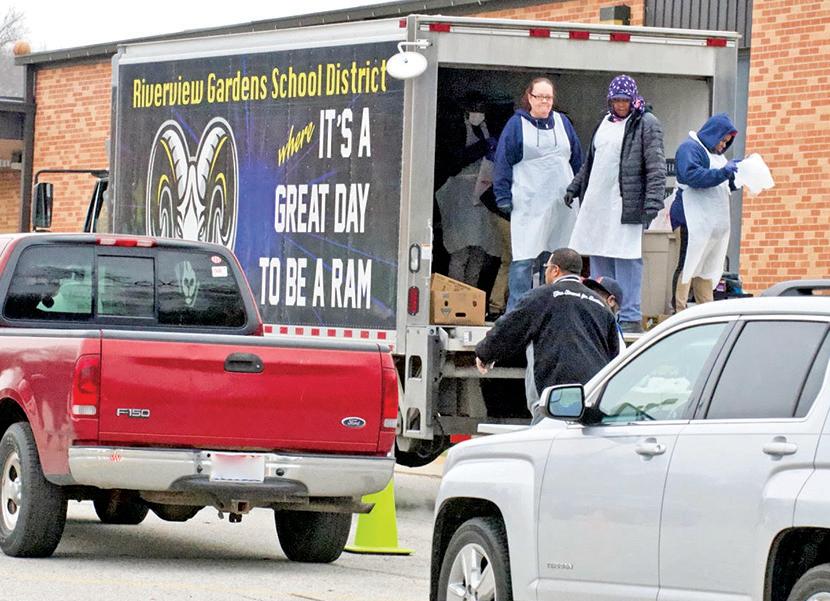
in communication with BJC HealthCare on getting supplies.
n
Missouri Gov. Mike Parson spoke with more than 200 black clergy members on an April 17 conference call about his decision to rescind his limited public health order to shelter in place on May 4. He said aggressive testing is a major part of that equation.
“I will not test without PPE supplies. I won’t do that to my staff.”
– CareSTL Health CEO Angela Clabon
In St. Louis city, African Americans account for more than 70 percent of the COVID-19 deaths. In St. Louis County, African Americans are dying at almost four times the rate as white residents. While testing supplies may be expanding, The St. Louis American asked Parson’s spokeswoman if PPE is a new barrier to testing. She stated simply in an email, “Yes.”
On the clergy call, Dr. Randall W. Williams, director
“We are going to be expanding our testing in the state of Missouri,” Parson told the St. Louis Metropolitan Clergy Coalition. “We are finally getting some real statistical data for Missouri. Six weeks ago, we didn’t know how this virus attacks the African-American community.”

of the state’s health department, said the state’s current capacity is 7,000 tests a day. The governor has asked them to double that, he said, which the department will be able to do “in the next couple weeks.”
“We’re not there right now,” Williams said. Rev. Clinton Stancil, pastor at Wayman A.M.E. Church, asked Parson how he could justify lifting his public health order in a couple weeks, which will be before the necessary robust testing will be in place.
Parson explained that he had to be the governor for the entire state, and 87 percent of the cases right now are in urban areas. Out of the state’s
114 counties, 90 counties haven’t had any cases, he said. Rev. Darryl Gray, one of the call organizers, asked about implementing mobile vans for testing people who struggle with transportation. Parson said it’s in the works. Parson said the state is working with the City of St. Louis’ health department on accessing vans used for addressing the opioid crisis to do rapid testing. Parson said that health staff will be able to drive these vans to churches.
“We are looking to develop that capability,” Parson said. But will the medical staff have protective equipment? That question remains unanswered.

Continued from A1
in Missouri and Illinois in the larger St. Louis region.
On Monday, the task force reported a significant jump in hospitalizations, of nearly 100 people from Sunday, April 19 to Monday, April 20.
“That was in one day alone,” Garza said, “so that convinced me, and I hope it convinced you, that we are still on the rising side of the curve.”
n “The pain of the last several weeks will be lost if we move too quickly and too soon.”
— Dr. Alex Garza
Garza reported on Tuesday, April 21 that there were 750 people currently hospitalized within the four medical systems. Of those, 187 were in the intensive care unit (ICU) and 130 people were on ventilators. The task force is planning for the gradual opening of more businesses and public spaces, he said, but the region cannot relax social distancing policies too quickly or there will be devastating consequences.
“We would have to do this all over again,” Garza said. “And, the pain of the last several weeks will be lost if we move too quickly and too soon. Instead, these steps are working.”
The City of St. Louis, St. Louis County and St. Charles County have extended their Stay at Home orders indefinitely.
“This remains a fluid situation,” St. Louis Mayor Lyda Krewson said on Thursday, April 16. “We are not setting an end date. We will revisit this by mid-May. Hopefully, we will have more information to be able to lift that order.”
As part of the city’s order, people are required to wear protective masks when in public, and essential businesses are required to provide the appropriate Personal Protective Equipment (PPE) for their employees. The county has
Continued from A1
The racial disparities in COVID-19 impact in the region referenced by McMillan and Page are undeniable.
Though blacks form only 24.9% of St. Louis County’s population, the death rate for COVID-19 for blacks is more than three times that of whites, according to the county health department.
In the City of St. Louis, the story is similar. Of the 924 COVID-19 cases reported in the city as of April 22, 631 (or 68.2 percent) were black. Of the 45 victims of the pandemic, 30 (67%) were black. Only 45.9% of the city’s population is black, according to U.S. Census data.
“African Americans continue to be disproportionately impacted by COVID-19,” Dr. Fredrick Echols, St. Louis health director, told The American. Echols attended the Urban League testing site opening and was recognized from the podium by McMillan.
A spokesman for St. Louis Mayor Lyda Krewson said she remains “committed to ensuring that any additional investments for COVID-19 response and relief are spent equitably across the city, to include communities disproportionately affected by the crisis,” with socioeconomic and health disparities being the first priority.
Statewide,30% of positive COVID-19 cases and 36 percent of related deaths were black people as of April 22, according to the state health department, though blacks form only 11.8% of the state’s population.
Jennings Mayor Yolanda Austin said that County Executive Page had told her personally that he is fighting to secure a proportionate amount of funding for hardest-hit areas in North County –and that she planned to hold him accountable.
Austin said her constituents were eager to get tested for the disease and to see their family members tested. She said many are concerned about elders liv-

by
also encouraged this but not required it.
“We have made progress, but now is not the time to weaken the social distancing policies that are working,” said St. Louis County Executive Sam Page.
Missouri Gov. Mike Parson has also extended the statewide “Stay Home Missouri” Order through May 3. However, Parson’s order has been criticized as little more than a social distancing guidance. Krewson said regional lead-
ing in senior homes.
Affinia Healthcare opened its site at the Urban League center at 8960 Jennings Station Rd. in Jennings at 10:30 a.m. on Tuesday morning. Though testing is free, a screening must be completed and an appointment made.
Dr. Alan Freeman, Affinia president and CEO, said it was a privilege to partner with the Urban League to test in a Zip code, 63136, with a high concentration of COVID-19 cases.
Affinia has been testing in North St. Louis on Biddle Street. Freeman said of the 580 people tested as of April 21, 13 to 14 percent had tested positive.
These officials spoke publicly on a day that an armed movement opposing public health orders for social distancing had actions planned in the state capital and county seat. This armed movement was encouraged by President Donald Trump in a series of tweets on Friday, April 17. In defiance of his own federal public health orders, Trump encouraged a series of states to “liberate” themselves –apparently, from public health orders.
Regional public and health officials all spoke plainly at the Urban League event about being in the middle of a response process that continues to require social distancing to slow the spread of the virus. Protective masks were announced as required to attend the outdoors public event; though mostly observed, it was not enforced.
“We need to keep ourselves socially distanced,” McMillan said. “We need to keep this from impacting more people in the community.”
Page said he wanted to see people healthy and back to work, but public health was a priority and containing an infectious disease takes time.
“We will get through this,” Page said, “but it’s going to take a while to get where we need to be.”
For screening and appointments for COVID-19 tests by Affinia, call 314-833-2777.
ers relied on data from the St. Louis Metropolitan Pandemic Taskforce. Based on the task force’s projections, more than 71,000 people of the region’s 2.8 million people could be infected with the virus by the end of April — though about 30 percent will be asymptomatic. That is down slightly from the task force’s initial estimate of more than 80,000.
“It is a reflection that all of the things we have been doing — including shelter in place, social distancing and other
actions — are helping,” said Garza. “But this is still a significant number.”
With 88 deaths in 2,349 cases as of April 21, 3.7 percent of the people in St. Louis County who were reported positive for COVID-19 had died. With 45 reported deaths from the pandemic in 924 reported cases in the City of St. Louis, 4.9 percent of the people in the city who tested positive had died as of April 22.
The State of Missouri crested 200 COVID-19 deaths (now
208) and 6,000 total cases (now 6,137) on Wednesday, April 22. The state reported that approximately 57,960 people had been tested as of April 21. With approximately 6.17 million people in the state, only 0.94 percent of the population had been tested. Of those reported tested, 10.6 percent have tested positive. Of those who tested positive, 3.4 percent have died.
According to the state, 30 percent of these positive cases
and 36 percent of the deaths were black people, though blacks form only 11.8 percent of the state’s population, according to the U.S. Census. Garza said the stay-at-home orders should remain in place until we are beyond the peak of hospitalizations and have robust testing and contact tracing capabilities in place.
“It’s going to take time,” Garza said. “We don’t get a second chance at doing it right.”

On April 21, Affinia Healthcare began operating a drive-through testing station at 8960 Jennings Station Road, in collaboration with the Urban League of Metropolitan St. Louis. Free testing services will be available Monday through Friday, from 9:00 a.m. -12 noon. Individuals who are concerned they have COVID-19 symptoms may call Affinia Healthcare at (314) 833-2777 to receive an appointment for a screening.
“The Urban League is proud to partner with Affinia Healthcare to provide much-needed COVID-19 Testing services to residents of the North St. Louis County community, free of charge. Measures such as these are crucial to help decrease healthcare disparities in majority African American communities,” said Michael P. McMillan, President & CEO of the Urban League of Metropolitan St. Louis, Inc.
Affinia Healthcare will also increase access to testing for the Coronavirus in under-resourced areas of St. Louis City and County by launching two additional drive-through COVID-19 testing stations. On April 22, a site will be added at Affinia Healthcare’s 4414 N. Florissant Avenue location, near N. Grand Avenue in St. Louis. This station will be open weekdays from 1:00 p.m. – 4:00 p.m. On April 23,

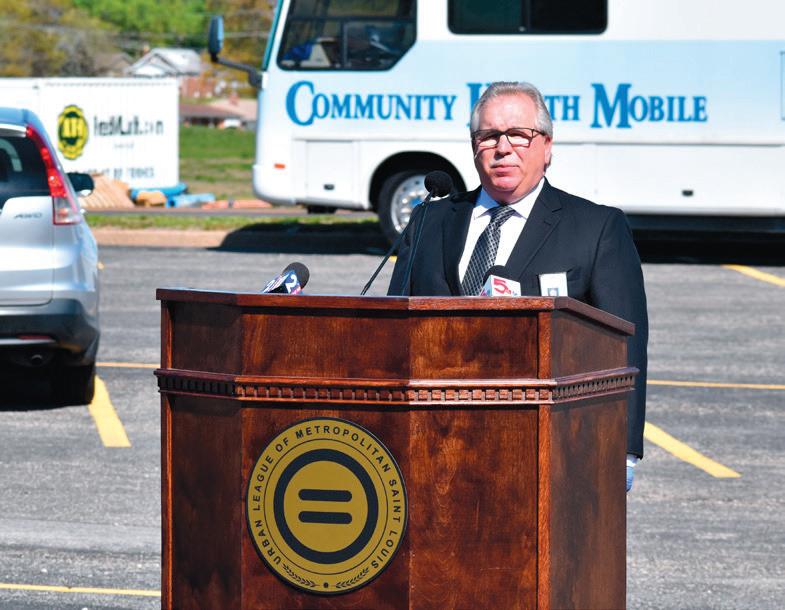
a third drive-through site will be opened at Affinia Healthcare’s 3930 S. Broadway location in St. Louis on weekdays from 1p.m.- 4 p.m.
“Affinia Healthcare is working very hard to serve our vulnerable and under-represented communities during this crisis,” noted Dr. Kendra Holmes, Chief Operating Officer. Dr. Melissa Tepe, Chief Medical Officer and a member of the St. Louis Metropolitan Pandemic Task Force, reminded that “Screening and testing for COVID-19 are vitally important where chronic health concerns are prevalent, and where inequities exist.”
Earlier this month, Affinia Healthcare established COVID-19 testing stations weekdays from 9:00 a.m. – 4:00 p.m. at 1717 Biddle Street in St. Louis, and at 6763
Page Avenue in Pagedale. Dr. Alan Freeman, President and CEO, stated: “The need is urgent and critical. Affinia Healthcare and our Foundation continue to be so appreciative of the trust instilled by government officials at every level, and the generous support of the Missouri Foundation for Health, St. Louis Regional Health Commission, Urban League, Community Impact Network, Beyond Housing, and various anonymous donors.”

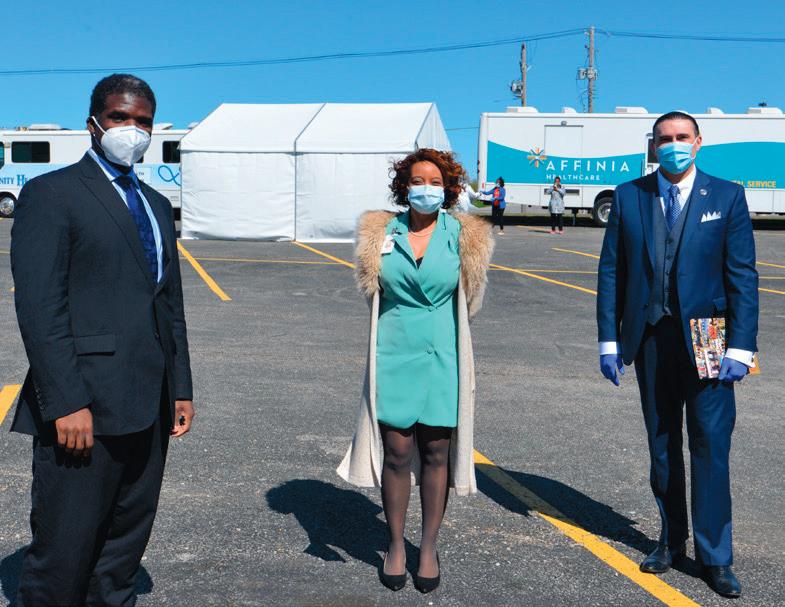

On April 17, The Urban League hosted the area’s largest food and toiletries distribution over 1,600
lined up at East St. Louis High School to get their trunks filled with a variety of
“The Urban League of Metropolitan St. Louis is committed to helping our neighbors to navigate the COVID-19 Crisis by providing
protection equipment and testing to help them to achieve their best possible outcomes. It is our goal to provide Free Food and Toiletries Giveaways on a weekly basis throughout the Summer of 2020 in the St. Louis Metropolitan Bi-State Region. We are also very grateful to East St. Louis Mayor Robert Eastern, NAACP President Stanley Franklin, our partners, sponsors and volunteers for helping us to execute this worthy event,” said Michael P. McMillan, President and CEO of the Urban League of Metropolitan St. Louis, Inc.
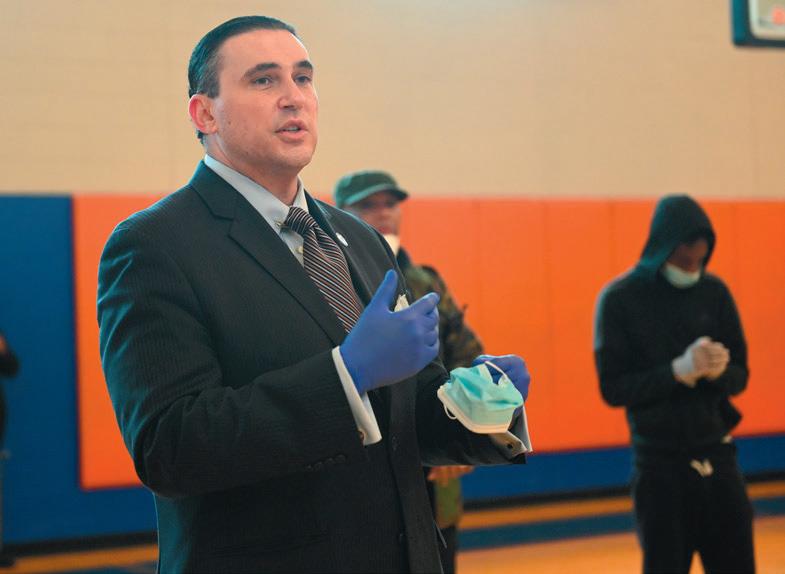

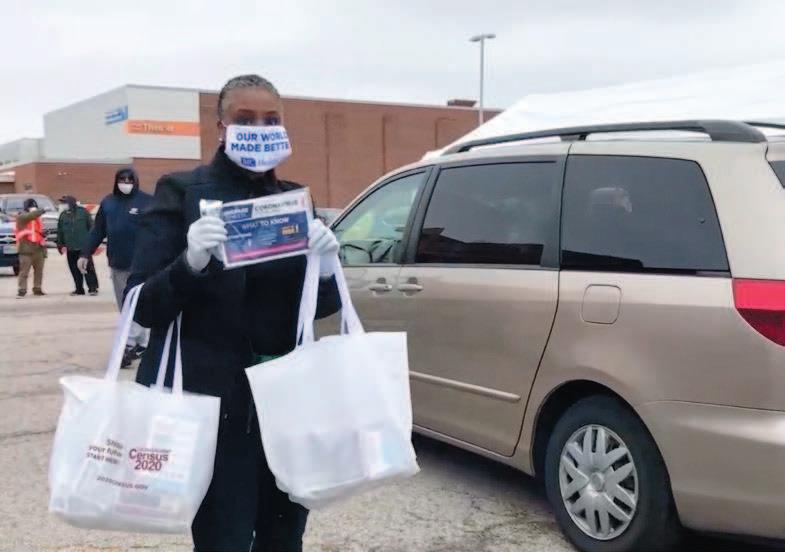
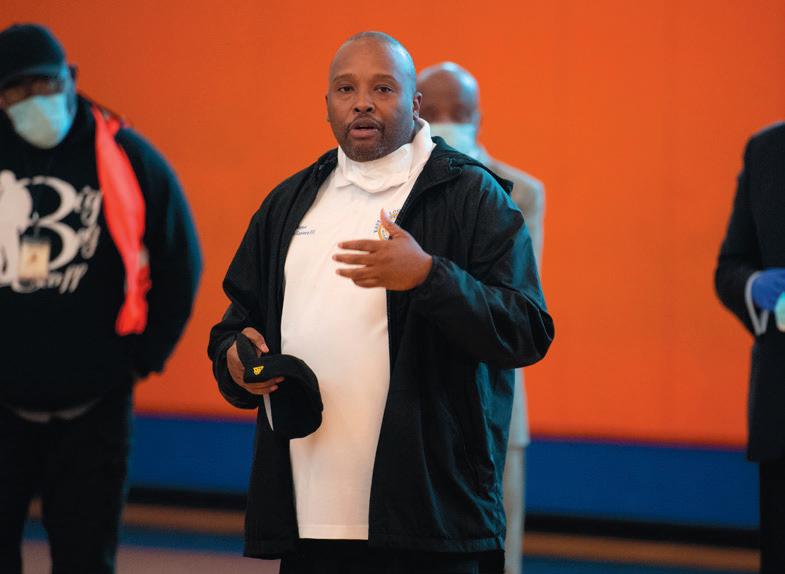


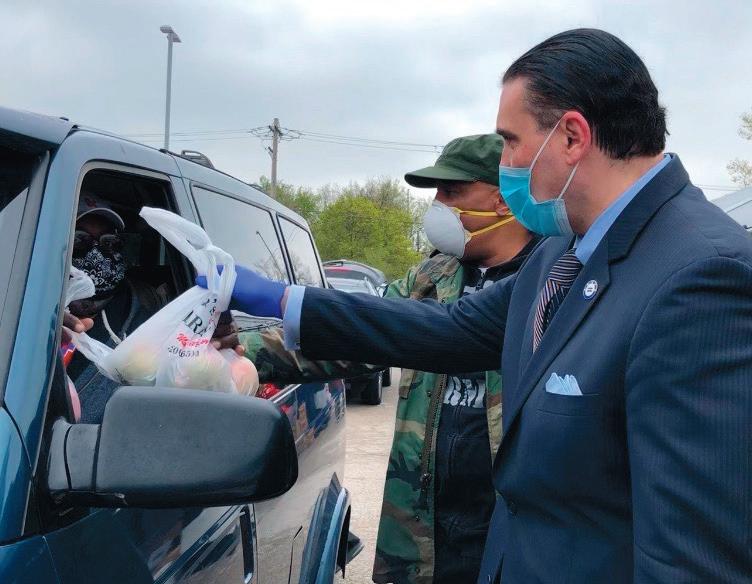



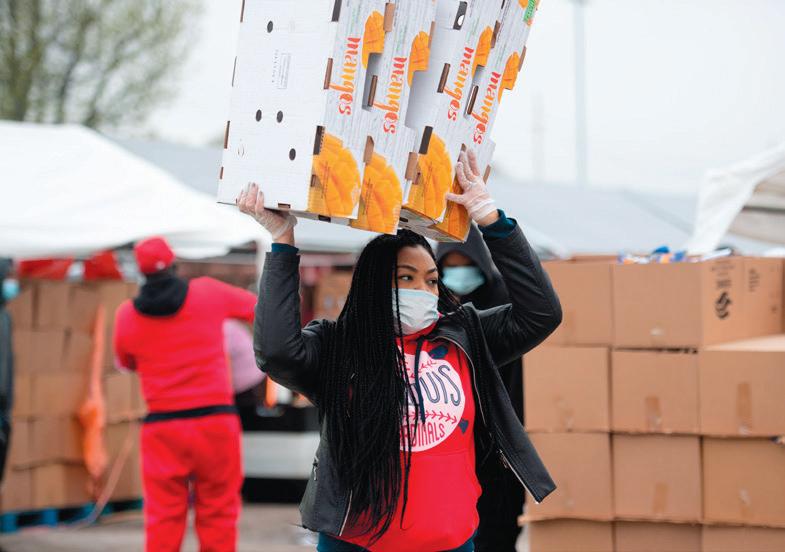
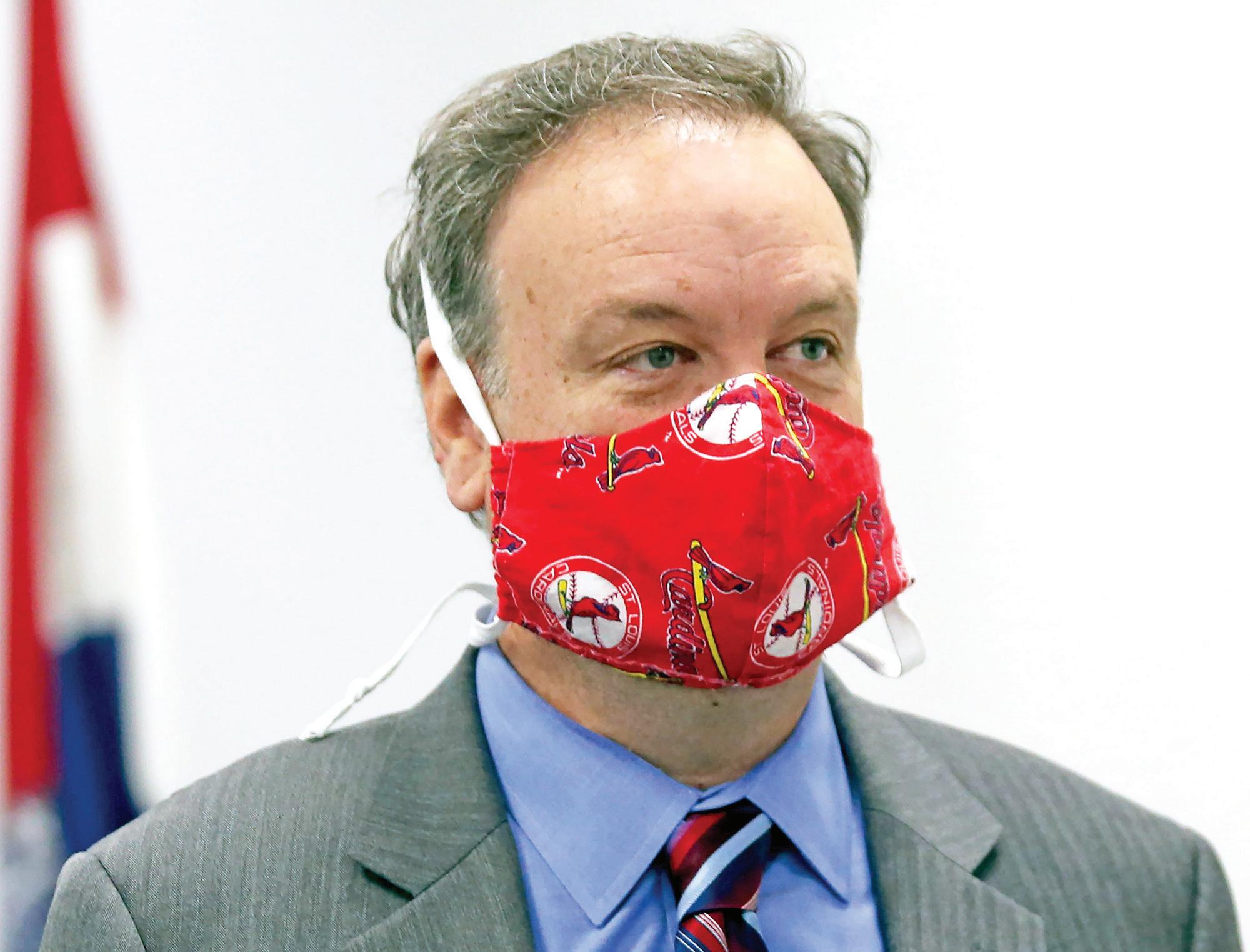
‘The fact is not enough people are getting tested’
By Rebecca Rivas
Of The St. Louis American
St. Louis County Executive Sam Page asked St. Louis County Council members to approve $7 million for the Department of Public Health for COVID-19 response — funds that will be focused on providing testing supplies and healthcare to the county’s most vulnerable population.
“The fact is not enough people are getting tested,” Page said. “There is a nationwide shortage of tests. These additional tests will go to where the need is greatest. We know that this crisis is hitting hardest African Americans. And if you look at the ZIP code maps, you see where the largest number of cases are popping up.” The areas hardest-hit are the parts of North St. Louis County that have the highest AfricanAmerican populations, according to county data. Page expects that the $7 million will be
n “It is an extraordinarily competitive process,” St. Louis County Executive Sam Page said, regarding obtaining COVID-19 testing supplies.
reimbursed by the $175 million that the county will receive as part of the federal CARES (Coronavirus Aid, Relief and Economic Security) Act. The federal monies can only be used on pandemic response.
Page has also asked the council to approve the establishment of a special fund to receive the federal dollars and the creation of a web portal, so the public can watch where the funds are being distributed.
Council Chair Lisa Clancy had hoped to pass the two bills at the Tuesday, April 21 council
meeting, but Republican council members voted against the measures and Clancy needed unanimous support. Republicans offered a substitute bill that would require $1.8 million to go towards Personal Protective Equipment (PPE) for first responders and essential workers. Democrats agreed with the ask but not including it in the $7 million funds meant for the public health department, saying that there is a separate fund that addresses PPE needs for police.
Councilman Ernie Trakas argued that the bill to establish a special fund for federal dollars would allow Page to use those funds “without council consideration or approval.” Clancy and other Democrats disagreed, saying the council will still have oversight but the county needs the ability to act quickly and not wait each week to authorize funds.
“I think they fundamentally don’t understand
Partnership with Russo’s Catering and Butler’s Pantry
The Salvation Army Midland Division is working with Russo’s Catering and Butler’s Pantry to provide prepared pre-packed meals for those in need during the COVID-19 pandemic at the following locations and times.
n The Salvation Army, through a partnership with St. Louis County, has extended its emergency warming shelter an additional four months.
Missouri Arnold Corps Community Center: Food Pantry Wednesday, 9:30a.m. - 11:45a.m.
Euclid Corps Community Center: Food Pantry Friday, 9:30a.m. - noon Family Haven CIP: Food Pantry Tuesdays, 9:00a.m. - 1:00p.m. Gateway Corps Community Center: Food Pantry Mondays and Tuesdays 10:00a.m. - 1:00p.m., Wednesdays, 3:00p.m. - 5:00p.m. Maplewood Corps Community Center: Food Pantry Wednesday, 9:30a.m.12:30p.m.
O’Fallon Corps Community Center: Food Pantry Monday, Thursday, and Friday, 10:00a.m. - 1:45p.m. and the second Wednesday of the month 5:30p.m. - 7:15p.m. Temple Corps Community Center: Food Pantry Mondays 10:00a.m.
See FOOD SERVICE, A10
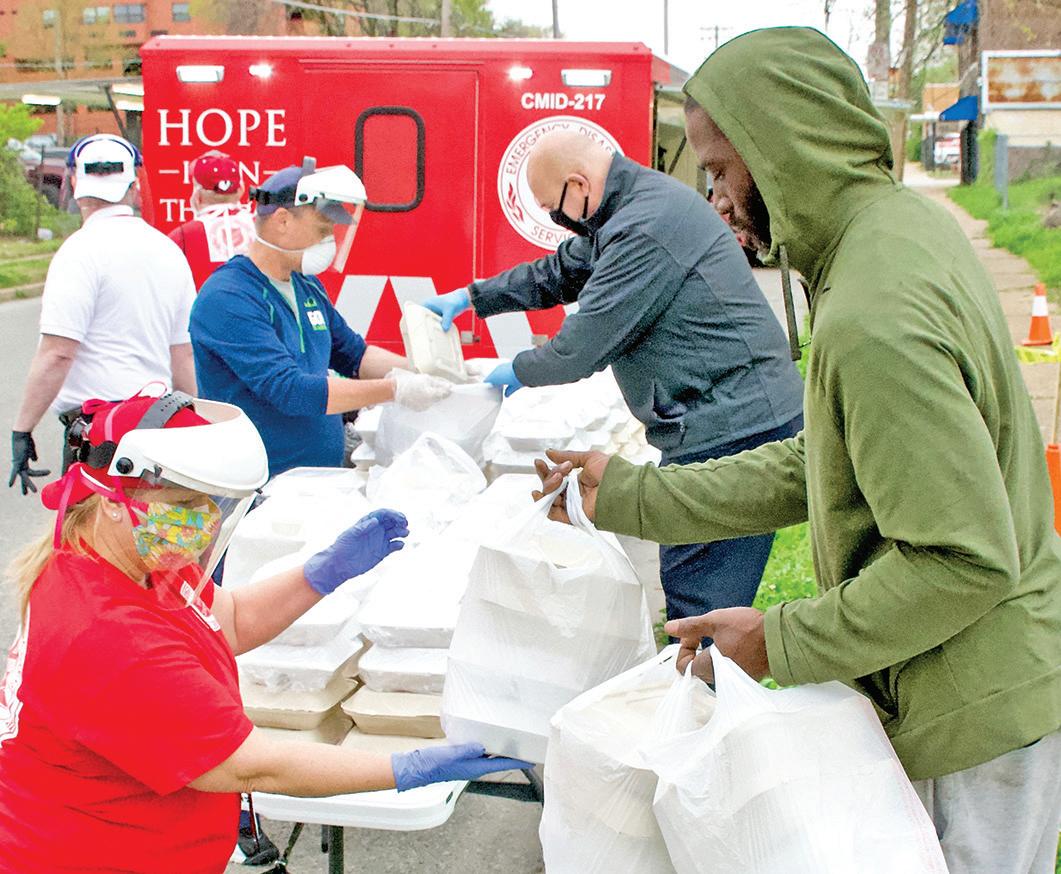
Corey S. Bradford Sr. is coming to St. Louis from Prairie View A&M University in Prairie View, Texas to lead Harris-Stowe State University as its 20th president. But he also is coming home.
“St. Louis is my hometown, so this is my personal passion,” Bradford told The American. “Harris-Stowe is right in my neighborhood. I went to Cole Elementary just a few blocks down from the university.”
At Prairie View A&M University, he has served as senior vice president for Business Affairs under President Ruth J. Simmons, who is something of a legend in higher education. She was the first African-American president of an Ivy League institution, Brown University.

n “We need to offer tutoring programs – online and face to face –when students are available. We need internships, study abroad programs, research opportunities where students can work with faculty.
“She really inspired me to have an impact on the next generation,” Bradford said of Simmons. “I want to come back and try to make a major impact. I want to help heal the divisions and inspire others to live a more prosperous life.” Bradford, who takes the helm on May 4, succeeds Dwaun J. Warmack, who left for a position as president of Claflin University. Bradford said he hopes to “build upon Dr. Warmack’s success” by focusing on student retention and graduation. With more than 26 years of experience in higher education and a Ph.D. in higher education administration from Southern Illinois University, he has ideas.
“We need summer enrollment – I am a proponent of bringing in freshman early,” he said. “We need to monitor gatekeeper courses. We need to offer tutoring programs – online and face to face – when students are available. We need internships, study abroad programs, research opportunities where students can work with faculty. And we need to create reclamation programs where we try to reach out to students we lose and try to get them to return to complete their degree.”
As it turns out, he has an expert at home. His spouse, Josette Bradford, also has a PhD and works in student success and retention. She is leaving a position at Prairie View A&M University and looking for academic work in St. Louis.
They are empty nesters. Their twins, 22, graduated from Louisiana State University in three years. Their son is pursuing an MBA, and their daughter is in veterinarian school. Bradford sees his new job as entailing responsibility toward youth even younger than his students at Harris-Stowe.
“Harris-Stowe has always been a beacon of hope for the disadvantaged,” he said. “I want to be a role model, someone who engages with the community. There is a lack of role models to influence especially our young men. We need to engage our young men early.” He said he plans to partner with local school districts and get their stu-
By Daniel R. Brown For The St. Louis American
I was just a high school student when Judge Charles Shaw (who passed on April 12 at age 75) invited me to his court room for the first time. When he learned that I was interested in becoming a lawyer, he invited me to shadow him at the federal courthouse. The lessons I learned from him that day and over the next 20 years have indelibly shaped my life and career.
As a naive high school freshman, I expected that I would spend the day observing from the cheap seats. Was I ever wrong! Instead, he sat me on the bench next to him as he presided over matters. Not only did he explain in his own classic fashion what was going on, but he also asked me my opinion.
I’ll never forget him asking a defendant that day if they would rather have justice or mercy. He then posed the same question to me. That same day he promised me, an unsure high school freshman, that if I decided to go onto law school, he would mentor me. He kept his promise. Not only did I intern for

the judge as a law student, but my first job out of law school was serving as his judicial clerk. My proudest day as an attorney was the day he swore me onto the federal bench. By
example Judge Shaw taught me that we must seek justice, but we also must love mercy. Throughout my life I have been honored to be guided by great men. I count the judge among the greatest.
Daniel R. Brown with Judge Charles Shaw
American staff
A partnership between Missouri Foundation for Health (MFH), the St. Louis Regional Chamber and two non-profits is connecting people in the region with food and jobs.
With grants from MFH, the St. Louis Area Foodbank and Operation Food Search (OFS) are partnering with the chamber to hire workers displaced by the COVID-19 outbreak to help keep up with the increased need for food assistance.
These temporary employees, including displaced food service professionals, will work full-time for the next 10 weeks at the Foodbank and OFS to help sort, package and distribute food to local kids, families and seniors.
The chamber will promote the employment opportunities among its members who may have employees who are unemployed or temporarily furloughed by COVID-19 related layoffs.
“We are living and operating in times we have not seen before,” said Valerie E. Patton, senior vice president of Inclusion and Talent Attraction at the St. Louis Regional Chamber. “The St. Louis Regional Chamber’s engagement in this collabora-
tive is imperative to assist in the recovery of economic and employment opportunities in the region.” Both the Foodbank and OFS have seen spikes in the need for food assistance since the COVID-19 outbreak hit the region in mid-March. A portion of the grant funds will be used by both organizations to purchase additional food to meet the increased need for food assistance.
“Food insecurity in our communities has always been an area of focus for MFH,” said Bob Hughes, MFH president and CEO.
“The spread of COVID-19 and the impact that it’s having on our families has intensified the food insecurity issue in Missouri, disrupting access and availability to healthy food as resources continue to be scarce. This partnership highlights the importance of our health and social safety net and the universal set of services needed for people to help build their lives, whether for the short term or long term.”
The recruitment firm Labor Finders will screen qualified applicants and conduct the hiring. Contact Labor Finders at (636) 287-3709 or (636) 2449080.
- 5:00p. Additional Mobile Marts Wednesdays, 3:00p - 5:00p. Community meals served Wednesdays, 6:00p8:00p. St. Charles Corps Community Center: Food Pantry Tuesday – Thursday, Food Service Continued from A9
1:00p.m. - 3:15p.m. and Fridays, 1:00p.m. - 2:45p.m. Illinois Alton Corps
-noon and Thursdays 3:00p
Community Center: Food Pantry Tuesday, 9:00a.m.11:00a.m. Belleville Corps Community Center: Food Pantry Wednesday - Thursday 1:00p.m. - 4:00p.m. East St. Louis Community Center: Food Pantry Friday, 9:30a.m. - noon Granite City Corps
Community Center: Food Pantry Mondays, Wednesdays, and Thursdays, from 1:00p.m. - 2:45p.m.
Also, Washington University students are delivering prepacked food boxes to senior citizens every week.
The Salvation Army, through a partnership with St. Louis County, has extended its emergency warming shelter an additional four months to allow those experiencing home-
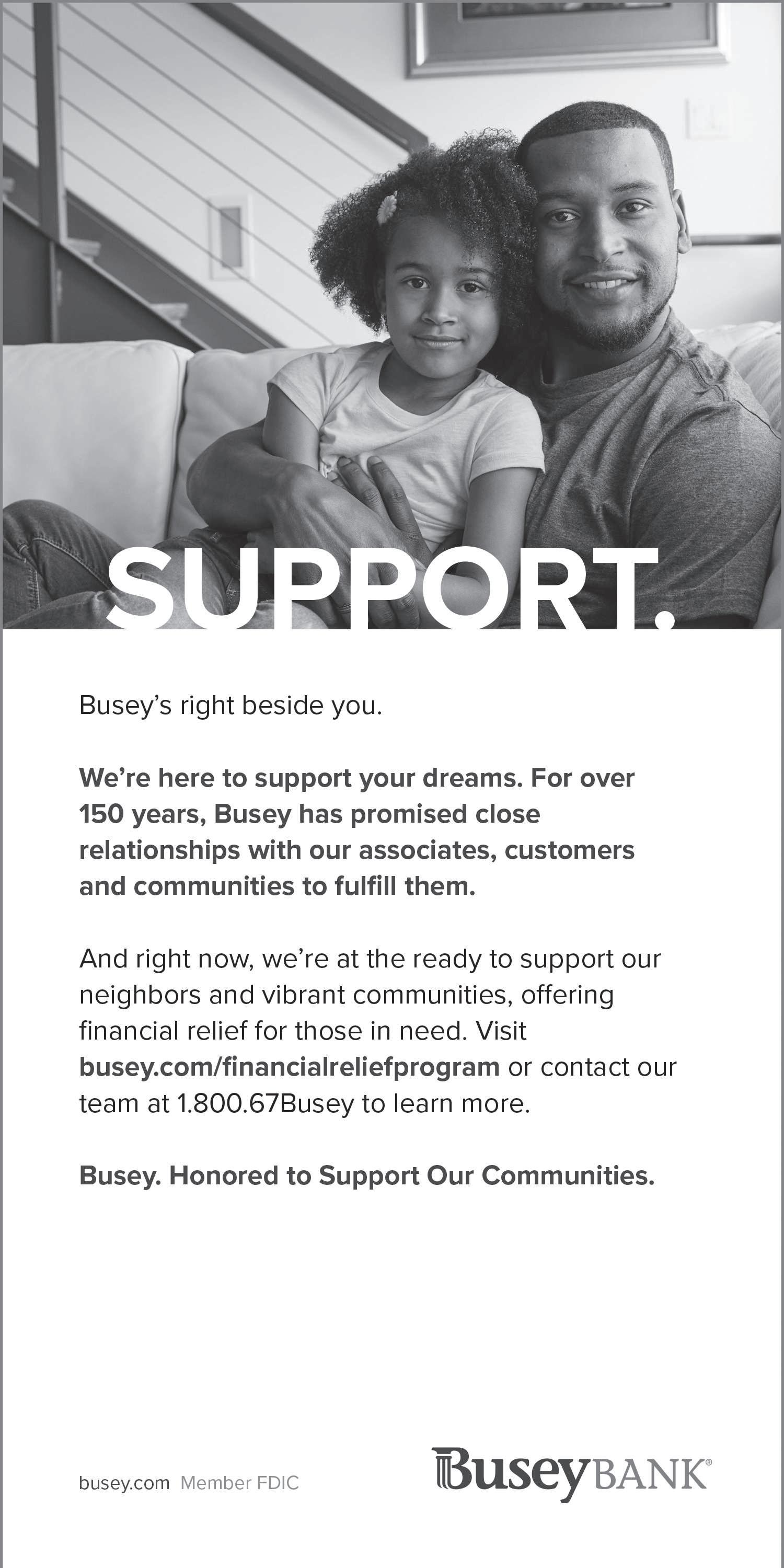
lessness to have a safe place to stay during this pandemic. Arrangements have been made to separately house residents who are symptomatic and to implement social distancing where possible.
Emergency financial assistance at Ferguson Community Empowerment Center is available by appointment only.
Other service centers continue normal operations, though visitors will be restricted for the time being, except for thrift stores, which are closed until further notice.
For more information, visit http://stlsalvationarmy.org/.
Continued from A9
the gravity of this public health emergency, nor the desperate need to get testing to the community, especially to our black residents,” Clancy said.
Democrat council members have the votes to pass the bills at the April 28 meeting. But Page said the week delay will hinder the health department’s ability to order testing supplies.
“It is an extraordinarily
competitive process,” Page said, regarding obtaining testing supplies.
The funds will also go to buying Personal Protective Equipment (PPE) for vulnerable populations in senior living and nursing homes, Page said.
Page stated in an April 13 letter to the council that the funds will allow the health department to provide treatment and disease management support to underserved county residents, many of whom lack access to primary critical care.
Spire is committing up to $500,000 to support low-income customers in matching gifts through its DollarHelp program. Managed by United Way, DollarHelp allows Spire customers to donate $1 monthly to help other customers in need of assistance with their natural gas bills. Spire is matching
Continued from A9 dents on campus. “We need to bring them to campus,” he said, “let them attend programs and events and get them engaged so they see that this is the place they want to be.”
He also has his eye on the other end of the university pipeline.
“Harris-Stowe is well positioned to address the region’s
the expected first-year contributions of new and increased pledges of up to $500,000. Spire also suspended late fees and disconnections through May and temporarily refined its programs for customers with limited incomes. For those affected by the COVID-19 pandemic and in need of financial assistance, visit SpireEnergy.com/relief or call 1-833-437-8289. To sign up to give to DollarHelp, log into a Spire online account at MyAccount. SpireEnergy.com, call 800887-4173 or make a one-time contribution at https://uwgsl. tfaforms.net/4602922.
ongoing workforce needs,” Bradford said. “We can help with workforce development and be a pipeline for local companies with STEM needs.
Harris-Stowe is focused on STEM education and degrees.
Being a STEM major myself, that is outstanding.”
He has master’s and bachelor’s degrees in mathematics from Southern Illinois University Edwardsville. He even sees himself teaching freshman math, as well as some business courses, though not in

his first year. His first year, of course, will be marked in as yet unknown ways by the COVID-19 pandemic that has resulted in universities, including Harris-Stowe, shutting down campuses and adjusting to remote learning. With the economy crippled, universities are expecting disruptions in patterns of enrollment next academic year.
“Not having arrived yet, I’m not privy to those conversations,” Bradford said about how Harris-Stowe is preparing for those disruptions. He said that Harris-Stowe had “adjusted quickly” to online learning, and that was likely to have an impact.
“After this,” he said, “I think we will see more classes of a hybrid kind, with an online component, that utilizes technology to advantage.”
At the same time, as an HBCU, Harris-Stowe has an historical mission of serving the black community, which is being hit hardest by COVID-19 with disease and death.
“A lot of people are experiencing loss,” Bradford said.
“I am excited at the opportunity to bring renewal to a lot of people who are hurting. Harris-Stowe has been here for 160 years. We are going to get through it. There are brighter days ahead.”
Absentee voting by mail is coming to Missouri in 2020 – if a lawsuit filed by the American Civil Liberties Union, ACLU of Missouri, and Missouri Voter Protection Coalition prevails. They demand this from Cole County Circuit Court because the COVID-19 pandemic “poses an existential threat to Missourian’s ability to safely participate in their electoral democracy,” as they argue in a 34-page class-action petition filed on Friday, April 17. The Missouri State Conference of the National Association for the Advancement of Colored People is the lead named plaintiff in the plaintiff class.
Missouri Secretary of State John R. (Jay) Ashcroft is the lead defendant.
The context, of course, is the public health concern about voting in person during a pandemic.
Conference of the NAACP. “COVID-19 offers that same risk with Secretary Ashcroft’s dereliction of duty to provide safe elections, which is within his powers in Missouri state law. If Secretary Ashcroft fails to act, death will be the new poll tax in the state of Missouri.”
Without clarification on this matter from the court, the plaintiffs’ counsel argues, “Missouri voters face the unconscionable choice between protecting their health and the health of their families and neighbors and forfeiting their right to vote or voting absentee at the risk of their ballots being discarded and potential criminal prosecution.”
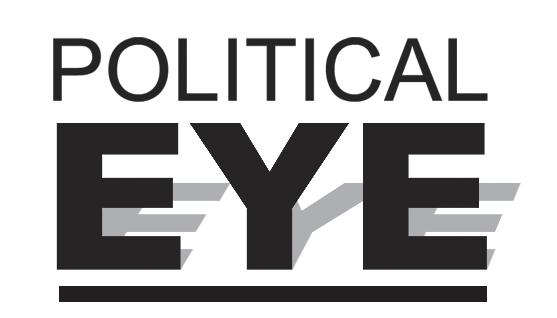
As they argue, “Thousands of eligible voters cannot be physically lining up with others at their traditional polling places, touch the same equipment, have face-to-face interactions with poll workers, and more without contravening the advice of public health experts and threatening public safety, elections workers, and the health of individual voters and their families.”
They note that Missouri law already provides six reasons a voter may cite to vote absentee, one of which “readily extends to cover all Missouri voters who wish to confine themselves at home and vote absentee to avoid contracting or spreading the virus that causes COVID19.” That reason is: “incapacity or confinement due to illness.”
As they point out in the petition, Governor Mike Parson – who is on the ballot this year – has said that trying to avoid infection by the novel coronavirus “does not constitute a valid excuse” to vote absentee. However, Ashcroft, the state’s top election authority, has said that local election officials must interpret the statute for themselves. This lack of clarity is unacceptable, they argue, because providing an explanation deemed invalid could be judged as making a false statement on an absentee ballot, which is a Class One felony.
The director of the Jackson County Election Board, they note, has stated that “fear of contracting or spreading the COVID-19 virus is not a legal reason to vote absentee in Missouri.” For that reason, Jackson County Prosecutor Jean Peters Baker is among the named defendants, since her office would consider the prosecution of any election felonies. In a twist, she also chairs the Missouri Democratic Party, which traditionally favors making voting easier, just as Parson and Ashcroft’s Republican Party typically tries to restrict access to voting.
“As an African American, there are members of our community who remember facing death just for exercising their constitutional right to vote,” said Nimrod Chapel, president of the Missouri State
The matter is particularly pressing for lead plaintiff the Missouri State Conference of the NAACP, they argue, because COVID-19 is having a disproportionate impact on African Americans. On the day the suit was filed, 502 of the 788 COVID-19 cases in the City of St. Louis were African Americans – that’s 64% of the cases, while only 45.9% of the city’s population is AfricanAmerican, according to the U.S. Census. On April 17, 36 of the 70 COVID-19 deaths in St. Louis County were of black people, or 51%, while according to the Census the county’s population is only 24.9% black.
The class also includes a black voter from Kansas City named Kamisha D. Webb who has several of the preexisting conditions that help to explain why COVID-19 has been so devastating to black people.
Crucially, the plaintiffs argue, “There is no vaccine, cure, or herd immunity” for COVID-19 and none is expected to be available before Missouri voters elect, among other officials, a president, governor, attorney general and, indeed, a secretary of state –the lead defendant, Ashcroft, is himself on the ballot this year.
They cite no less an authority than the now-famous Dr. Anthony Fauci, head of the National Institute of Allergy and Infectious Diseases, who recently said that he “can’t guarantee” in-person voting will be safe even in November.
They ask the court to declare that fear of COVID-19 infection is a valid reason to vote absentee due to “incapacity or confinement due to illness.” They also ask the court to issue an injunction prohibiting Ashcroft and other election officials “from limiting the availability of absentee voting without a notary seal” – in other words, making it possible to vote absentee without a notary.

If the court does allow absentee voting by mail in a suit filed against Missouri Secretary of State John R. (Jay) Ashcroft, “death will be the new poll tax in the state of Missouri,” said Nimrod Chapel, president of the Missouri State Conference of the NAACP, the lead named plaintiff in the class-action suit.
“Missourians should not have to expose themselves to a deadly virus in order to vote,” said Tony Rothert of the ACLU of Missouri. “Despite some feigned confusion by elected officials, Missouri law allows absentee voting by mail in situations like this. The secretary of state knows this and could clear this up, but he insists a court should do it. We are taking his advice and going to court.”
Read the complaint at https://tinyurl.com/ACLUCOVID.
Inmates in St. Louis jails unprotected from COVID-19
ArchCity Defenders and the Close the Workhouse campaign have released a series of legal declarations and audio recordings from people incarcerated in St. Louis city’s jails, describing the “unsanitary and unsafe conditions” in both the City Justice Center and the Medium Security Institution, also known as the Workhouse.
“They don’t hand out hand sanitizer,” said a man who is currently jailed at the Workhouse. “We’ve only received one mask. There are (correction officers) coming in from the outside who are constantly not wearing masks. No one offers any soap. If you don’t have soap to wash your hands, you’re just on your own. They’re not really putting in the effort to make sure any cells are clean. They don’t pass out cleaning supplies. They don’t even give us a broom, let alone a mop. We’re just sitting here rotting.”
All of the audio recordings
can be found on ArchCity Defenders’ SoundCloud channel. The playlist is entitled “#DecarcerateSTL: Caged During COVID-19, Stories from the Inside.”
While the Workhouse has a capacity of 1138, the number of people jailed there has steadily decreased to a population of 112 as a result of Close the Workhouse campaign’s efforts, community organizing, growing political pressure, ongoing litigation, community and Bail Project bailouts, and prosecutorial reforms, according to a statement from the campaign. The campaign argues that the diminished population in the Workhouse, combined with the dangers of COVID-19, presents a critical moment for the City of St. Louis to permanently shutter the jail that costs taxpayers $16 million annually.
“These accounts are deeply concerning,” said Blake Strode, executive director of ArchCity Defenders. “Every

day, we are hearing from one set of people inside these jails who feel that their health and very lives are at great risk. At the same time, other concerned St. Louisans are asking what is being done to ensure that people are safe. City officials at every level need to think very hard about whether they are comfortable condemning a certain number of people in their jails to serious illness or, worse, death. The experts continue to warn us that that is a real possibility.”
On March 26, 17 medical and public health experts signed onto a letter to the Missouri Supreme Court, authored by Dr. Fred Rottnek of St. Louis University School of Medicine. In requesting that the court order the release of individuals from jails across the state, Dr. Rottnek, formerly the medical director of the St. Louis County Jail, wrote that he and other signers “believe these institutions are unable to comply
with the Centers for Disease Control and Prevention (CDC) recommendations for treating or preventing the spread of COVID-19.”
The letter also states that “the COVID-19 pandemic has the potential to devastate the lives of both incarcerated individuals and jail personnel, and result in a medical emergency that could overwhelm Missouri’s medical infrastructure.” Among the signers were Dr. Laurie Punch, a trauma surgeon with BJC Healthcare, Dr. Christine Jacobs, chair of the Department of Family and Community Medicine at St. Louis University School of Medicine, and Jason Purnell Health Equity Works program director at the Brown School at Washington University in St. Louis and head of the newlyformed COVID-19 Regional Response Team. Campaign organizers said that the Workhouse has long been known for “caging poor people and Black people pretrial in hellish and inhumane conditions (e.g., black mold, violent-unsafe, mice & rat infestation, mice feces in food, bug and roach infestation, snakes in showers, inadequate medical care).” A jail conditions lawsuit filed by ArchCity Defenders in November 2017, Cody vs. City of St. Louis Case No. 4:17-CV-2707-AGF., is currently pending. In late March, ArchCity Defenders set-up a jail hotline number to learn about jail conditions from people incarcerated and their loved ones on the outside. Individuals directly impacted are encouraged to call and leave a message at (314) 643-8773. In April, ArchCity Defenders launched a series on social media entitled #DecarcerateSTL, featuring voices of people incarcerated in the City jails, as well as second-hand accounts shared by their loved ones on the outside.
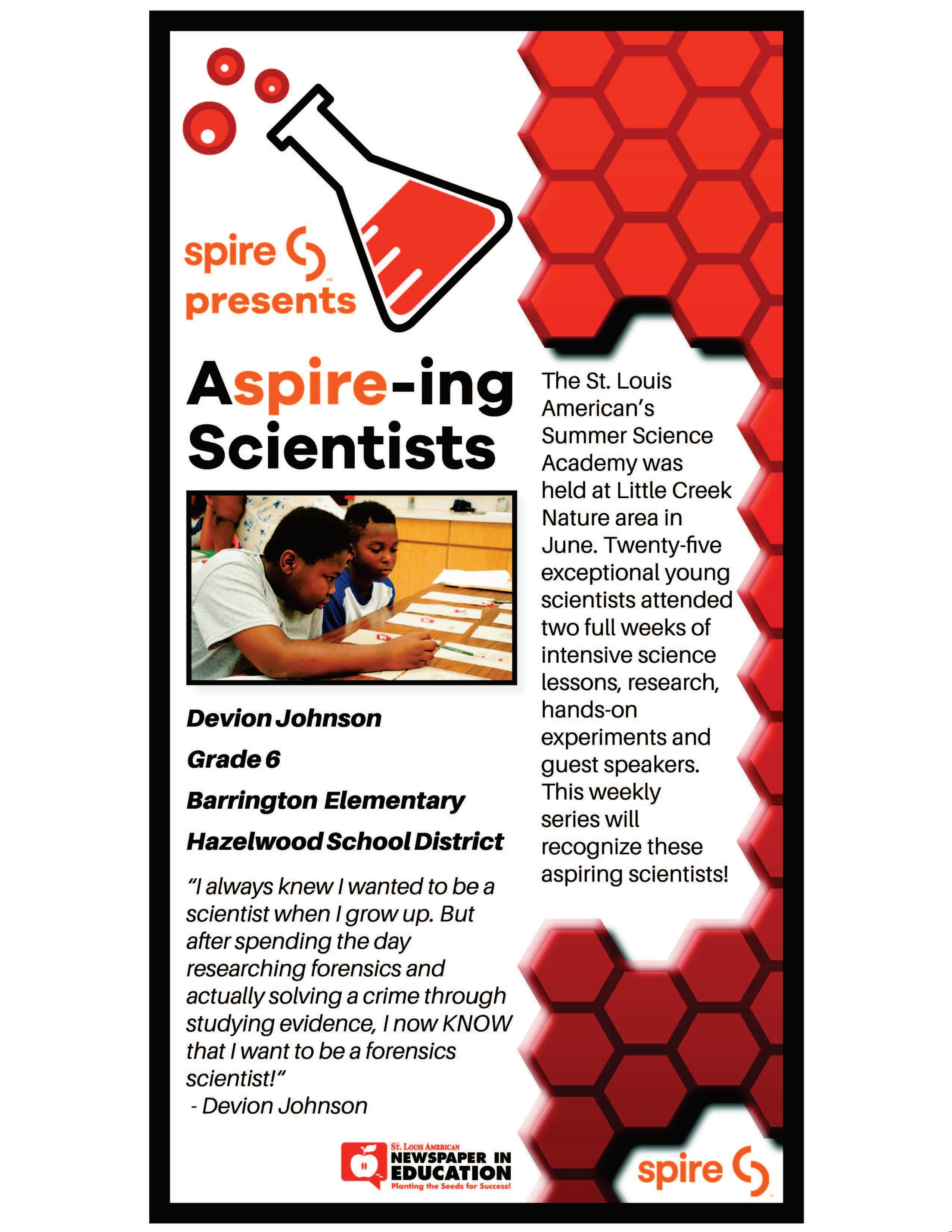
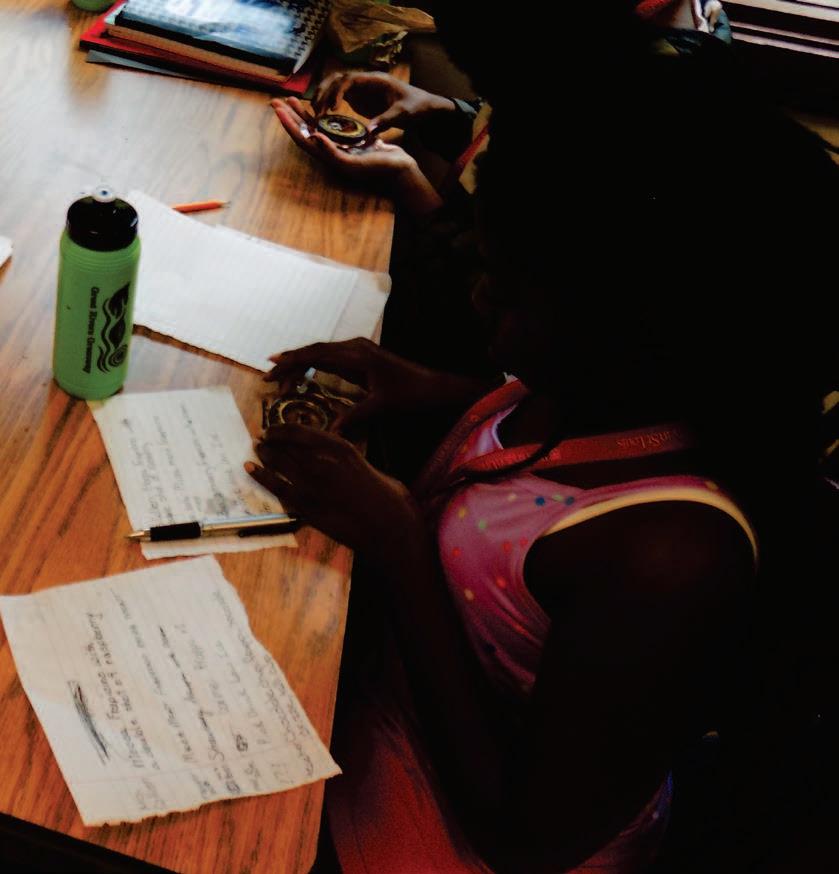



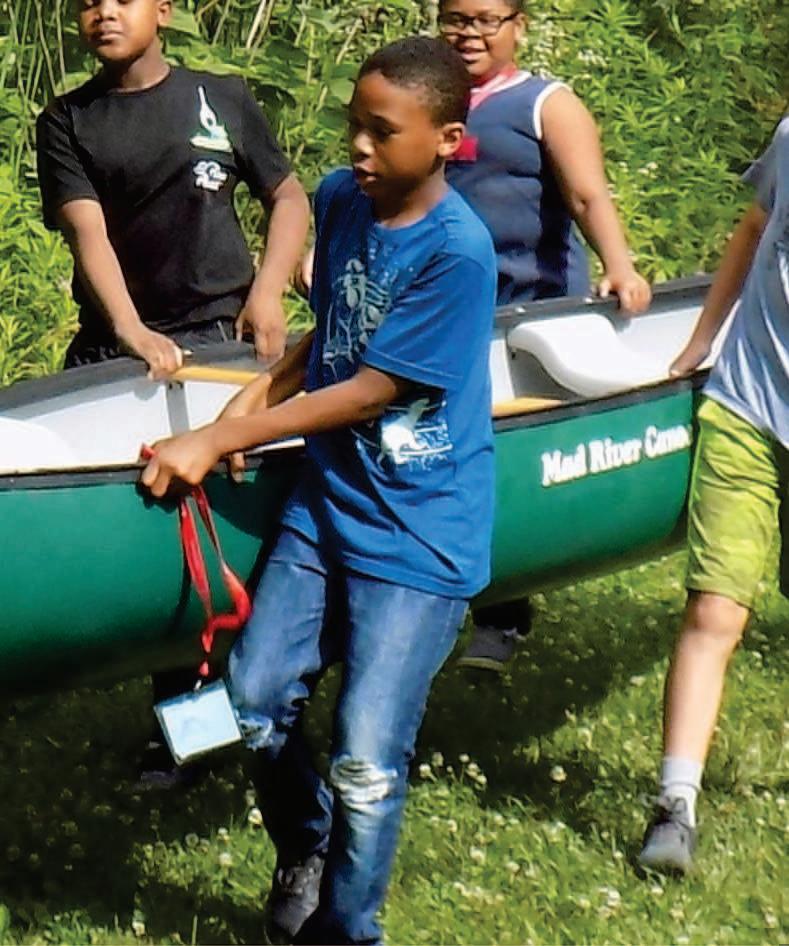
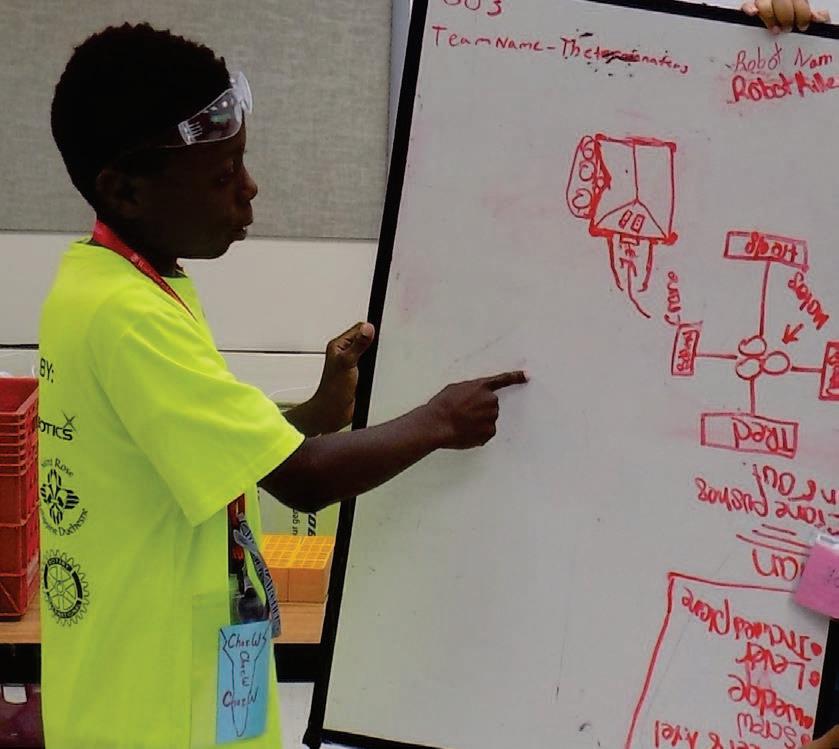

TheSt.Louis American's SummerScience Academywas heldat LittleCreek Nature areathis pastJune. Twentyfive exceptional young scientists attendedtwofull weeksofintensive science lessons, research,hands-on experimentsand guest speakers. Thisweekly series will recognize these aspiring scientists!
“Attending camp last year opened my eyes to a lot of new experiences. Going on the nature walks and fishing was exciting. The hands-on learning was also fun.”
-Janila H.


“TakingCareofYou”

McDonald’s franchisee Jimmy Williams delivered lunch to more than 30 members of Christian Hospital’s Incident Command Center at 11133 Dunn Rd. on April 15. A variety of individuals and healthcare workers are assigned to the center strictly to care for COVID-19 patients. At left is Rick Stevens, president of Christian Hospital
By Sandra Jordan
Of The St. Louis American
CareSTL Health temporarily suspended operations, including COVID-19 testing, at its health center located in the Ville Neighborhood at 2425 N. Whittier Street until Monday, April 27 after an employee there tested positive for COVID-19. Individuals who were scheduled for COVID-19 testing at the Whittier Street location through April 23 will now be tested at 5471 Martin Luther King Dr.
By William F. Tate IV and Kally Xu
For The St. Louis American

William
Many of us read bedtime stories to our children. We delight in seeing their faces light up at their favorite lines. Story time represents a moment in the day when parents and caregivers offer reassurance to their children about the world. We laugh and encourage while discussing fears and possibilities. Mostly, we cherish the bond built through story. Think Dr. Seuss’s The Cat in the Hat Comes Back Today, parents and caregivers share classic tales with a pandemic spreading across the globe that alters the day-to-day lives of our young people. With social distancing mandated, managing this new social reality for children represents a challenge for many families.
“Without sharing many details to protect the privacy of our community member, I can tell you that the individual is not currently working and has been quarantined,”
CareSTL Health CEO Angela Clabon said in a statement.
“While this news is certainly troubling, and we are concerned for all employees and visitors to our health centers, it is not entirely unexpected that we would have a confirmed case in our community. This is something we’ve been preparing for as the virus has continued to spread

Supporting students socially and psychologically through the pandemic is a priority. With young children and teenagers present on the home front 24-7 and schools, parks, and recreation centers closed, it is important to understand how COVID-19 impacts their health. Individuals under 18 years of age represent one-fifth of the populations in St. Louis city and county. Twenty-two percent of the population in the United States are infants and children, defined by those less than 18 years of age, but as of April 2 only 1.7% of COVID19 patients with available age data had been children, according to the Centers of
The building is now closed for cleaning and remediation.
“I want to reassure you that we are doing all we can to reduce the risk of further spread of the virus within our community,” Clabon stated, “and we are continuing to take all necessary precautions to keep our community safe.”
For more information about COVID-19 testing at CareSTL Health, call 314-3675820.
By going to parties, funerals and church during the COVID-19 pandemic
By Chris King Of The St. Louis American

How do you get many of your friends and family members sick and even kill a few slowly and painfully? Simply by showing up at a funeral, church or a party. That is, if you have been infected by a highly infectious and potentially deadly virus. Of course, you don’t know you’re infected. Though it’s increasingly less possible that this could be true, you may not even know much about the novel coronavirus or the disease it causes, COVID-19. But that doesn’t matter. Your friends, your family and loved ones will get just as sick. Some of them will end up just as dead. And you yourself may never feel anything worse than a sniffly cold.
That is the story told by the Centers for Disease Control and Prevention (CDC) in a new report, “Community Transmission of SARS-CoV-2 at Two Family Gatherings — Chicago, Illinois, February–March 2020.” Community transmission is the passage of a communicable disease from person to person in the community, usually unknowingly. SARS-CoV-2 is the more technical proper name for the novel coronavirus. The two family gatherings were a funeral and a birthday party.
The result: 16 sick people, ages 5 to 86 years – who also went on to make even more people sick – and three more funerals.
The terrifying thing that everyone must grasp who has not yet grasped it is that this chain of disease and death started by someone innocently doing things that everyone does – and would like to go back to doing if they have been following public health officials’ directions to stay at home and distance themselves.
It started by someone traveling out of state, where he likely was infected. Though
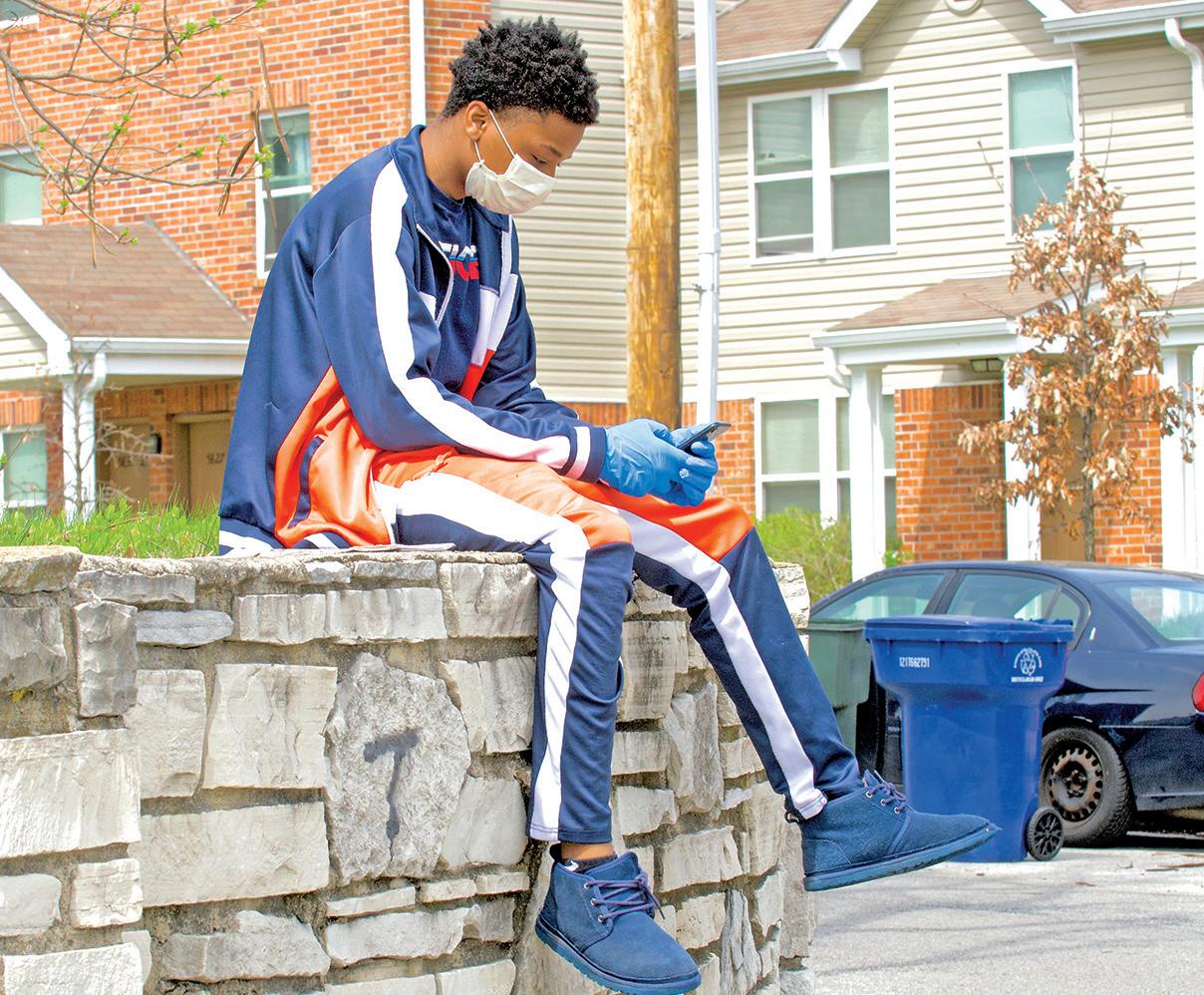
Scott, 15, a student at Sumner High School, checked his cell phone wearing a protective mask while sitting on a wall at Etzell Avenue and Goodfellow Boulevard on April 7. The CDC recommends that all people wear cloth face masks when leaving home for essential travel.


Screening phones open 8:30 a.m. to 4 p.m. Monday through Friday
Touchette Regional Hospital is now offering a drive-through COVID-19 test site in East St. Louis at its health center located at 100 North 8th St.
The testing process begins with a telephone call to 618-646-2596 for screening by a clinician. The screening will involve questions about symptoms, possible exposure, age, work environment and underlying health conditions. If determined to meet the testing requirements as prescribed by the Illinois Department of Public Health and the Centers for Disease Control and Prevention, the caller will be given a time window to arrive at the collection site. If the caller does not meet public health requirements, they will be provided information about self-isolation
Continued from A12 he “was experiencing mild respiratory symptoms,” the CDC reported, “he was only tested later” as part of the investigation that traced this trail of disease. When he got home to Chicago in February, with family he “shared a takeout meal, eaten from common serving dishes.” The next day, he went to a funeral, where he “shared a ‘potluck-style’ meal” and hugged people “to express condolences.” He infected four of them. One of them later died.
There were 34 homicides in Chicago this February, where presumably the killer meant to kill the victim and did so fairly swiftly. This COVID-19 death was as slow as it was unintentional. The person who had a meal with a friend and hugged him at a funeral was hospitalized 11 days later, required endotracheal intubation (that is, a tube down the windpipe) and mechanical ventilation for acute respiratory failure, and died after another 17 days of fever and labored breathing.
Before anyone infected at the funeral got sick, just three days after the funeral, the man who had traveled and was unknowingly infected attended a birthday party. Though he “was still experiencing mild respiratory symptoms,” the CDC reported, it was February in Chicago; a lot of people with chest colds socialize in the winter (or used to).
This birthday party was attended by nine other family members, and he hugged them all and they all “shared food at the three-hour party,” the CDC
Continued from A12
Disease Control and Prevention (CDC).
The first reported case of an adolescent contracting the virus was on March 2. Of the limited data available as of April 2, 73% of adolescent patients reported symptoms such as shortness of breath, cough, or fever, as compared to 93% of adults up to 64 years of age. There are similar trends for other symptoms as well, such as sore throat, headache, diarrhea, or myalgia. Based on the data available on hospitalization statuses, 20% of adolescent patients were hospitalized, while 33% of adults up to 64 years of age were hospitalized. Adults were also admitted to an ICU at higher rates as well. Infants less than 1 year old are the
and staying home unless symptoms worsen.
All patients are eligible for screening, regardless of their ability to pay. There will be no charge to patients for testing. If the patient has insurance, that information will be gathered during the phone call; however, there will be no cost to the patient.
The drive-through collection site will be accessed from the 9th Street entrance into the parking lot. Signage, staff and Illinois State Police will assist with directing patients to the appropriate location. Results should be available within approximately 24 hours.
Screening phone lines are open 8:30 a.m. to 4 p.m. Monday through Friday, and the testing site is open noon to 4 p.m. Monday through Friday. For COVID-19 screening, call 618-646-2596.
Screening phones open 8:30 a.m. to 4 p.m. Monday through Friday
Affinia Healthcare is now offering COVID-19 testing behind its health center located at 6763 Page Ave. in Pagedale Ave. A tent is set up for patients who have a testing appointment to drive or walk through.
Individuals who are concerned they have COVID-19 symptoms must first call Affinia Healthcare at 314-833-2777 for a phone screening and to receive a testing appointment or other instructions.
Affinia also tests for COVID-19 at 1717 Biddle St. in North St. Louis.
The Community Impact Network, Beyond Housing, and the Missouri Foundation for Health helped to support this North County testing site.
“Ensuring ready access to testing is the urgent and right thing to do in vulnerable communities where health equity gaps exist among minorities and the underserved,” said Affinia Chief Operating Officer Dr. Kendra Holmes.
For phone screening for COVID-19 testing with Affinia, call 314-831-2777.
Betty Jean Kerr People’s Health Centers now offers drive-through COVID-19 testing site at 11642 W. Florissant Rd. in North County.
People with COVID-19 symptoms should first call Betty Jean Kerr People’s Health Centers at 314-627-5405 for a screening and testing appointment. Residents can call the screening and testing appointment line from 8:30 a.m. to 4:30 p.m. Monday through Thursday.
“It is critically important that all communities have access to COVID-19 testing to accurately reflect its impact on our population. Understanding this threat and beating it demands testing in every community,” said Dwayne Butler, CEO of BJK Peoples Health Centers.
COVID-19 testing at People’s is supported by the City of St. Louis Department of Health and the Saint Louis County Department of Public Health.
Testing is available 9 a.m. to 4 p.m. every Friday. A photo ID, such as a current driver’s license or state identification card, is required.
For symptom screening on COVID-19 testing at People’s, call 314-627-5405.
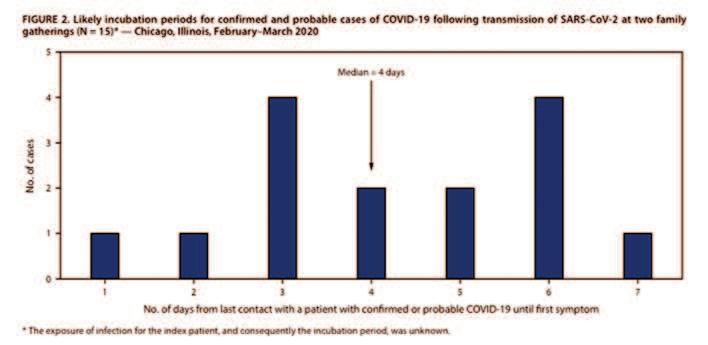
reported. Seven of them got sick. Two of them died – slowly, in the hospital with mechanical ventilation and a tube down the windpipe. The contagion continued to sprawl. Three people who got infected at the birthday party attended church six days after developing their first symptoms. At church, they infected more people, including a health care professional, whose point of contact, the CDC reported, was “passing the offering plate.”
Sharing a meal, going to a funeral, hugging people, going to a birthday party, hugging people, going to church, passing the offering plate – it’s difficult to accept these as
most vulnerable out of all pediatric age groups to be hospitalized.
The median age for adolescent patients was 11 years, and about 33% of patients was 15 to 17 years of age. Additionally, 27% of reported pediatric cases were among children 10 to 14 years of age, while 15% was among children aged 5 to 9 years. Fifty-seven percent of adolescent patients had been males, compared to 53% male in adults. Data for underlying conditions in adolescents is scarce, with information on only 345 cases as of April 2; but of those cases, 23% had at least one underlying health condition, including asthma, cardiovascular disease, and immunosuppression.
The CDC collected this data from all 50 states, Washington D.C., New York City, and four U.S. territories in the period from February 12 through April 2. Because of the short-
dangerous, even life-threatening acts, but as long as there is community spread of COVID19, these are dangerous, even life-threatening acts.
The CDC placed no blame on the individuals studied. The report states quite clearly that this all “occurred before major social distancing policies were implemented.”
To put these family events on a timeline, Chicago reported its first COVID-19 case on January 24, only the second infection detected in the United States. Like the first in the Seattle area less than a week earlier, the infected person had returned from Wuhan, China. Her husband was the state’s second reported case on
age of various data points and factors, some of the numbers represent estimated ranges. In addition, other limitations exist such as differing testing practices across jurisdictions, limitations to who is getting tested, and more. Despite these limitations, however, there are important preliminary findings.
All this information supports previous reports and data, much of it from China: adolescents do not experience severe forms of the virus at the same rates as adults; there are more fatalities among male patients for both adults and children, suggesting a biological relationship to sex; and children less than 1 year old and with underlying health conditions are more vulnerable.
The CDC analysis reports characteristics of COVID-19 disease among children in the United States that suggests
January 30.
On February 11, Illinois became the first state to start testing for the virus. The next cases, another couple, were not reported until March 2. That was after the man in this CDC report had returned from his travels and attended the funeral. The Illinois Department of Public Health advisory on March 2 stated that “the risk to the general public remains low.”
Though the CDC does not provide precise dates, since the birthday party in March fell three days after the funeral in February, all of these acts of innocent family fellowship happened when public health authorities were reassuring
that symptoms like fever or cough are not always present. And while the severity of symptoms has been milder for children than for older adults, it remains important to monitor the progression of illness with children, particularly among young persons with underlying conditions.
While adolescents experienced fewer severe cases, the CDC report documents hospitalizations and loss of life, with three reported deaths as of April 2. According to the CDC report, exposure to the virus occurred largely through a member of the community or from an individual in the household. The remaining fraction, about 9% of exposures, occurred during travel.
Individuals with a mild form of the disease or asymptomatic, including children, play a role in the transmission and the spread of COVID-19 in the community. Many indi-
the public, not sounding any alarms.
That would all be over by March 11, when the World Health Organization characterized COVID-19 as a pandemic. The Illinois Department of Public Health was reporting 25 cases then, and its Director Dr. Ngozi Ezike stated, “We are seeing growing transmission of the virus in the community.”
By March 15, when Illinois was still reporting only 93 cases and no COVID-19 deaths, Dr. Ezike issued a guidance that should be issued nationwide by now: “At this point, it is best to assume that the coronavirus is circulating in your community and you should take the same precautions when interacting with other people that you would when interacting with someone who has tested positive for COVID-19. This may seem like an extreme step, but this is how we reduce the number of new cases and prevent the health care system from being overwhelmed.”
viduals who experience mild, limited, or no symptoms can expose a far greater portion of the community than would occur if the disease were documented and the individual quarantined. According to an article in Science, it was estimated that a large proportion of undocumented infections, many likely not experiencing severe symptoms, influenced the rapid spread of the virus in China. With respect to children and adolescents, delayed school reopening along with other broader measures such as restricted travel and face masks slowed the spread of the virus. Therefore, to protect people of all ages and backgrounds, it is essential for everyone to participate in social distancing and efforts to flatten the curve, regardless of the level of vulnerability and susceptibility. The CDC continues to recommend that people stay at home and maintain good hygiene.
As this CDC report makes tragically clear, this assumption must include extended families, and these precautions must include avoiding sharing the most basic pleasures (food, parties), solace (church), and sorrows (funerals). That is, unless the goal is to have more family funerals.
More recently, the CDC has also recommended that people wear cloth face masks and coverings when leaving home for essential travel. Parenting offers many challenges. The pandemic intensifies our concerns about the children in our lives. Safe, secure, healthy, and tucked into bed is the goal. Story time is nearly complete. Don’t go near the virus. That virus hurts people. It comes and it goes. Don’t want to carry it. You know how it harms the young and old. And one more thing, We will beat this Just know.
William F. Tate IV is dean and vice provost for Graduate Education.
Kally Xu is a John B. Ervin Scholar and Gephardt Institute Civic Scholar at Washington University in St. Louis.

Planting the Seeds for Success!
Nutrition Challenge:
When you graze, it means that you eat small snacks all day long without eating a regular meal. “So, what’s wrong with that?” you ask. Grazing prevents your body from ever really feeling full, causing you to eat more throughout the day.
PRESENT:




Instead, sit down; eat a nice, solid, balanced, nutritional meal. Your body will tell you when it’s full, and the benefits are that you won’t be hungry for a while, you’ll eat less, and you won’t be tempted by less-nutritious snacks.
Learning Standards: HPE 2, HPE 5, NH 1, NH 5
physical activity for longer periods of time (such

As a family, discuss what you think are important areas of mental health. Today we’ll focus on stress management. This means that we’ll consider ways to relieve the stress in our lives. Individually, make a list of four things that cause you stress. Again as a family, talk about
different methods for stress relief: Time management, coping, speaking with trusted adults, exercising, journaling, etc.
Now looking at your stressors list, what of these relievers might help?
Learning Standards: HPE 2, NH 1
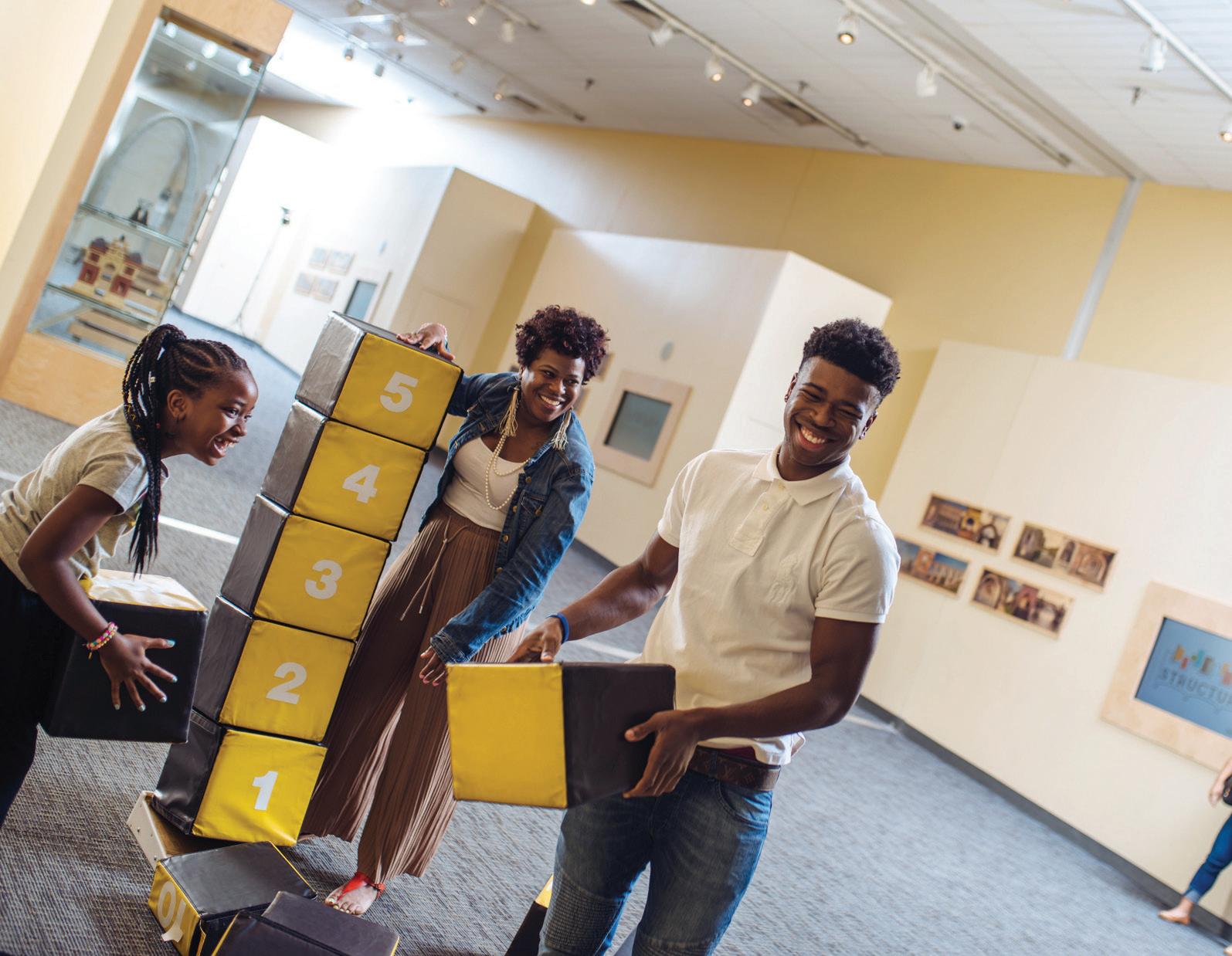
Ingredients:
1 cp Crisp Rice Cereal, ½ cp Peanut Butter
2 tbs Maple Syrup, ¼ tsp Fine Sea Salt or Table Salt, ¼ cp Unsweetened Shredded Coconut
Directions: Mix together the cereal, peanut butter, maple syrup, and salt in a medium bowl. Form the mixture into 12 1½-inch balls. Roll the balls in the coconut. Refrigerator in an airtight container for up to 5 days.

Where do you work? I am an associate professor and child psychiatrist at Washington University School of Medicine. Where did you go to school? I graduated from Eastern High School, Louisville, Kentucky. I then earned a BA in Psychology from Harvard University and an MD from Washington University School of Medicine.
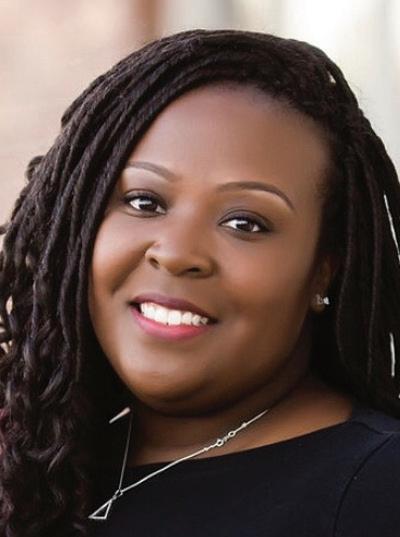
What does a child psychiatrist do? I do research where we study the brains of babies and children by putting them in MRI scanners to take pictures of their brains. We also have them play games and answer questions so we can see how they are developing. In addition, I see children who have brain disorders that affect their behavior and emotions, and provide them treatment to help improve the symptoms of their illness.
Why did you choose this career? I always wanted to be a doctor and help people especially young children. As I learned more about how the brain works I wanted to be a doctor (a psychiatrist) that treated brain illnesses that may affect thinking and emotions like ADHD and depression. I wanted to do more than just help children by treating their illnesses. I also wanted to do research so that we could better understand what is happening to the brains of children that have these illnesses so that we can prevent them and create better treatments for them.
What is your favorite part of the job you have? I really enjoy meeting with my patients and their families and I also really like teaching young scientists how to do research.
Learning Standards: HPE6, NH3




The St. Louis American’s award winning NIE program provides newspapers and resources to more than 8,000 teachers and students each week throughout the school year, at no charge.
Questions or comments? Contact Cathy Sewell csewell@stlamerican.com or 314-289-5422

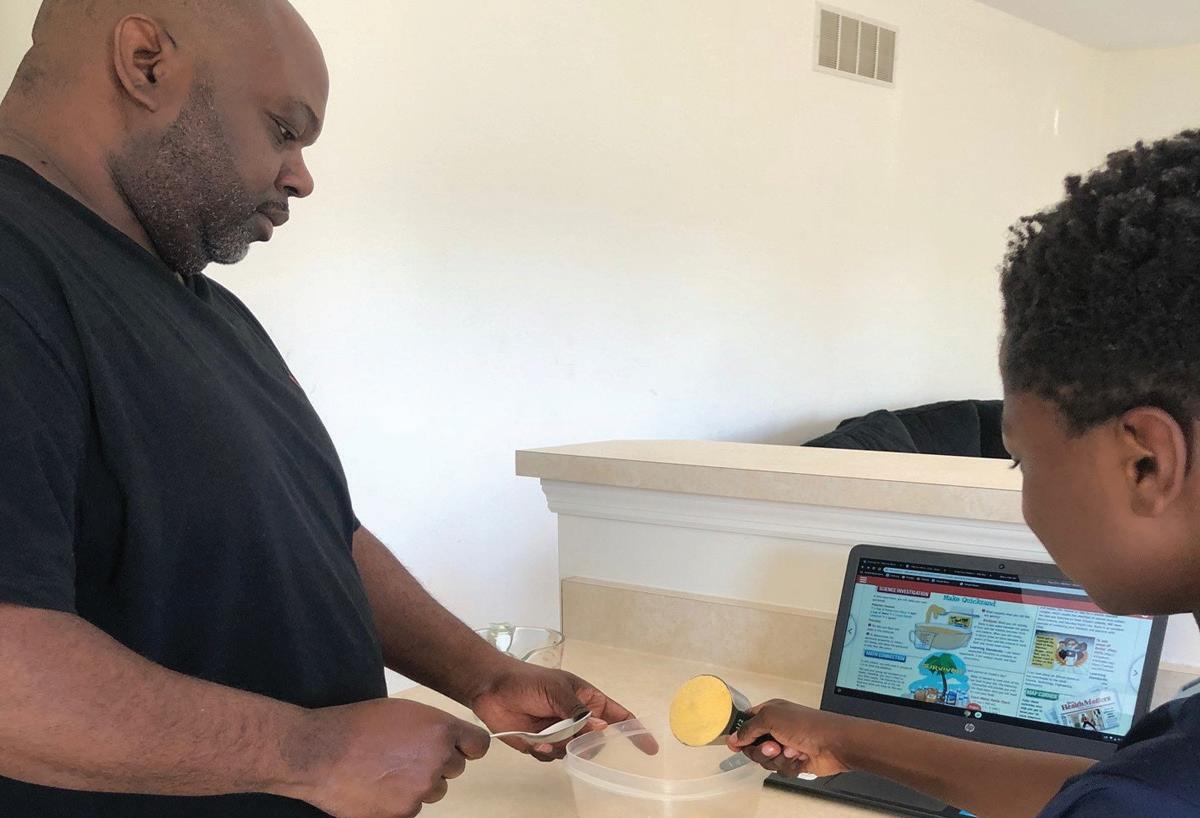

When something moves, it creates a vibration of energy, which is called sound. The vibration of sound creates movement in the air particles. If those vibrations are fast, you’ll hear a high-pitch sound. If the vibrations are slow, you’ll hear a low-pitch sound.
The speed of sound is the rate that these vibrations travel through matter. In dry air, speed travels at the rate of 343 meters per second, which is equivalent

In this experiment, you will observe how sound travels.
Materials Needed:
• Metal Coat Hanger
• String
• Metal Spoon
• Table Procedure:
q Tie the ends of a piece of string to each corner of a metal coat hanger.
w Next, loop one end of the string around one index finger and the other end around the other index finger.
e Put your fingers in your ears and bang the hanger against a table.



to one mile in five seconds. In water, sound travels four times faster.
The loudness of sound is measured in volume, also known as decibels. The louder a sound is, the more decibels it will have. A whisper has around 15-20 decibels, a jet engine has around 150 decibels.
Learning Standards: I can read nonfiction text for main idea and supporting details.
r The sound waves from the vibrating hanger travel through the string and into your ear.
t Do the same thing with a metal spoon.
Reflect: How does the sound compare? Which is louder? Which one has the lowest pitch? Try using different materials and see how it affects the experiment. Try using different types of string. Does it affect the vibrations of sound?
Learning Standards: I can follow sequential directions to complete an experiment. I can make observations, analyze results, and draw conclusions.
Math Academy allows you to practice addition, subtraction, multiplication, and division facts. Having a quick memory of these facts gives you a strong, solid foundation for all other math functions.
Math Climber

Math Climber is available for Apple and Android devices. It covers 18 topics including addition, subtraction, multiplication and divisions facts with positive and negative numbers, place value, customary measurement, metric measurement, order of operations, fractions, percents, decimals, area, perimeter, and volume.


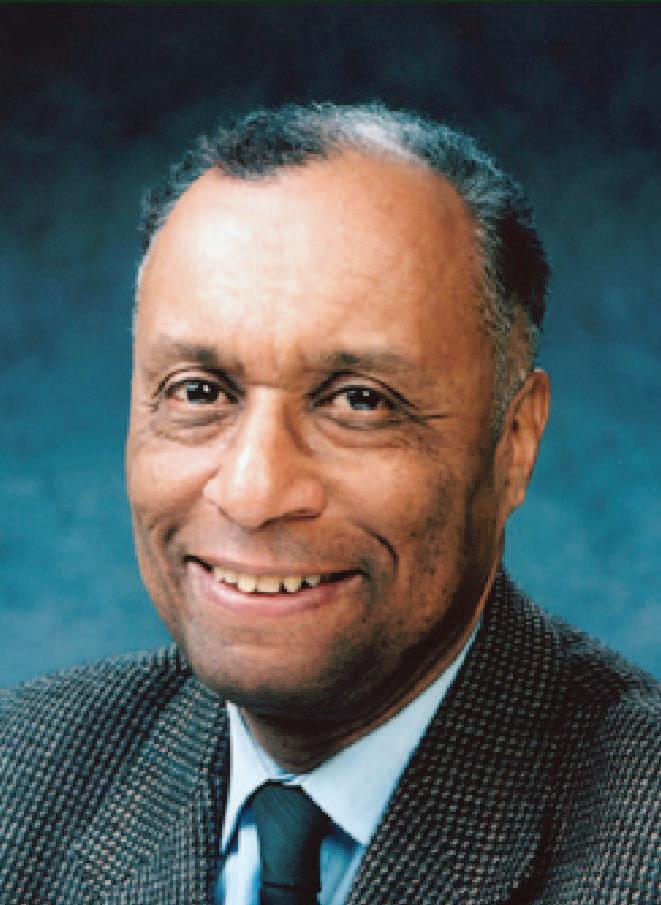
Henry Sampson grew up in Jackson, Mississippi, and attended Lanier High School. When he was just a sophomore, he attended Senior Career Day. It was there that he spoke to a graduate from Purdue University. Sampson later traveled to visit Purdue that summer and was inspired to attend college there. He first attended Morehouse College for two years before transferring to Purdue. In 1956, he earned his bachelor’s degree in chemical engineering.
Five years later, he earned his master’s degree in engineering from UCLA. In 1967, he became the first African American in the United States to earn his PhD in nuclear engineering.
Sampson worked as a chemical engineer at U.S. Naval Weapons Center. Next, he was a project engineer with the Aerospace Corporation in El Segundo, California. He was later promoted to the Director of Planning and Operations. On July 6, 1971, Sampson received a patent for the gamma electric cell with George Miley. Because of this, many sources mistakenly credit him for inventing the cell phone. Although he did not invent the cell phone, he helped to create and discover technology that is currently used in cell phones. Sampson also holds other patents for rocket fuels.
Sampson has written many reference books, including “Blacks in Black Face: A Source Book on Early Black Musical Shows.” In 1982, he received the Aerospace Corporation Black Image Award. In 2009, he was named Purdue University’s Outstanding Chemical Engineer. In 2012, he received the Entrepreneur of the Year Award from the Friends of Engineering, Computer Science and Technology, California State University-Los Angeles.

This is the patent drawing for a gamma-electrical cell that converts gamma radiation into electricity without going through a heat cycle. This invention was designed for nuclear reactors, but eventually made cell phones possible.
Learning Standards: I can read about an African American who has made strides in the fields of science, technology, engineering, and mathematics. I can make text-to-text connections and text-toworld connections.

Motion Math Cupcake app allows you to create your own cupcake creations. You must purchase supplies, set a price that allows for a profit, plan for long range success, and much more.
For more information on recommended math apps, visit: http://www.parents.com/kids/education/ math-and-science/best-math-apps-for-kids/.
Learning Standards: I can understand the importance of math fluency. I can make text-to-self connections and text-to-world connections.
Read about the following math apps you can add to your family’s phone. These apps are a great way to reinforce all of the skills you were learning in school. DID YOU KNOW?



Enjoy these activities that help you get to know your St. Louis American newspaper.
Activities — Photo Finish: Find a sports story with a photo. Make a list of all the nouns, pronouns, verbs, adjectives and adverbs in the story.
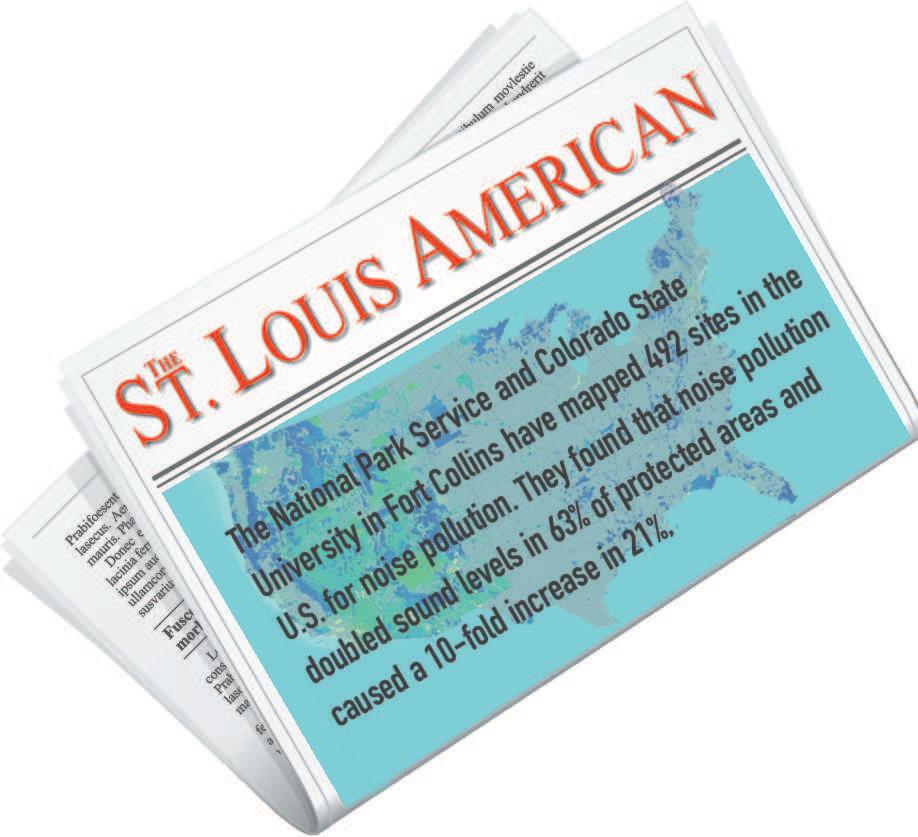
Professional vs. Amateur Look in the sports section and find 10 athletes (use either photos or names) and identify each as professional or amateur. Then list the characteristics of professional and amateur athletes.
Learning Standards: I can use the newspaper to locate information. I can identify parts of speech and characteristics of professional and amateur.
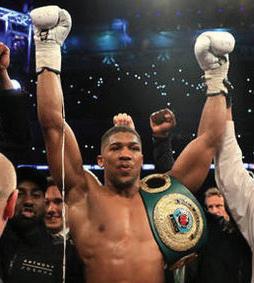
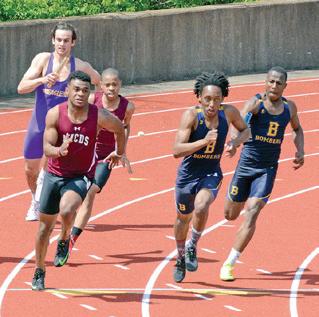

Physicians and health care leaders from BJC HealthCare, Mercy, SSM Health and St. Luke’s Hospital and our academic medical institutions, Saint Louis University and Washington University Schools of Medicine, are partnering to help the St. Louis region through the COVID-19 pandemic.
As part of the St. Louis Metropolitan Pandemic Task Force and PrepareSTL’s outreach to at-risk communities, we believe the St. Louis community will come through the COVID-19 pandemic stronger than ever.
As we near the peak of the COVID-19 outbreak in the St. Louis region, stopping the spread of COVID-19 is more important than ever to save lives.
The pandemic task force is not alone in this communitywide effort. To help get essential information and resources into at-risk communities, the St. Louis Regional Health Commission, St. Louis Integrated Health Network, STL Community Health Workers Coalition, Alive and Well Communities and other organizations have created a unified communications and outreach campaign called “PrepareSTL.”
While the task force, formed by BJC HealthCare, Mercy, SSM Health and St. Luke’s Hospital, is continuing to coordinate capacity, staffing, supplies and other critical assets across the region, we also support PrepareSTL’s efforts to ensure area residents have factual, current information and access to the best possible care.
REACHING OUR VULNERABLE COMMUNITIES
In St. Louis, as in other communities throughout the U.S., nearly half of those who have tested positive for COVID-19 are in communities where health disparities are greatest.
These disparities include higher rates of health problems such as diabetes, high blood pressure, asthma and other chronic conditions that put individuals at higher risk of more serious COVID-19 illness.
PrepareSTL is reaching out to the area’s most socioeconomically disadvantaged communities through TV and radio commercials, direct mail, a website (PrepareSTL.com), social media and literature posted in prominent places.
In areas identified as communities at the highest risk, PrepareSTL is having individuals place posters at nearly 700 locations, including grocery and convenience stores, gas stations, pharmacies, health centers, laundromats, bus stop shelters and other public places as needed.
The community canvasses will continue over the next several weekends, putting up posters and placing yard signs in neighborhoods. (The graphics on this page were provided by PrepareSTL and show some of the messages the organization is sharing in the community.)
Supporting PrepareSTL is part of our collective mission to serve the most vulnerable communities. Providing information and access to vital resources for all residents will help stop the spread of this pandemic.
WHAT WE ALL MUST DO TO STOP THE SPREAD
The message to the area’s most at-risk communities is the same message we all need to remember: The best way to increase everyone’s chances of staying healthy is to just stay home. COVID-19 is spread from person to person, so limiting the people you physically interact with lowers your risk of contracting the virus.
WE KNOW THAT WITH YOUR HELP, THE ST. LOUIS COMMUNITY WILL EMERGE FROM THIS CHALLENGING TIME STRONGER THAN EVER.






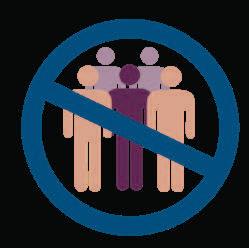
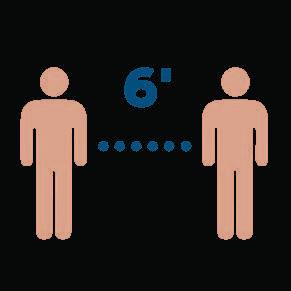






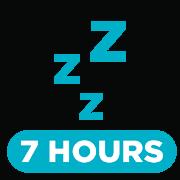




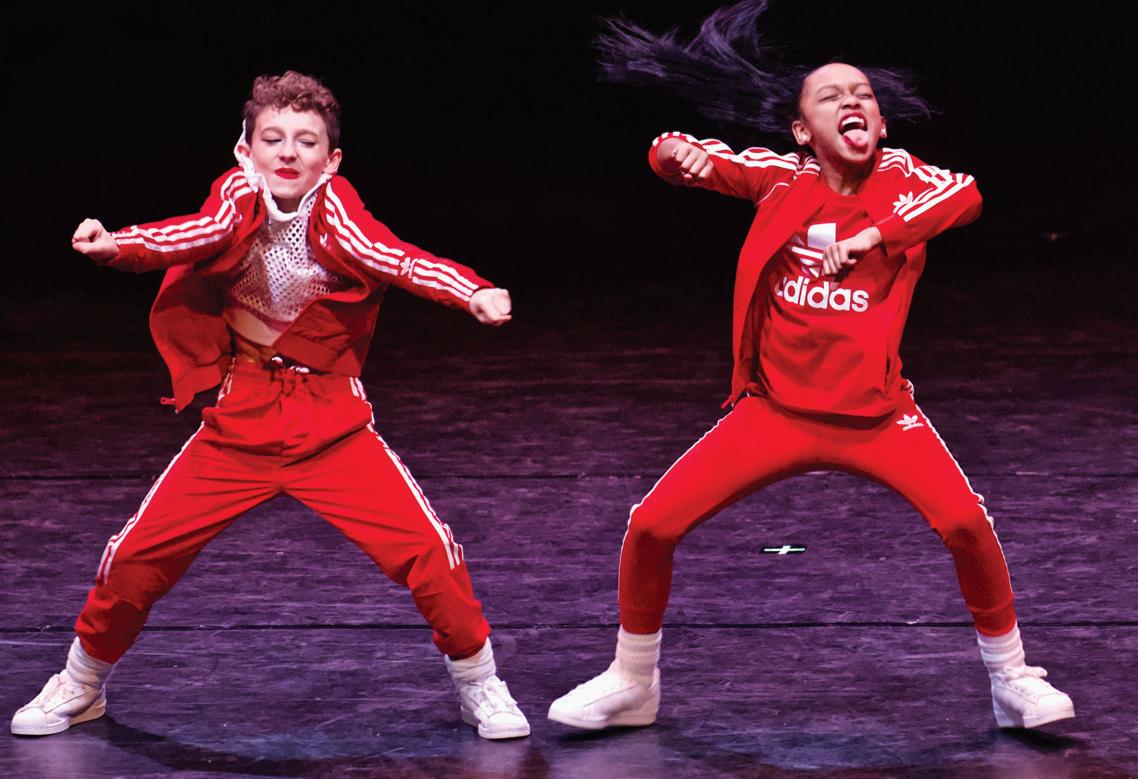
COCA gets creative, launches into virtual event space with spring fundraiser
By Kenya Vaughn Of The St. Louis American
Because of the coronavirus, The Center of Creative Arts (COCA) will embark on unchartered territory on Friday, April 24 for its 2020 installment of COCAcabana. An evening that has been putting the fun in fundraising since 1988 launches into the virtual
space tomorrow night at 7 p.m.
“We knew quickly that our party was not going to be able to happen as planned,” said Kelly Pollock, executive director at Center of Creative Arts (COCA).
Regional preventative social distancing orders in response to the COVID-19 pandemic prohibited gatherings larger than 10. COCA’s annual COCAcabana fundraiser drew more than 600 people last year – and raised more than $800,000 for arts education programming.
Because the event accounts for nearly onefourth of the organization’s contributed revenue and is a large source of funds for student scholarships, cancellation was not an option for their spring event.
“It’s known for being a wildly creative, fun party,” Pollock said. “The great part of doing this

COVID-19 continues to impact St. Louis cultural programming
By Kenya Vaughn Of The St. Louis American
As the toll of the coronavirus continues, so do the casualties of the normally robust and vibrant arts scene of St. Louis. More than a month into the unprecedented challenges that this pandemic has imposed on its presenters, every week brings news of a postponement or cancellation. Rightfully so, for the sake of the safety of patrons, artists and organizations – but, knowing that the health and well-being of the region is being prioritized by doing so doesn’t soften the blow.
Like so many with summer programming, Andrew Jorgensen, general director of Opera Theatre Saint Louis, was hopeful that the curve would flatten in time for their 2020 season – which included a production of “Porgy and Bess” with scenic design by legendary photography artist Carrie Mae Weems.
Two weeks into city and county-wide social distancing precautions, he had a hard reality to face. Even if the sanctions are lifted in time for the season, lost are weeks of technical pre-production and rehearsals that are required to create the caliber of shows their audience has grown accustomed to for more than four decades.
In order to protect their artistic integrity, the show could not go on.
“It has become clear that it is no longer possible to present our festival,” Jorgensen said with a somber tone in a video that was disseminated to patrons, supporters and the press and reiterating that the decision was for the safety of the artists, staff and audience.
“Our community will emerge from this crisis, and when we do so, shared artistic experiences will be more powerful than ever,” Jorgensen said. “Today, I promise you that we will return to creating art as soon as it is safe to do so. We are already hard at work on our 2021 Festival Season, which will be announced by early fall. Thanks to 45 years of your generosity and guidance, Opera Theatre is a resilient organization. We have never believed more strongly in our mission, and we look forward to the day when we can once again bring people together through the power and beauty of live opera.”
“Cautious, but optimistic,” was Black Rep’s Producing Director Ron Himes’ stance as he closed the enormously successful run of “Spell #7” early and waited to see if their season finale musical production, “Marie and Rosetta” would make it to the stage. The artists and production staff were on standby. They postponed from May to June. On Friday, the company announced that the season would have to end without their grand finale. See Spring, B2

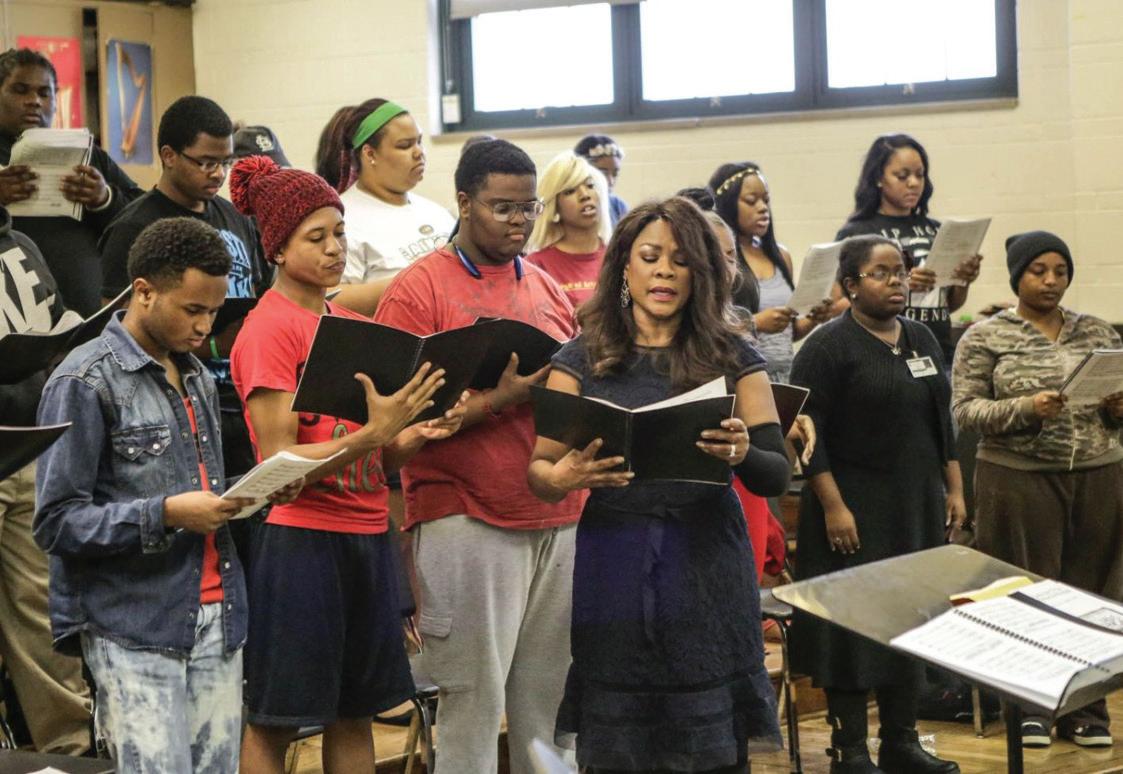

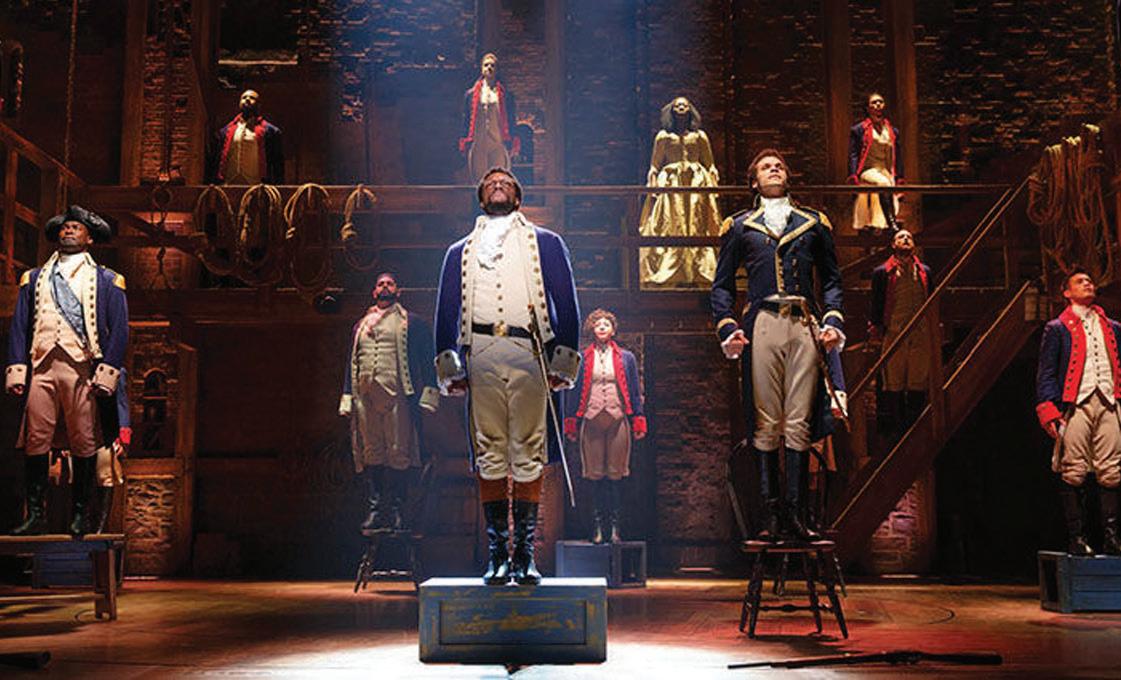
was set to return to the Fox in two weeks as part of
been postponed in the wake of
Continued from B1
our students,” said Duane M. Foster, Normandy Fine Arts teacher and coordinator. “Our students are strong, resilient, passionate, loyal, talented, outspoken, and confident, and our music teachers help our students reach levels greater than their own expectations.”
And as a 1987 graduate of Normandy High School, Foster was once one of those students. He was encouraged by his mentor, longtime Normandy music educator Dwayne Buggs, to further his music education at famed HBCU Morehouse College. Foster went on to appear on Broadway in productions such as “Ragtime,” “Porgy and Bess,” “A House of Flowers” and “Purlie.”
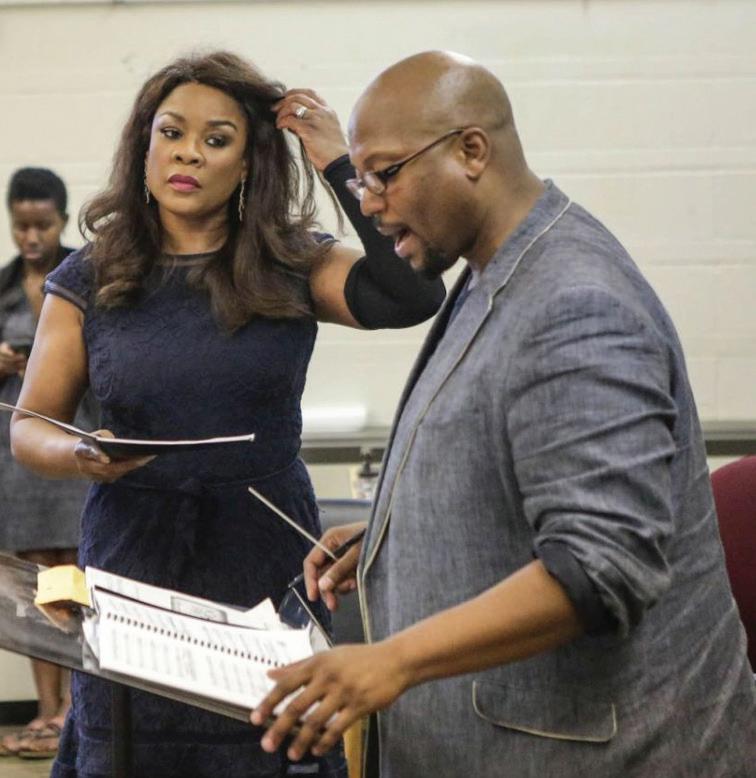
“The awesome creative team had been on hold hoping against the inevitable,” Himes said. “That company of artists, along with our staff and interns, are all safe and well but deeply disappointed. So now we begin an extended intermission, as we continue to work from home planning our second act, the return to the stage for Season 44.”
A late summer start for Shakespeare Festival St. Louis
It was much ado about everything as Shakespeare Festival St. Louis presented year-round programming as it geared up for its 20th anniversary production, the comedy “Much Ado About Nothing.”
The show was slated to open next month, but now moves to August 12 – September 6 to make provisions for social distancing to run its course. In the meantime, they have been agile in adapting to presenting programming in the virtual space with their “#ShakespeareTV” umbrella that includes “Shake20,” “Shakespeare in the Sheets (as opposed to their Shakespeare in the Streets)” as well as and “Zoom Plays” that highlight the work of local playwrights and “Shakespeare and Chill” through social media platforms such as Instagram Live and Facebook Live.
“During this crisis, we feel more connected to Shakespeare and his contemporaries than
ever before.” said Artistic Producing Director Tom Ridgely. “Biographer Jonathan Bate wrote, ‘The Plague was the single most powerful force shaping [Shakespeare’s] life and those of his contemporaries.’ During times of quarantine, Shakespeare wrote some of his most important sonnets and plays. We can’t claim to have his genius, but we will take inspiration from his dedication and from artists around the world that are stepping up to create, facilitate, and share stories in new and exciting ways.”
Hamilton on hold In less than two weeks, the hottest ticket for the Fabulous Fox Theatre’s annual U.S. Bank Broadway season was set to commence. Lin-Manuel Miranda’s cultural phenomenon “Hamilton” was to return to the Fox stage after an entirely soldout run in 2018.
Days after announcing the cancellation of the St. Louis leg of the “Cats” national tour, The Fox announced that “Hamilton” would be postponed with dates that are yet to be announced.
“The Fox is in discussion with the ‘Hamilton’ producers to reschedule an engagement and hopes to announce that information soon,” The Fox said in a statement that encouraged its patrons to keep their tickets until new dates are announced and that more information will be available when new dates are secured.
“The Fabulous Fox Theatre hopes to bring the show to St. Louis in 2020, but as with all things related to COVID-19 and the social distancing necessary
to keep guests and associates safe, theatre management will follow the lead of government and health officials in this matter,” the statement continued.
Symphony stops shows through May 10
The St. Louis Symphony Orchestra announced it cancelled all concerts and events through May 10 – including all remaining concerts in the SLSO’s Classical Season and the Link Up Education concerts on May 12-13. They said in a statement that the organization will announce a decision regarding its remaining summer concerts by May 1.
“In the meantime, the SLSO will continue to share the power of music with the St. Louis community through its social media channels, including its new #SLSOatHome videos created by SLSO musicians and the SLSO’s Instrument Playground Online, presented by PNC Arts Alive,” the statement said.
Pridefest postponed
Usually held in June, Pride St. Louis, St. Louis PrideFest 2020 has been moved to August 15-16.
“This decision to move PrideFest 2020 was difficult for the Board to make, but the health and safety of our LGBTQIA+ Community, our family, and all those who celebrate with us, remains our main priority,” the organization said in a statement.
He returned from New York in 2006. Immediately after, his career as an arts educator within the Normandy Schools Collaborative started and continues nearly 15 years later.
“Normandy has a strong, successful track record in Fine Arts, and our music education programs are no exception. If you come to a performance, prepare to be in awe,” said Charles J. Pearson, superintendent of schools. “But even more importantly, the students in these programs are leaders among their peers and graduate to become successful in any endeavor, be it in music or any other field.”
Normandy offers a variety of music education options including jazz, marching and concert band, orchestra, chorale, piano, and guitar for students from third grade through high school.
“We congratulate and thank our music teachers for always giving our students their best,” Pearson said.
In order to be considered for the award, the district answered detailed questions about funding, graduation requirements,
music class participation, instruction time, facilities, support for the music programs, Responses were verified with school officials and reviewed by The Music Research Institute at the University of Kansas.
The award recognizes that Normandy Schools Collaborative is leading the way with learning opportunities as outlined in the Every Student Succeeds Act (ESSA). The legislation guides implementation in the states and replaces the No Child Left Behind Act (NCLB) which was often criticized for an overemphasis on testing-while leaving behind subjects such as music. ESSA recommends music and the arts as important elements of a well-rounded education for all children.
A 2015 study supported by The NAMM Foundation entitled “Striking A Chord” also outlines the overwhelming desire by teachers and parents for music education opportunities for all children as part of the school curriculum.
“Congratulations to the music teachers of the Normandy Schools Collaborative for this outstanding honor,” Foster said.
Normandy Schools Collaborative produced a video earlier this school year highlighting the district’s Fine Arts programs, including its music education program. That video can be found here: https:// youtu.be/R9w_LhdF-dA
Continued from B1
is that we are on the leading edge [in the region] for putting a virtual fundraiser together –and we can be wildly creative because there aren’t a lot of roadmaps right now.”

EAST ST. LOUIS
In one year of prep to teach in District 189:
- Earn $30,000 & receive supportive training
- Secure Illinois teaching license
- Obtain Master's Degree
- Transform lives!

Apply at https://bit.ly/2Hh5rc6 Contact: UrbanEdTRP@estl189.com

Themed as COCAchella, the 2020 virtual reimagination will feature headlining sets by Tonina and The Knuckles, with special performances showcasing the talent of COCA student companies, COCAdance and COCA Hip Hop Crew. The evening also includes an online auction and raffles. Following the formal program, guests can head to COCA’s Instagram account for the after party that includes live streaming performances by 18andCounting, Agile One and Makeda Kravitz.
“We hope that it is a night to lift people up and to offer a bit of fun and engage with each other,” Pollock said. “We wanted to make sure that we would still be able to build and
connect community – which is what COCA does so well.”
COVID-19 has resulted in the delay in a huge reveal of expansion and growth of COCA’s University City headquarters – that includes a new state-of-the-art theater space with two tiers of seating with a capacity of 454.
The building, which is an epicenter for arts education, is now closed through May 3.
“We are excited at some point soon to unveil our expanded campus, but what we don’t want is to be isolated,” Pollock said. “We know that we can still connect through the arts. We quickly adapted to our online learning platform. Our teaching artists are still connecting with our students.”
Through virtual technology, editing and a bit of archive footage, the talent that normally flows through the halls of Trinity Avenue will be overflowing at COCAchella.


COCA saw the possibility and opportunity in COCAchella, which opened the local event to the nation – and the globe – through the world wide web. But there was a bit of natural anxiety with the event’s repackaging.
The biggest fear was whether supporters and sponsors accustomed to the traditional form would be along for the ride.
“This is a huge event for us in terms of our revenue stream each year,” Pollock said. “We’ve had to lean heavily on our sponsors and those who had already purchased tickets to ask them to stick with us and make the case for how desperately COCA and other arts organizations need your support right now.”
The response has been overwhelming.
Their key sponsors – including Anheuser-Busch, a presenting sponsor that has been COCAcabana’s presenting sponsor for the past decade –stayed put. So did the patrons and donors.
There will be a segment from last year’s COCAcabana which featured Kennedy Holmes and the Hip Hop Crew, as well as a virtual flash mob woven together through videos of individual performances.
“If not for their support, all of the other sponsors and all of the other individuals who are sticking with us. We would not be able to get to the other side,” Pollock said.
Event co-chairs for COCAchella include Gregory Glore and Sherry Sissac, Abby and Michael Goldstein, Elizabeth Mannen and Elizabeth and Richard Nix, Jr. Jane and Dave Peacock are COCAchella’s Honorary Chairs and Erin Moore is this year’s Alumna Chair.
Because of the event, Pollock and COCA are hopeful for the future of the organization and the region as we prepare to restore and rebuild following COVID-19.
“We know that sometime soon we will have the best present to unwrap, but we are not there yet,” Pollock said of COCA’s expansion. “But I think in the meantime we want is to inspire people, to keep people connected and to keep hope alive – and know that we still have a bright future ahead of us and that this time right now is temporary.”
COCAchella will take place at 7 p.m. on Friday, April 24. For more information, or to RSVP, visit www.cocastl.org
from your
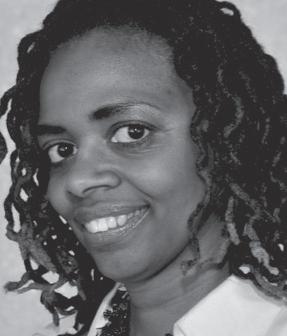
Renee Franklin Community Partnerships Director Saint Louis Art Museum
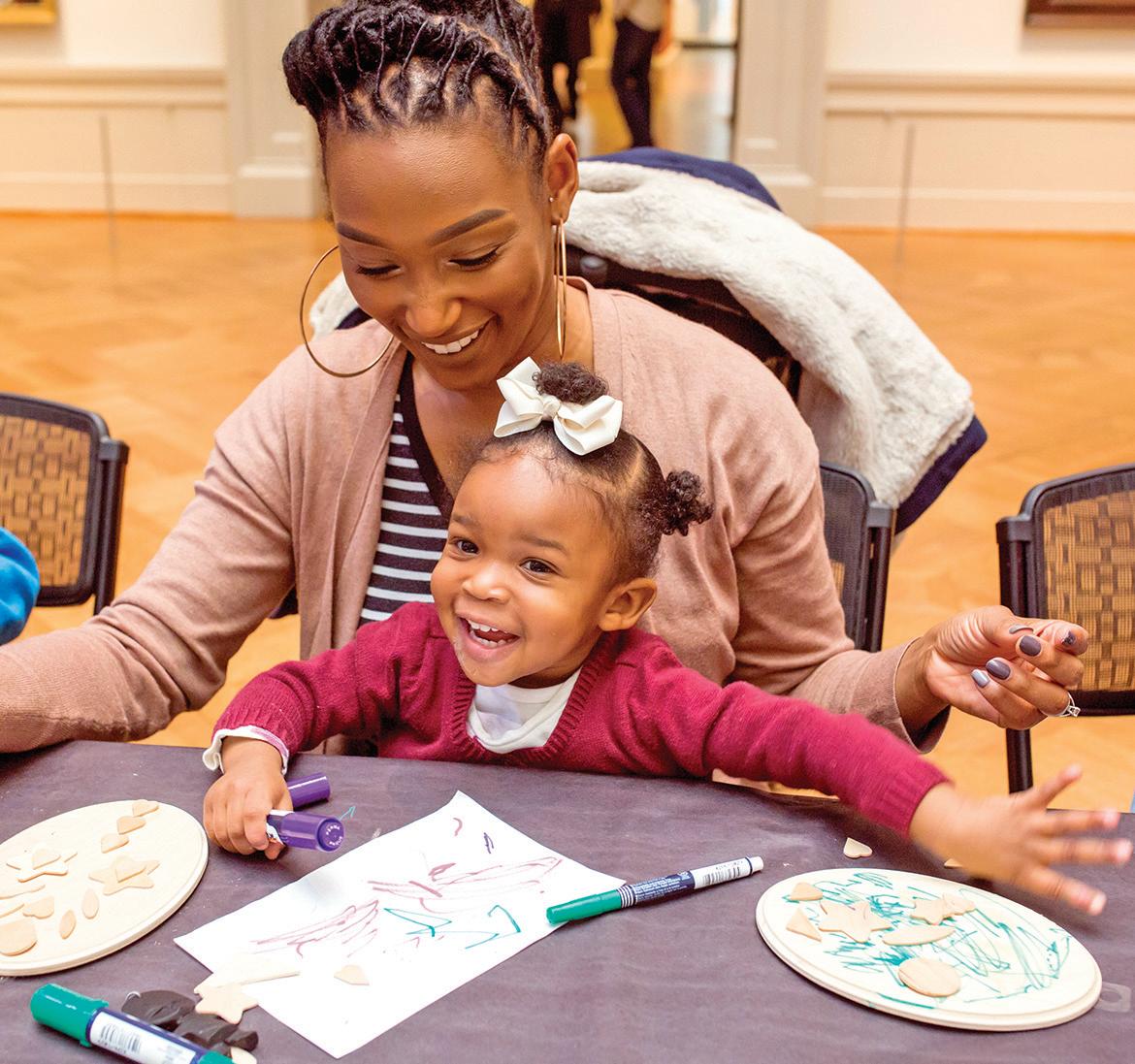
As our country learns to embrace a new normal during these uncertain times, the Saint Louis Art Museum’s mission to elevate the human spirit rings true now more than ever. Although we are unable to welcome you inside the Museum, we can continue to share with you fun and educational programming along with amazing works of art. We invite our youngest visitors and those young at heart to participate in Wee Wednesdays. The online program encourages children ages 3 to 5 years and their caregivers to explore, create, and grow as they discover new ways of interacting with art and each other.
There are currently three amazing videos posted at the Museum website, and a new video will be added each Wednesday with a different theme. We invite you visit slam. org, click the Learn tab and then the Families, Teens, and Youth tab to view videos anytime of the day. All video presentations begin with our Museum educator reading a book followed by a close look at works of art and then an art activity created from materials found in your home.
Take this opportunity to explore works of art created by African American artists Allan Rohan Crite, Horace Pippin, and Kehinde Wiley. The Wee Wednesdays video presentation Homes and Neighborhoods takes a close look at Crite’s painting Douglass Square which shows a neighborhood in Boston full
of people and activity. As its title suggests, Pippin’s Sunday Morning Breakfast depicts a scene of a family preparing to eat breakfast.
This video includes a book titled Home by Carson Ellis and encourages young ones to create your own home using a paper bag or cardboard box. Community and art came together in 2018 with the Museum’s exhibition Kehinde Wiley: Saint Louis. The Me and My Feelings video looks at Wiley’s painting Charles I, and the video includes a book titled Tiger Days: A Book of Feelings by M. H. Clark. Children can make puppets using a cardboard tube (toilet paper or paper towel roll) or a long-handled kitchen utensil.
Join us for future videos, which will feature themes about colors, nature, and much more. Each video includes resource guides available for download on the Museum’s website. The guide provides instructions for the art-making project and additional recommended book titles related to that week’s theme. When available, books are linked to Open Library, a free online library catalog so participants can enjoy them virtually from home.
We encourage you to share your artwork that you create with the Museum by using the hashtags #STLArtMuseum and #WeeWednesday on social media. We look forward to you joining Wee Wednesdays at slam.org.

St. Louis Treasurer Tishaura O. Jones extended pandemic parking changes on Tuesday, April 21 indefinitely, with plans to reevaluate mid-May. The changes are designed to help prevent the spread of COVID-19 and address economic hardship.
Those changes are:
• Parking meters will be free, and no tickets will be written.
• Penalties will be
frozen through May.
• All hearings for parking ticket adjudication will be rescheduled.
Also, scheduled events through April are postponed, including College Kids events. Several resources are available online at www.stlofe.org.
All departments in her office have implemented skeleton crew and workfrom-home plans. Offices and garages are being thoroughly
cleaned with numerous precautions to protect the health of St. Louisans, she stated.
“In response to the regional order to shelter in place and the national social distancing guidelines,” Jones stated in a release, “I am extending the freeze on parking payments and tickets for the health and wellbeing of my staff and all St. Louisans.”
Thinking about getting a degree but worried about the cost? You’re not alone. Many people considering school for undergraduate or graduate programs worry about finances. Unless you’re able to score a full ride or have the ability to self-pay, you’ll likely need to look at a range of financial assistance: scholarships, state or federal programs and even programs through a current employer. Here are some helpful tips to funding your degree:
Start Early
Before you seek financial assistance, there are a few things to prepare. First, consider the schools, programs and specialty areas that interest you. Then, begin gathering the documentation and information you will need to not only apply for those schools but also for scholarships and financial aid. You can get ahead by writing a personal statement or essay and collecting and verifying references, as those are required for most scholarships. Applications for financial assistance have strict deadlines, and the process can be lengthy. Preparation is essential to get them out the door on time.
Apply for Scholarships
When it comes to scholarships, consider applying for multiple opportunities to cover your costs. Even a $200 award could help cover expenses like textbooks. You can find scholarships through professional organizations, local community organizations and even the schools themselves. These categories can help you in your search:
SPECIALTIES
If you know that you’d like to go into a specific field or profession, look for scholarships offered by related professional organizations or companies.
MINORITY GROUPS
Scholarships are often available to students from minority groups who are underrepresented in certain fields.
NON-TRADITIONAL STUDENTS
Students who attend school later in life or as
a working parent may be eligible to apply for scholarships geared toward non-traditional students.
VETERANS & PUBLIC SERVANTS
If you or members of your family served in the military or as police or firefighters, you could be eligible to apply for certain scholarships.
SCHOOL-SPECIFIC
In addition to the above categories, don’t forget to look for scholarships at the schools you’d like to attend. Many offer their own scholarships to make education affordable and attainable for students.
Look Into Financial Aid
If you’re new to financial aid, learn more about the different types available, including state and nonprofit programs, and complete the Free Application for Federal Student Aid (FAFSA) form at StudentAid.gov. Once you’ve applied to a school, you can reach out to their financial aid office for more specific guidance and advice.
With thousands of scholarships and funding programs available, it can feel overwhelming to find and apply for the right ones for you. The sooner you get started — and the more you prepare ahead of time — the better your experience will be and the closer you will be to making your education a reality.
If you’re considering a career in nursing, Goldfarb School of Nursing at Barnes-Jewish College offers an array of nursing scholarships, and their dedicated financial aid counselors will help you navigate the complexities of financial assistance.
Sponsored By:


By Chad Davis Of St. Louis Public Radio
When the Rev. Carl S. Smith preached his last sermon from the pulpit of New Beginning Missionary Baptist Church on March 22, he told members of the congregation that because of the Stay at Home orders they might not see each other for a while.
But he commended those who came to the service and said he understood that some stayed at home to protect themselves from the virus.
“The bottom line is, I don’t hold it against nobody who didn’t come,” Smith said to those in his church, whom he would address via computer the following week. “It’s probably good that some are not here.”
Less than two weeks later, Smith became a victim of COVID-19, leaving his family and friends to cope with a deep loss. Smith and his wife, Geraldine, had developed coughs not long after his last sermon. The two went to the hospital a few days later, and on April 1, Smith called his adult children and told them he had tested positive for the novel coronavirus. Because he was fond of playing tricks on them, at first they didn’t take him seriously.
“We were like, ‘Dad, stop playing with us.’ And he’s like, ‘No, you know, we know I have it,’” recalled his daughter Nia. “Then a few hours later, my mother’s test came back positive as well.” Smith was discharged from the hospital a day after he received the test results, but a few days later, he became so sick that he had to return. His wife also was very ill. Because of a shortage of hospital beds, they were admitted to different hospitals.
On April 9, he died. Geraldine Smith has been released from intensive care and

is recovering. Nia Smith said her father’s death shook her, her brother and their two sisters — and their mother’s illness has them worried.
“It’s very challenging,” she said. “Not having our mother here with us, knowing that she’s still fighting for her life, even with the improvements, it’s still hard to not have her present.”
The couple would have celebrated 37 years of marriage on June 11. They met at the University of Missouri-St. Louis and dated for six months before he proposed on New Year’s Eve 1982.
Geraldine Smith worked for the National Geospatial-Intelligence Agency, and, for 22 years, her husband served as an officer in the St. Louis Metropolitan Police Department. At the time of his death, he was president of the St. Louis Association of Retired Police Officers.
His four adult children remember him as a kind officer who often brought at-risk children to live with the family. He wanted to help give those children a better life. Some lived with the family for a few weeks, others even longer.
Smith also wanted to serve his com-

Rev. Carl S. Smith and family gathers at New Beginning Missionary Baptist Church.
Photo by Nia Smith
munity. Sgt. Heather Taylor, president of the Ethical Society of Police, said he mentored other officers and was a champion of community policing.
“He was just there for people, and we always took from him,” Taylor said.
“We always took his experience, his wisdom, and he always gave guidance, and he mentored so many people of all demographics.”
“After losing an uncle to this disease the day before Rev. Smith passed away, it’s the worst thing,” Hankerson said. “If this was under normal circumstances, I’m going to tell you, the clergy of St. Louis, we would have taken over that hospital.”
But Smith’s death presents another challenge for those who knew him: how to grieve for someone who spent years teaching others how to cope with death.
“When it hit, I was numb,” said the Rev. Linden Bowie, a friend of his for 28 years. “But you have to come out of it, because you realize that there are individuals who are looking for some sense of direction and hope through all of this.”
Nia Smith and her siblings find their father’s death difficult, but they’re comforted by memories of how he celebrated life with them and others. She said a video from last October showing her parents dancing will stay with her for the rest of her life.
“We were at an award ceremony hosted by Harris-Stowe State University,” Nia said. “They just got to dancing. And it was just so exciting to, you know, just to watch them dance and have fun and be youthful.”
Follow Chad on Twitter: @ iamcdavis.
Reprinted with permission from news.stlpublicradio.org.
Even when he was a police officer, Carl Smith was preaching full time. He founded New Beginning Missionary Baptist Church 22 years ago and led it for two decades, welcoming the young and helping church members mourn their loved ones when they died. He also served as the first vice president of the St. Louis Metropolitan Clergy Coalition. For Bishop Elijah H. Hankerson, its president, Smith’s death hit extremely hard.

n “When they speak Michael Jordan, they should speak Scottie Pippen.”
— Michael Jordan
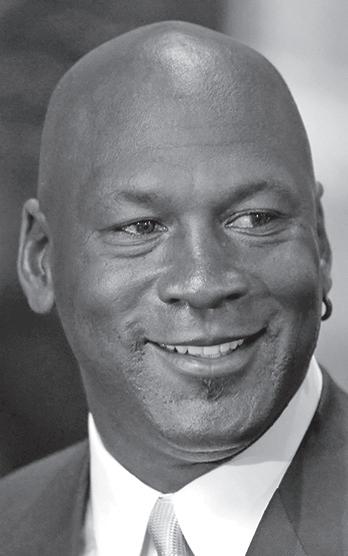
APRIL 23 – 29, 2020
With Alvin A. Reid
One of the first casualties of the delayed Major League Baseball season was the annual celebration of Jackie Robinson Day.
Major League owners, under threat of punishment, allowed Robinson to play on April 15, 1947 for the Brooklyn Dodgers. He went on to become a Hall of Famer and one of the most recognizable names in the history of baseball in America. Since 2009, all players wear the No. 42 on April 15 and home teams - usually - have some type of recognition ceremony. I’m not a real fan of these events because most of them aren’t sincere. Especially when a team has no black players and the manager isn’t African American.
about Jackie.”
Chicago White Sox shortstop Tim Anderson, the reigning American League batting champion, has rap music blaring as he strides to the plate for each at-bat during home games. He drew the ire of outof-touch players, managers, fans and – very importantly – some media members for his flamboyant bat flips after he connected on some home runs last season.
He’s black and he’s proud. He also honored the memory of Robinson last week.
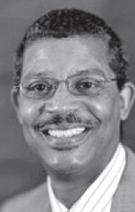
Seventy-three years after Robinson played his first game, just 7.7 percent of MLB players are black. This is down almost 10 percent from 1990. There are 30 MLB franchises and just two have a black manager.
Dusty Baker was hired by the Houston Astros in the aftermath of the sign-stealing scandal. Dave Roberts, one of the prime victims of the Astros’ unsavory behavior, is manager of the Los Angeles Dodgers.
After more than 50 years in baseball, Baker said he’s tired of talking and wants more action and results.
“It’s frustrating because we’ve talked about it forever … but it seems like the numbers are dwindling instead of increasing,” Baker said in an Associated Press story on April 15.
“Hopefully in this decade and the next decade there will be more guys that get a chance. All they need is a chance. A lot of guys have been bypassed and overlooked.” Baker called Robinson, “a man that made it possible for me to not only play but manage and gave us all a great sense of pride about being a black American.” Roberts said he would spend part of April 15 “continuing to educate my son, my daughter
He participated on a video call with students enrolled in the White Sox Amateur City Elite (ACE) program. He said, as a black player, it’s his responsibility to increase the number of black youths involved in baseball.
“There’s not really many black kids in the league,” the 26-year-old star told the Chicago Tribune. “So, who’s going to motivate these kids? Who’s going to inspire them? That’s something I take pride in. I definitely always look forward to wearing No. 42.” According to its website, ACE “provides resources and hope to more than 100 inner city youths each year who otherwise would not be able to keep up with the travel team culture that has permeated today’s youth baseball.” It also creates educational opportunities “and avenues to further pursue a career in collegiate or professional sports.”
When the season, hopefully, begins later this summer, will Anderson get to wear No. 42?
Will MLB celebrate Jackie Robinson Day?
Pittsburgh Pirates pitcher Chris Archer wonders about that too – and he asked MLB via Twitter.
“Dear @MLB, If/when the season starts back can we have a day where we all wear number 42? It’s my fav alternate jersey of the year. Pretty please,” Archer tweeted. His team made several donations in support of Jackie Robinson
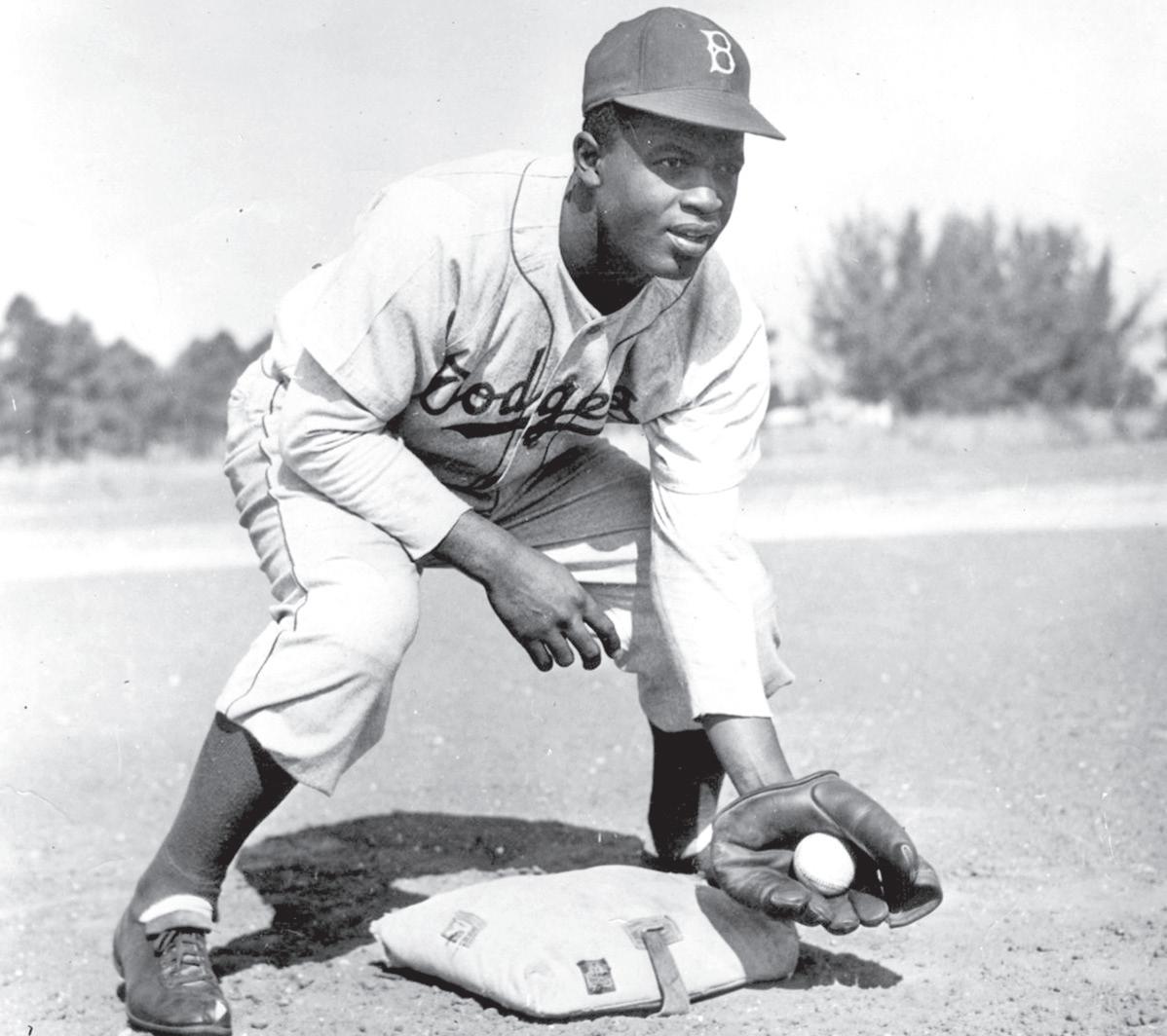
Day.
Other players and teams joined online recognitions.
The Jackie Robinson Foundation used the occasion to launch a virtual learning hub. Its content addresses different parts of Robinson’s life and legacy. It includes former MLB players CC Sabathia and Harold Reynolds, reading excerpts of Robinson’s daughter Sharon’s book, Jackie Robinson: American Hero.
Reynolds played most of his career with the Seattle Mariners, and his former team’s nine black players are the most on any 25-man roster in Major League Baseball.
The Mariners hosted an online discussion led by Mariners broadcaster Dave Sims, who is black, that included second basemen Dee Gordon and Shed Long, outfielder Mallex Smith, Bob Kendrick, president of the Negro Leagues Museum in
Kansas City and Reynolds. Baltimore Orioles infielder Richie Martin read My Little Golden Book about Jackie Robinson on the team’s digital kids’ corner. Martin’s grandfather, Walter “Bancy” Thomas, played with Robinson in 1945 with the Kansas City Monarchs.
The reigning world champion Washington Nationals posted a video on Twitter including highlights of Robinson and photos of some players and staff members and their families wearing shirts featuring Robinson’s No. 42.
Nationals manager Mike Rizzo, who replaced Baker after he was fired following a postseason appearance in 2018, calls Jackie Robinson Day, “one of the biggest days of the Major League calendar –and the calendar in general.”
“He’s one of the most important people in American society, not only sports. Although we won’t be playing
any games (on April 15), we certainly will stop and remember what he’s meant to the game of baseball and to the fabric of America.”
A site to behold
The St. Louis Cardinals weren’t scheduled to play at home on Jackie Robinson Day, but the franchise would have been part of one of MLB’s largest celebrations. Had the game that night taken place, it would have been against the host Los Angeles Dodgers. Robinson, of course, played for the Brooklyn Dodgers before the team headed west to L.A.
The Cardinals posted an informative story written by Anne Rogers, who covers the St. Louis Cardinals for mlb. com, on April 14 that details the history of ballparks used by St. Louis Negro League teams from the 1920s to the late 1940s.
Her tour begins at the Harris-Stowe State University baseball diamond, where a plaque reads, “Negro National League Baseball played here A baseball park built for the Negro National League St. Louis Stars stood on these grounds.”
It also states that it was the first professional ballpark in America owned exclusively by African Americans.
Ray Doswell, curator of the Negro Leagues Baseball Museum in Kansas City, told Rogers ownership of the ballpark “allowed the Stars to play more games in St. Louis instead of traveling to other cities, and in turn, that helped local businesses there.”
A trolley car building’s wall also served as the leftfield wall and was just 270 feet from home plate. That wall was 35-feet high. Fenway Park’s famed “Green Monster” in left field is 37-feet tall.
“(I)t’s still one of the few 1920 Negro League parks that’s still being played on, the actual diamond,” Kevin Johnson, co-founder of Seamheads.com and co-chairman of the SABR ballparks committee, said.
“There were never any other buildings built on the site except for community centers there. And then eventually, over time, it became a baseball field again. Most of the other parks from that time, now there’s buildings or apartments or whatever over them.
“But not there in St. Louis. It’s back to being a diamond again.”
To read Rogers’ article, visit www.stlcardinals.com and click the “news” category at the top of the website.
Alvin A. Reid was honored as the 2017 “Best Sports Columnist – Weeklies” in the Missouri Press Association’s Better Newspaper Contest and is a New York Times contributor. He is a panelist on the Nine Network program, Donnybrook, a weekly contributor to “The Charlie Tuna Show” on KFNS and appears monthly on “The Dave Glover Show” on 97.1 Talk.” Find him on Twitter at @aareid1.

All of us basketball fans were eagerly awaiting the debut of “The Last Dance,” the 10-part documentary on the great Chicago Bulls dynasty and particularly the 1997-98 championship. The first two episodes were brilliant. It was great for ESPN to move this documentary up a couple of months for us sports fans who are starving for something to watch with no live sports going on because of this pandemic.
This presentation will bring back great memories for all of us old-school basketball fans while also introducing this great dynasty to a younger generation of fans for their enjoyment.
After Sunday’s debut, I’ve had many people ask for my opinion as to who I think is the greatest basketball player of all time. As a rule, I just try to enjoy all of the great play-
ers in their particular era and appreciate all they have done for the game. With that being said, I do have some personal thoughts on the subject.
Growing up in Milwaukee as a youngster, I got a chance to see Kareem Abdul-Jabbar up close and personal at the beginning of his career while following his 20 years of greatness. In my eyes, he was the best basketball player I’ve ever seen and I never thought I would see someone surpass him. That was until Michael Jordan came along and changed my opinion with not only all of the extraordinary things he accomplished, but the impact that was felt by the time he was finished. Here are five quick reasons as to why I think Michael Jordan is the greatest to ever play the game.
• Individual offensive dominance: Michael is the most dominant offensive perimeter player in the history of the game. He won 10 NBA scoring titles, which is still a record.
• Individual defensive dominance: He was selected
to the NBA All-Defensive Team nine times during his career. He led the league in steals three times and was the NBA’s Defensive Player of the Year in 1988. (By the way, he led the NBA in scoring that same year at 38 points a game).
• Team dominance: Michael was the linchpin of the Chicago Bulls dynasty, which is one of the most enduring team legacies of our lifetime. The Bulls ruled the 1990’s with six championships,

which came on double three-peats from 1991-93 and 1996-98.
• Unconventional dominance: The history of the NBA suggests that you are not supposed to build a championship team, much less a dynasty around a 6’6” shooting guard. For generations, the league was built around the big man. You had Bill Russell, Wilt Chamberlain, Abdul-Jabbar, Shaq, Hakeem, Tim Duncan dominating the paint and winning champion-
ships. If it wasn’t the bigs, you had those big hybrid performers such as Magic Johnson, Larry Bird, LeBron James, Kevin Durant and Kawhi Leonard running things in the league.
Michael bucked the popular thinking that bucket-getters like him were good to sell tickets and put butts in the seats with his tremendous scoring prowess, but forget about winning championships. It cannot be done. MJ destroyed that myth by not only winning a championship, but authoring a dynasty built around his scoring. He led the league in scoring in all six of the Bulls’ championship seasons. The only other shooting guard who would come close to this success was the late, great Kobe Bryant, who patterned everything he did after Michael Jordan.
• Finally and most important, it was his indomitable will that pushed him to being the best ever to play his game. If there is one thing to take from this documentary, it is his insatiable need to win and how he pushed through any
and every obstacle in his way to get to the top; and stay on top once he achieved that goal. The Detroit Pistons tried to derail Jordan by any means necessary. The “Bad Boys” tried to break him with their brutal physicality. It worked for two years, but in that third year, Jordan and the Bulls broke through and dropped off the Pistons in 1991. And when Michael took over the NBA throne, his competitive dominance and mental toughness would not let anyone come close to knocking him off. Thanks to Jordan’s unwillingness to share, the NBA has an All-Star fraternity of all-time greats that never won a championship. Charles Barkley, Karl Malone, John Stockton, Reggie Miller and Patrick Ewing never tasted championship champagne because Jordan simply would not allow it on his watch. To me, that’s the most amazing part of his legacy. The next two episodes of “The Last Dance” are on tap for Sunday night. Can’t wait.


Laumeier Sculpture Park is seeking a Marketing & Communications Manager! The full job description can be viewed at https://www. laumeiersculpturepark.org/ job-opportunities.
St. Louis Lambert International Airport
Sealed proposals will be received by the Board of Public Service, Room 208, City Hall, 1200 Market Street, St. Louis, Missouri, 63103 until 1:45 PM, CT, on May 12, 2020, then publicly opened and read. Plans and Specifications may be examined on the Board of Public Service website http://www.stl-bps.org (BPS On Line Plan Room) and may be purchased directly throughthe BPS website from INDOX Services at cost plus shipping. No refunds will be made.
Bidders shall comply with all applicable City and State laws (including DBE/MBE/WBE policies). Mandatory prebid meeting will be held on Tuesday, April 21, 2020, at 10:00 A.M. in the Ozark Conference Room (AO-4066) at the Airport Office Building, 11495 Navaid Rd., Bridgeton, MO 63044.
Join a great team with an Employees First approach that’s helped make St. Peters one of the best places to live in America! Various FT and PT positions with competitive pay at multiple city facilities including St. Peters Rec-Plex, Water’s Edge Banquet Center and St. Peters Golf Club.
To view all current openings and to apply, please visit www.stpetersmo.net/Jobs.
CITY OF ST. LOUIS ST. LOUIS LAMBERT INTERNATIONAL AIRPORT
Solicitation For Bids (SFB) for Snow Removal Services
Bids Wanted
Bid documents may be obtained at St. Louis Lambert International Airport, Airport Properties Division, Monday through Friday between 8:30 a.m. and 5:00 p.m., or by calling (314) 890-1802. This SFB may also be obtained by visiting our website at www.flystl.com/business/ contract-opportunites.
Robert Salarano Airport Properties Division Manager
Public Notice of Single Source Procurement
Notice is hereby given that the Metropolitan St. Louis Sewer District is proposing to procure temporary help services from Aarkay Technologies in an effort to support the IT Technology Plan. The District is proposing single source procurement for this service because it does not have the internal expertise to fulfill this Information Technology role. Any inquiries should be sent to strenz@stlmsd.com.
Metropolitan St. Louis Sewer District is an Equal Opportunity Employer.
Bids for TASMG Readiness Center
The City of Crestwood is seeking bids for the 2020 Mill & Overlay Project. Qualified contractors may obtain a Project Manual online at www.cityofcrestwood.org or in person at the City of Crestwood Government Center Lobby located at #1 Detjen Dr. St. Louis, MO 63126. Bids are due by 10:00 A.M., CDT, on Thursday May 14, 2020. Please call (314)729-4720 for more information.
City of Crestwood, 1 Detjen Drive, Crestwood, MO 63126 is seeking bids for general works, mechanical, electrical and plumbing bid packages at the Crestwood City Hall. Bids due 5/12/20 by 3:00 p.m. A pre-bid meeting will be held on 4/28/20 by appointment only. Project manuals, registration and questions through Katie Aholt (katie@navigatebuildingsolutions.com
Warehouse for Lease
157,000 S.F. #5 Clinton St. St. Louis, MO 63102
All bidders must regard Federal Executive Order 11246, “Notice of Requirement for Affirmative Action to Ensure Equal Employment Opportunity”, the Equal Opportunity Clause” and the “Standard Federal Equal Employment Specifications” set forth within and referenced at www.stl-bps.org (Virtual Plan Room).(Announcements). SPECIAL SCHOOL DISTRICT OF ST. LOUIS COUNTY ACCEPTING SEALED BIDS (SSD# 110-20)
a t M i s s o u r i National Guard AVCRAD Facility, SpringfieldBranson National Airport, Project No. T1809-01 will be received by FMDC, State of MO, UNTIL 1:30 PM, 5/21/20 via MissouriBUYS. Bidders must be registered to bid. For specific project information and ordering plans, go to: http://oa.mo. gov/ facilities
Bids for REBID OF Install Nature Park, Missouri School for the Blind, St. Louis, Missouri, Project No. E1703-01 will be received by FMDC, State of MO, UNTIL 1:30 PM, 5/12/2020 via MissouriBUYS. Bidders must be registered to bid. For specific project information and ordering plans, go to: http:// oa.mo. gov/facilities
REQUEST FOR PROPOSALS
,
The Land Clearance for Redevelopment Authority of the County of St. Louis requests proposals from qualified environmental consulting firms to provide professional services related to the implementation of Brownfields Assessment, Cleanup, and Revolving Loan Fund grant projects and additional non-grant funded Brownfields environmental assessment activities. A five percent bid preference may be available to certified MBE firms. A copy of the complete RFP is available at https://stlpartnership.com/rfp-rfq/. Proposals must be received no later than 3:00 PM on Friday, May 15, 2020.
St. Louis Economic Development Partnership Equal Opportunity Employer
Notice is hereby given that the Metropolitan St. Louis Sewer District is accepting proposals in the Purchasing Division, 2350 Market Street, St. Louis, Missouri 63103-2555 until 10:00 a.m. on April 22, 2020 to contract with a company for: REBUILD/ REPAIR THICKENER 1 Specifications and bid forms may be obtained from www.msdprojectclear.org, click on the “DOING BUSINESS WITH US” link, (View Non-Capital Bids (Goods & Services). The bid document will be identified as 10337 RFQ. If you
The Board of Trustees of the Metropolitan St. Louis Sewer District will, at 6 p.m. on Thursday, May 14, 2020, at the offices of the District, 2350 Market Street, St. Louis, Missouri, hold a public hearing for the purpose of presenting the District’s proposed Operating Budget, Capital Improvement and Replacement Program, user charges for the 2021 Fiscal Year, and finding and determining the amount of taxes which shall be levied, assessed and collected in 2020 on all taxable tangible property in the District within the corporate limits of the City of St. Louis and St. Louis County, respectively, and on all taxable property within St. Louis County in the various subdistricts.
The Metropolitan St. Louis Sewer District is aware that the residents within the St. Louis Region and the State of Missouri are currently under a Stay-At-Home order. Going forward, and for this upcoming meeting, all MSD Public Meetings will be available live via our YouTube Channel which can be found here: https://www.youtube.com/msdprojectclear or www.msdprojectclear.org

The City of St. Louis Port Authority will receive Sealed Proposals to lease on 5/7-2020. For moreInfo. Visit https://www.stlouis-mo.gov/ government/departments/ sldc/procurement/index.cfm
Notice to contractors, Special School District is accepting bids for Interior Upgrades at Litzsinger, Ackerman & Southview Schools. For details, please visit the website at www.ssdmo.org/rfps.html
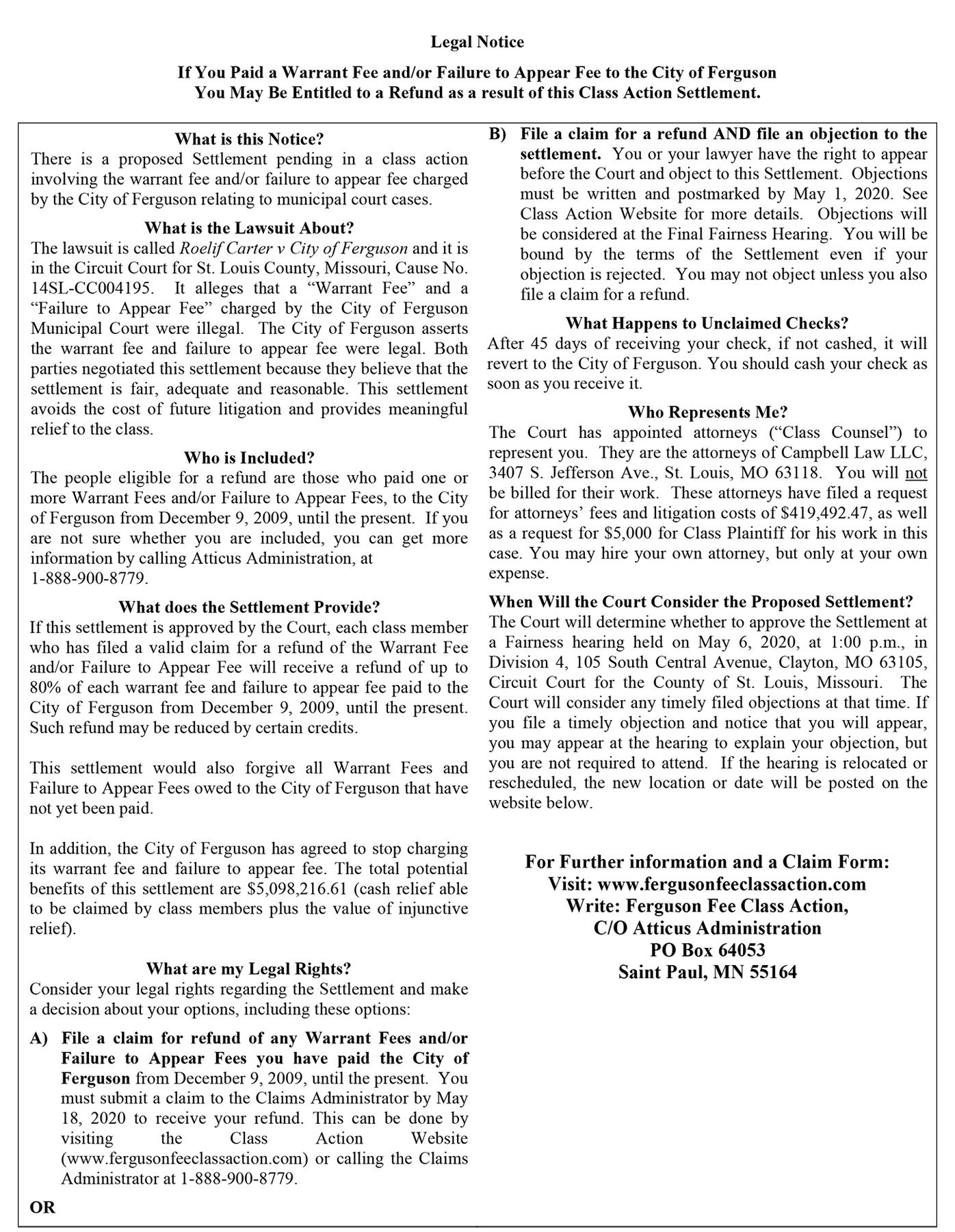







a
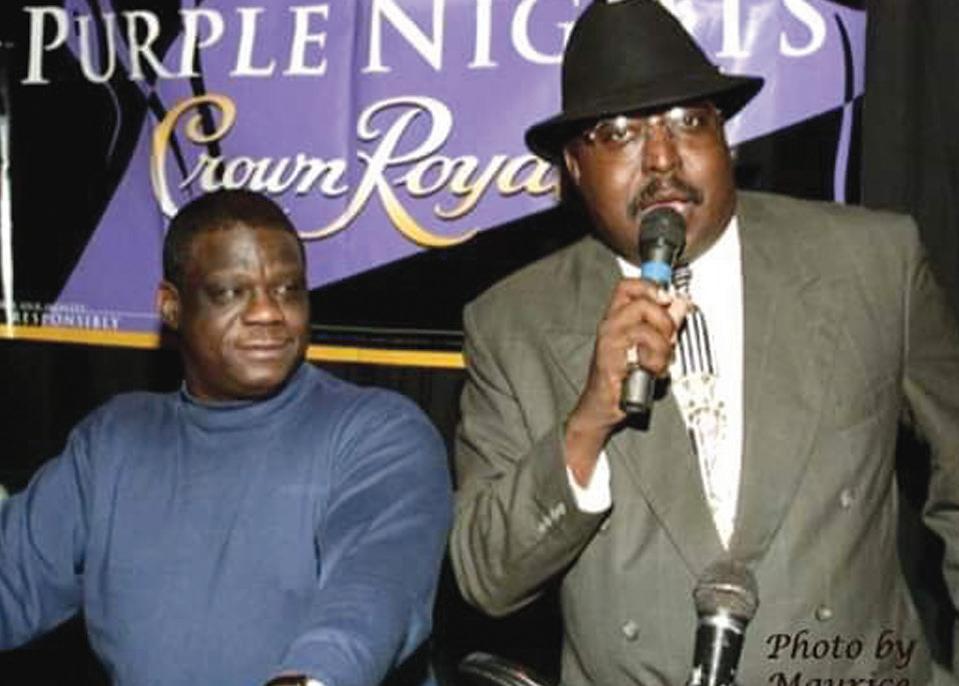
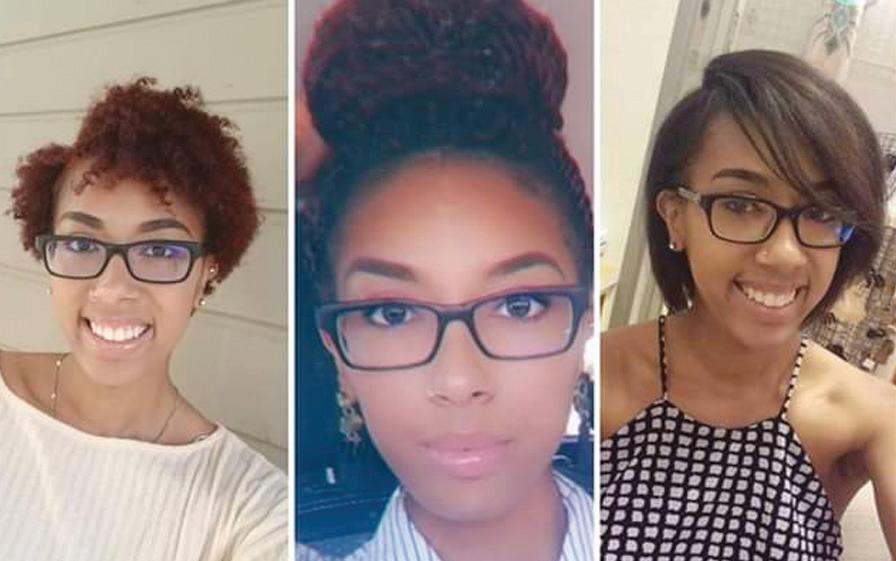
Tyler White shares in the latest viral challenge known as the “hair challenge” on

RIP Randy O’Jay. When I tell you that my heart was torn into itty bitty pieces upon learning that longtime radio man Randy O’Jay (Brooks) passed away on Tuesday. You might remember him from his Majic 108 FM days – and if you want to really age yourself, then you can admit that you almost always saw him with the late, great Dr. Jockenstein Either way, he was truly a class act and a delight. As if my heart couldn’t get any heavier because of this pandemic, I looked on Facebook and found out that Randy O’Jay was gone through a flood of tributes. His death wasn’t COVID-19 related, FYI. I know some are suspecting such – but that wasn’t the case. He will be dearly missed by every single person who ever met him – I mean he was truly a joy. I’m sending prayers to his friends, family and the folks who became his family as they shared the airwaves. I’m sad that he’s gone, but he and Dr. Jockenstein probably have a heavenly roll call happening right now. Rest easy, Randy O’Jay.
Babyface vs. Teddy Riley: take one. I know plenty of y’all were furious that the superproduction Teddy Riley was prepared to give us – as a one man band, multiple microphones and a hype man – resulted in a scratch for the long awaited (what, seven days is like 15 years in internet time) and highly anticipated battle with Kenny “Babyface” Edmonds set to feature 20 of their favorite hits. I don’t know about y’all, but based on all that equipment and technology Teddy serves up during his live shows – that Babyface was going to be the root of any issues with using “the internets”… especially when he was so slow to log in. But when he perched up in his studio with an iPod and a microphone, it was all good on Face’s end. I know folks were frustrated, but I got my life and was able to make it through the weekend because of that tinker toy technology that couldn’t get past the third song. First, I got my first hint that Babyface is an undercover king of shade – which he confirmed during the rematch. “It’s just me. I’m…you know…social distancing” when Teddy’s team said that there might be an interference with whatever was happening on Face’s side of things. And I also learned that Tamar isn’t the only messy sister amongst the Braxtons. Urban America’s beloved deep-belting vibrato vixen Toni has some shady boots in her bones, based on the memes she was producing as we impatiently waited for the battle that never quite was. I had such a good time between Black Twitter and the reenblactments of Teddy’s turn, that I’ve decided that Teddy “threw in the tile (yes, tile)” for the team so that we could have something to kee-kee about through the weekend. Who else can’t get Babyface calmly saying “Teddy…Teddy…Teddy” out of their head as he attempted to communicate?
DJ Nice saved the night. Now folks were acting like the Saturday, non-battle was so tragic, but it was actually an epic win, thanks to DJ D-Nice, who came through and caped on Instagram yet again to carry us through our social distancing frustrations. Listen, when it’s all said and done, Nice needs some sort of national award for how he’s been clutch by way of his turntables throughout these ______________(insert challenging, uncertain, unprecedented, difficult, trying and the few other words they keep rotating in and out across all these commercials) times brought on by The Rona. He went in for the Babyface vs. Teddy Riley battle. How do you win a battle when you’re not a competitor? By spinning their greatest hits so smooth and seamlessly – and having the actual singers of said songs chime in in the comments. My heart will never be right again now that Tevin Campbell told the world that “Can We Talk” is essentially a stalker expressing himself through song. Between the lyrics and the cover art that has lil’ Tevin looking like a straight up creeper staring into somebody’s soul who absolutely does not want to be bothered makes me want answers from Babyface.
Dropped ball on The Beatdown. Speaking of spin sessions, I have kicked myself all week for completely missing the Biko vs. Reminisce ‘Beatdown” battle on IG Live. I was looking for it on Facebook at first. And then when I didn’t see it right away, I got so caught up in revisions that by the time I finally figured out where to go, they both had long since logged off and carried on with the rest of their socially distant lives. I demand a link to the original – or a rematch. I figured it was going to be a close call. At least now I don’t have to be the bad guy. Send me that link or get back in y’all labs and go live for us one mo’ time. Face vs. Riley: the unfinished finale. It only took two days for Teddy and Face to make it back to the ‘Gram for their as-promised battle. Was it me, or did the wait from Saturday night through Monday not feel as long as the 20 minutes it took them both to post a hashtag? I haven’t been so frustrated getting my mother hip to using video chat in Facebook Messenger so she can “see my face” as we socially distance. Sorry to put you on blast Mama, but it’s true. They finally got on and Teddy was still having a few little problems, but they managed to get halfway through – and had a half-million folk tuned in – before technology said lies. IG Live couldn’t handle it, so they say, but I knew when Babyface whipped out that acoustic guitar for “When Can I See You?” that it wasn’t going to end well. Teddy was fit to be tied. Soon after, everything went left and he had to log off. But Babyface jumped back on with an inspirational finale, featuring Whitney Houston and her duets with BeBe Winans and Mariah Carey, which took the win. Sorry Teddy. But Face’s move was so smooth, classic and timely. Don’t get it twisted though, it would have been too close for me to call had Teddy been able to finish.
Impressed with the Prince tribute. Because the tributes have been so hit or miss, I was ready to shade the Grammys’ Prince special for filth when it aired on CBS Tuesday night. But honestly, other than John Legend’s decision to go topless under his blazer, Naomi Campbell’s wig fail and the Memorex of Usher, I wasn’t mad at a single bit of it. Miguel gave me life. H.E.R. hit all those notes, honey. And y’all know how I feel about Gary Clark Jr. Oh, and can we talk about Wendy (from The Revolution) and her guitar slayage? And a barefoot Sheila E brought the house down, and St. Louis’ own Lynne
was there lending her beautifully blended background vocals for all of it! I also spied St. Louis familiar faces Janee Hardy and Debra Bass in the audience.
